






























July 29–August 11, 2023
Open daily from 10am–5pm
Butter Gallery 126 Hurontario St.
Collingwood, ON 705.441.4098
Ryan Sobkovich is a 27 year old internationally acclaimed Canadian artist. Meet the artist and experience a new collection of paintings. Various sizes from small to extremely large corporate sized works available. RYANALLENSOBKOVICH.COM










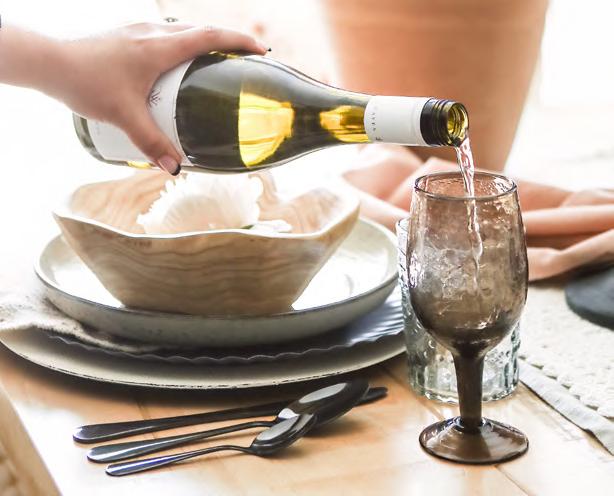
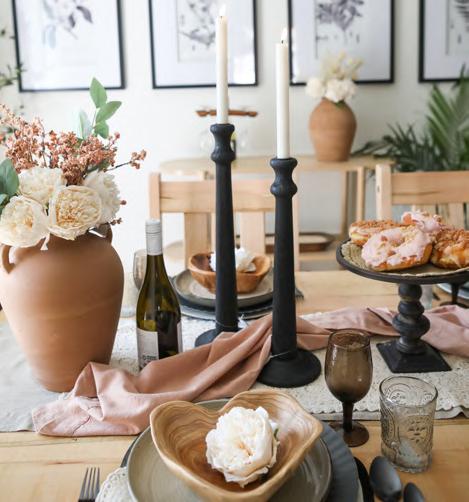





























asino, horse raceway, microbrewery, a

e music and theatre scene, as well as a n theatre and lots of recreational sports
o keep you busy, you’ll never be bored!
Hanover Raceway

Playtime Casino Hanover & Match Eatery & Public House

ee the races from the patio on Saturday afternoons

Live
Music & Theatre @ Hanover Civic Theatre
Unique Shops & Restaurants
Markets & Events @ Heritage Square
Live | Local | Free Join us for Music in the Square

Second and Fourth Sunday afternoon at 2pm
hanover.ca | hipphanover.ca




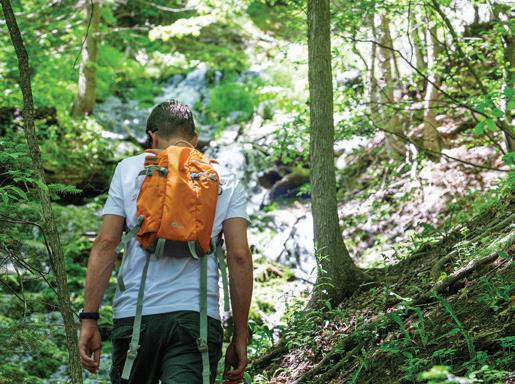
































































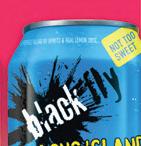






























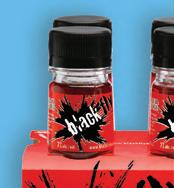





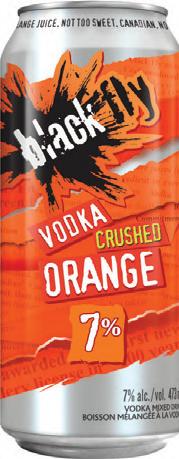




























Join us for an unforgettable meal where every bite is accompanied by breathtaking views.

Opening June 26th.
Elevate your taste buds at Summitview Pavilion


When my children were younger, the arrival of summer entailed a painstakingly planned 90-day bucket-list, filled with cottage getaways, boating adventures, biking, hiking, camping—everything precisely outlined, colour-coded and scheduled. But the trouble with overscheduling is that it leaves no room for spontaneity and before I knew it, summer was full…
text saying, “Heading to the Village for some live music—figure out dinner on your own!”
Cara Williams Editor-In-Chief cara@escarpmentmagazine.ca
I credit my teenagers (well, my youngest is technically 12, but she’s a bona fide teen-in-training) with encouraging me to chill out and embrace the flexibility of the unplanned. Of course, they now have robust social commitments of their own, plus jobs, sports and sleepover camps. As a result, my husband Dak and I find ourselves frequently pondering whether and when we should make plans, considering the slim possibility that the kids might be available to join us. As it turns out, we’ve stumbled upon the delightful art of doing sweet bugger all. On the other hand, we’ve also embraced the thrill of embarking on spontaneous escapades. Because what’s the point of footing the bill for their cellphones if we can’t send them a

And it’s glorious! I’ve relearned how to savour summer; allowing the waves to guide my boating adventures; hopping on my bike without a destination in mind and letting the roads lead me to hidden gems and unexpected ice cream stops. By loosening the grip of my schedule, I’ve discovered that unforgettable summer memories are often the ones that happen impulsively.
We hope this issue of Escarpment will perhaps inspire you to abandon your meticulously planned calendars and embrace the carefree nature of this glorious season. We’re so lucky to live on the Escarpment, where a multitude of activities (or the option for relaxation) awaits us right at our doorstep. Whether you choose to wander amongst the wetlands, take up rock climbing, or simply enjoy the warmth of the sun, our hope is that this collection of articles will guide you towards your best summer ever.




PUBLISHER/OWNER
Clay Dolan clay@escarpmentmagazine.ca
EDITOR- IN - CHIEF
Cara Williams cara@escarpmentmagazine.ca
ART DIRECTOR
Bradley Reinhardt bradley@escarpmentmagazine.ca
GRAPHIC DESIGNER
Alyshia Laube alyshia@escarpmentmagazine.ca
Sara Angelucci, Mark Berens, Cale Best, Harvey Bodach, Giovanni Boni, Christan Bosley, Ashley Boutin, Robert Burnaccioni, Malcolm Carmichael, Craig Cosby, Janet Dawson, Deena Dolan, Bonnie Dorgelo, John Fearnall, Bill Elder, Andrew Forget, Chris Fry, Caroline Gauthier, Heather Goldsworthy, Viveca Gravel, Joel Gray, Hannah Harradine, Nick Hamilton, Lisa Hannaford, Tyler Hickling, Tierney Hill, Marc Huminilowycz, Sue Kolundzic, Anton Kulyk, Deborah Lalande, Matthew Lidbetter, Kate MacLennan, Marcia Masino, Gary McGuffin, Michelle McMillan, Shannon Craig Morphew, Michael Morris, Cameron T. Powell, Jo Redman, Leanne Scanlan, Jamie Smith, William Tam, Peter Taylor, Desmond von Teichman, Jake Thomas, Aidan Ware, Jody Wilson, Kristie Woods, Shelby Worts, Micheal Yates, Mark Zelinski
MARKETING & ADVERTISING
ADVERTISING DIRECTOR
Geoffrey Cameron 416.910.9649
geoff@escarpmentmagazine.ca
OWEN SOUND / GREATER GREY & BRUCE
Paul Evans 519.372.7766

paul@escarpmentmagazine.ca
info@escarpmentmagazine.ca
OFFICE 519.599.7545
Escarpment® is published four times a year by Georgian Bay Living— Escarpment® Magazine Inc. 25,000 copies. Distributed free of charge to hotels, shops, clubs, businesses and services all throughout Simcoe, Grey & Bruce Counties.

Paid Subscription holders have guaranteed mail delivery. Attention Postmaster: Please direct post office returns and changes of address to GBL—Escarpment® Magazine Inc., 183 Marsh Street, Unit 4, PO Box 107, Clarksburg, ON, N0H 1J0
Subscription rates: 4 issues (one year), $14.50 HST incl. or 8 issues, (two years), $28.00 HST incl.
No part or portions of this publication may be reproduced without written permission of the Editor. Opinions and statements written by contributors of Escarpment® and that appear in this issue or others are entirely their own responsibility and do not necessarily reflect the opinions of the owner of GBL—Escarpment® Magazine Inc.
Georgian Bay Living—Escarpment Magazine® and Escarpment® is a registered trademark of Georgian Bay Living— Escarpment® Magazine Inc. ©2022 All rights reserved. Escarpment is printed in a Canadian facility that operates in strict compliance to environmental concerns.
escarpmentmagazine.ca


One thrill of mountain biking is cycling over rough terrain, but the local off-road community has encountered some extra challenging obstacles, forcing it to change its course.

 by Kate MacLennan | photos by Jody Wilson
by Kate MacLennan | photos by Jody Wilson

Imagine transporting yourself back an astonishing 450 million years—to a time preceding the existence of humanity and the majestic reign of dinosaurs—when Earth was dominated by the supercontinent, Pangaea. It was during this era that certain geological processes were set in motion, ultimately leaving behind the remnants of an ancient Paleozoic sea floor, now known to us as the Niagara Escarpment. In geological jargon, this impressive Escarpment, or ‘cuesta,’ is a ridge comprising gently tilted layers of rock, featuring a long, gradual slope on one side and a comparatively steep cliff or scrap on the other. In the realm of mountain biking, it can only be described as a paradise waiting to be explored.
Mountain biking is a hot topic these days, especially in these parts. While the sport isn’t new, it has certainly come a long way since the early 1990s, when I would straddle my Raleigh Big Horn after school and rip around on the Escarpment near Owen Sound. I had no idea how ineffective that bike was for the task at hand; stock tires; cantilever brakes; no suspension. It even had a kickstand (ridiculous), and never once did it occur to me to wear gloves or a helmet (even more ridiculous). All I cared about was being out there in the fresh air and surrounded by nature, rolling over roots and rock, and hitting the same loops over and over to see if maybe this would be the day I could make that climb without having to get off my bike, or take that corner without braking. The endorphin rush and the freedom were intoxicating, and the experience sparked a passion for the outdoors and for biking that has never waned.
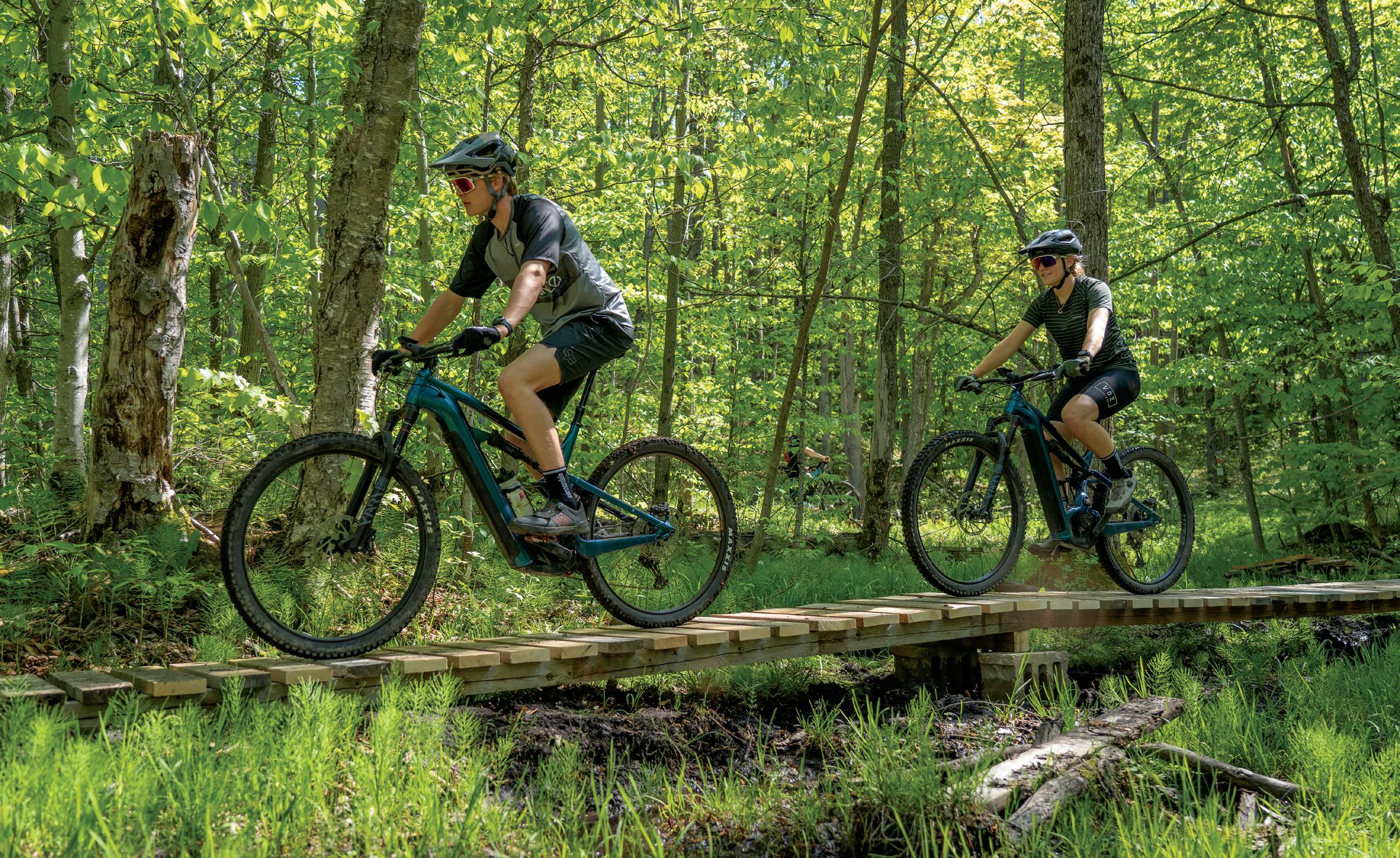
The 1990s were just as formative for Chris Wall, Director of Community for Collingwood Off Road Cycling (CORC).
Around the same time that I was discovering mountain biking, he was calling it a wrap on years of ski racing and playing high school football in Minesing, looking for a new activity, bought a mountain bike. “Mountain biking was still kind of new then, and it basically consisted of riding service roads,” Wall recalls. “Then me and some other guys, we thought, why don’t we create a section of trail so we don’t have to ride service roads.”
By the time he was in his early 20s, Wall was actively building an elaborate trail network behind Snow Valley, naming all the runs after Seinfeld episodes (think: “Can’t Stand Ya”).
“It was like art, and the forest was like a blank canvas where I could paint my vision of what it should all look like. What I see when I build is not what another builder would necessarily see. I loved walking into the woods and going, ‘Ooh, I could see the trail going through here, then there’s a really cool, naturally occurring feature over there… so now do I get from here to there without going in a straight line, because straight lines are boring,” he says, laughing, then adds, “Some of those trails are still there. A guy who lives there told me he rides ‘Mr. Marbles’ all the time.” Chris’s passion for the outdoors—including hiking and mountain biking—led him to Collingwood, which has some of the highest elevation in Southern Ontario and where there was a nascent mountain biking scene.
Erik Lehmann, a teacher at Collingwood Collegiate and Director of Trails for CORC, grew up in Owen Sound and remembers watching the evolution of downhill skiing at Blue Mountain, but also observing a subculture of skiers who would mountain bike during the summer. “It was mostly guys in their 30s to 50s riding in packs back then. When CORC started six years



ago, part of the mandate was to create an open environment for people to access mountain biking without barriers. That’s one of the biggest shifts we’ve seen now with mixed groups, women’s groups, and complete families riding bikes together on these trail networks. The coolest thing, to me, is we’re seeing groups of kids showing up, finding their buddies, and riding together,” says Lehmann.
To be clear: an impressive single-track trail network had been developed around Collingwood and beyond for many years before CORC existed. CORC grew out of that scene as a social club, and helped to establish some organization for the growth, and enhance it by bringing different levels and generations of riders together. Today, mountain bikers from Southern Georgian Bay of all ages and abilities can all rhyme off the hot spots: Kolapore, Highlands, Duntroon, Copeland, Dufferin, Horseshoe Valley and the famous—now somewhat infamous—Three Stage, in Pretty River Valley Provincial Park.
“Three Stage is not the place you want to go to learn,” says Wall, despite the fact that 15 years ago he took his partner, Nicole Kertcher, there when she’d just started mountain biking.
“That was my first introduction to being clipped-in, which was the root of the problem [clipping-in refers to the connection between a cleat bolted to the bottom of each shoe and your bike’s pedals]. I fell and broke my arm,” laughs Kertcher, a Territory Sales Manager for 5-Star Sports Canada. “It’s definitely not somewhere for a novice rider. You want bike handling skills and
technical skills to ride in there because it doesn’t take long to find yourself in deep without realizing it. It’s really narrow and turns back on itself. It has rocks and roots and off camber, punchy climbs. It’s just such a vast trail network. You can ride bottom to top, park at the top and just ride down, just do loops—it has everything a mountain biker is looking for and it’s right in our backyard. If you live in Collingwood, within 20 minutes from home you can be at the trailhead.”
According to Wall, the Three Stage network is anywhere from 100 to 150 kilometres of mountain biking trail. It’s known among the best competitive riders in Ontario for its upper loop, some 40 kilometres long. Nearby Trillium Hill, where Lehmann took kids to teach them to climb (mountain bike speak for “ascend”) and descend, is known among the sport’s newest riders as a key training ground. But this past May, many parts of Pretty River Valley, including Three Stage and Trillium Hill, became known for another reason: Ontario Parks closed huge swaths of trails that crossed into parkland, citing damage to sensitive ecosystems, and poorly designed infrastructure that poses risk to public safety—an action, they’ve said, that isn’t necessarily permanent. But, they’d require a formal legal entity to be organized and taking responsibility for the trails before considering re-opening them.
Both Wall and Lehmann readily acknowledge that many places where Three Stage crossed park boundaries, its trails were


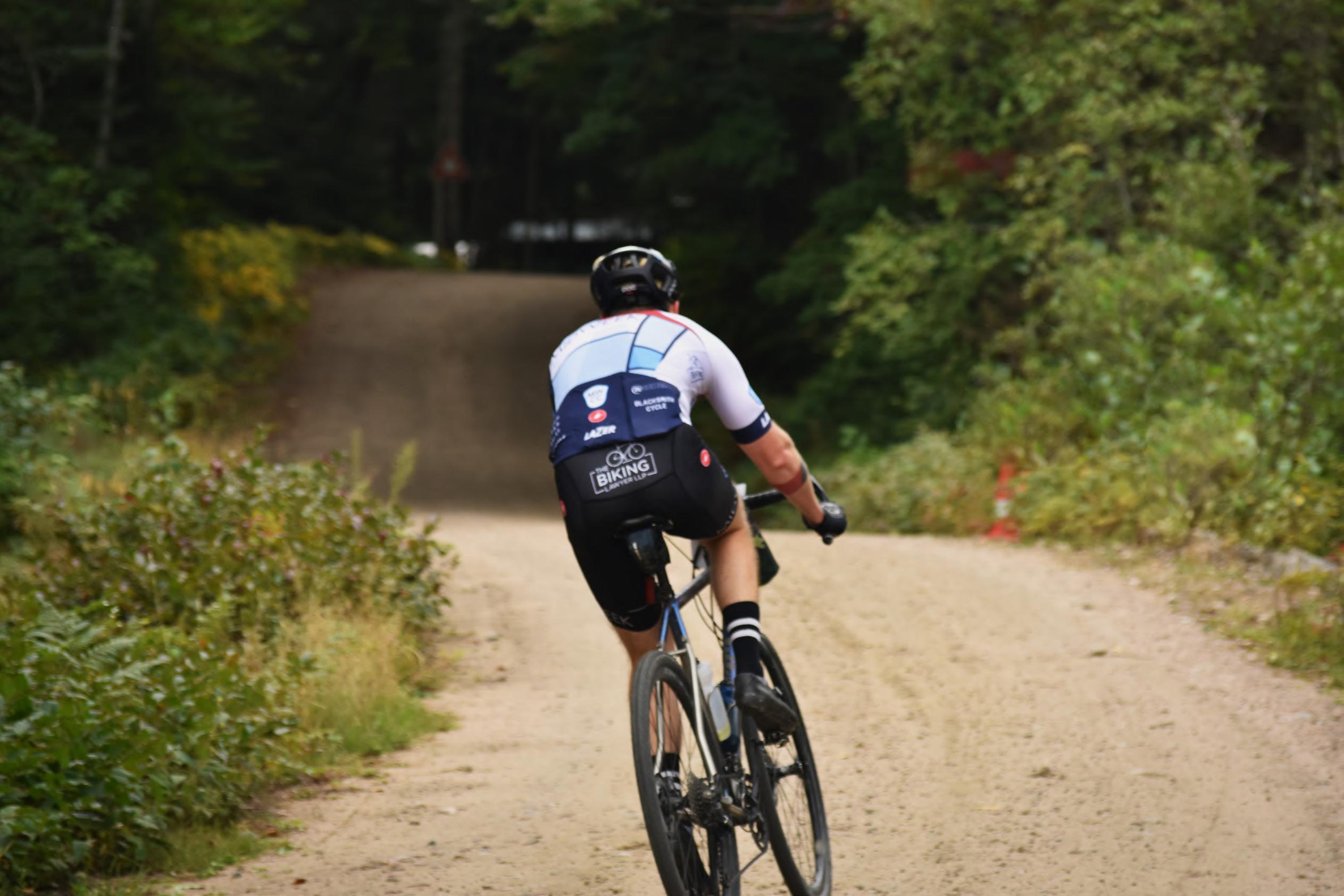
unsanctioned. They’d been worried this news would come one day, but it still hit hard.
“I’ve ridden these trails for 25 years, some of them and, you know, they’re historic,” says Lehmann. “For the last 10 years there’s been some threat of some trails being closed and discussion about who’s looking after the trails at Three Stage. So, over the last five to six years we’ve put systems in place to help with that— we formalized the trail clean-up for Three Stage where we each took responsibility for a certain section of trail. We also made a formal agreement that we weren’t going to cut new trail because that area had reached its capacity. I coach the team at the high school and the local race team, the Collingwood Collective and I teach the kids a culture of staying on the trail; you don’t widen the trail; you don’t move rocks off the trail; and you ride single track. We have dedicated people who block off new offshoots that others have made on the trail because we don’t want a spiderweb—we want larger loops. We have all this stuff working to keep the trails as natural as they should be.”
Closing trails that nurture a love and respect of nature in order to protect it presents a paradox for many mountain bikers. “Nobody I’ve spoken to wants to ruin an endangered plant species or disturb a bird that requires quiet during nesting,” says Wall. “There’s so much value in educating. It would be great to put up a sign that says, ‘This trail is closed during these months because of this reason.’ Then it becomes an informative moment and people understand. If you just put up a sign that says, ‘Trail Closure’ mountain bikers wonder why we aren’t allowed into that area while hikers are—which is also just 20 metres from an active snowmobile trail.”
The closures hit the burgeoning mountain bike community doubly hard given Blue Mountain Resort closed its bike park a couple of years ago at a time when, Wall says, the spot was at a crux when it was really about to explode. Becki Relihan, Director of Resort Services at Blue Mountain Resort cites many factors for the closure—including the pandemic. “A significant reason for the decision at that time was the restrictions on different households being in the same gondola cart. Adapting the gondola operation and removing the bike racks allowed the resort to maximize access to the gondola.”

The resort also took the opportunity to reimagine its mountain biking offerings. “Blue Mountain has been focusing programming on youth and child access to trail riding. An example of this is our Bike Skills Summer Camp. Our Bike Counselors incorporate riding on the mountain, navigating features such as bridges and berms, as well as bike maintenance and caring for your equipment into every child’s experience. This program feeds into the number of people who will grow up knowing and understanding this activity, and how to participate in it safely, which ultimately grows participation in the sport,” says Relihan.
Around the world, the growth of mountain biking is showing no signs of abating. In the U.S., mountain bike trails are showing
increases of 100% to over 500% compared to 2019. There, the market was worth $5.6 billion in 2021, and revenue is expected to reach U.S. $13.8 billion by 2029. More than 12.35 million spectators watched the Mountain Biking World Cup — staged in Switzerland and Italy — back in 2018. And, bicycle tourism is further propelling the global market forward. Whistler’s annual Crankworx mountain bike festival, which brings together the best mountain bike athletes in the world to compete in elite-level competitions in a variety of disciplines, is the largest economic of all major events in Whistler.
Martin Rydlo, the owner of Duntroon Highlands Golf, is passionate about promoting outdoor activities and has included mountain biking as part of his vision for the 300-acre property. “Some of the main trails CORC uses, and are improving upon, are on my property. We lend them equipment, or if they need wood for bridges et cetera, and we’re supportive of making sure the area gets developed in the right way. It just makes sense,” he says. Rydlo believes the province needs to review Three Stage as
an operational park. “Out west there’s a much more progressive way of setting up hikers and bikers to co-exist—you have to think about it when you’re building trails, but they can co-exist.”
He’d like to see the province review Three State as an operational park, thinking about trails, parking, and multi-usage across all seasons. “What’s cool is Grey County is working on a sustainable tourism strategy with a firm, and trails and biking are part of that. A recent study of the area found that the number one reason people come to this area in winter and summer is to be on the trails. We need to be more proactive when it comes to trails, and there’s a whole bunch of things moving in the right direction, but the governments are just starting to recognize this and Three Stage is just the battle front for it.”
Lehmann’s concerned that negativity around mountain biking will dissuade new riders, and frustrated for learners that Trillium Hill is now one of the trails that’s been closed. CORC has been told there are areas of the forest Ontario Parks is willing to develop for mountain biking, both Lehmann and Wall
expressed that the organization is very keen to get into open conversation and work with Ontario Parks to protect both the environment and mountain biking. “Whenever we’re weighing any sort of environmental impact, we have to compare that impact to the benefit of our community. Just getting kids into the woods and off their devices is huge. We have a youth program on Monday nights with 60 kids in it, and we need trails that are accessible but also challenging to them. I used to teach a techbased math class at [Collingwood Collegiate Institute] and got funding to take kids into the woods for a couple days. We’d look at the slope, of the trail, figure out enhanced drainage, and they had a blast,” remembers Lehmann.
Trail building requires, knowledge, creativity, and is a critical part of the culture, he explains, as much to foster respect for the land and build community as to create the essential infrastructure for the cycling. While the Three Stage conversation evolves, CORC is looking at new places for trails, such as developing the Highlands cluster.
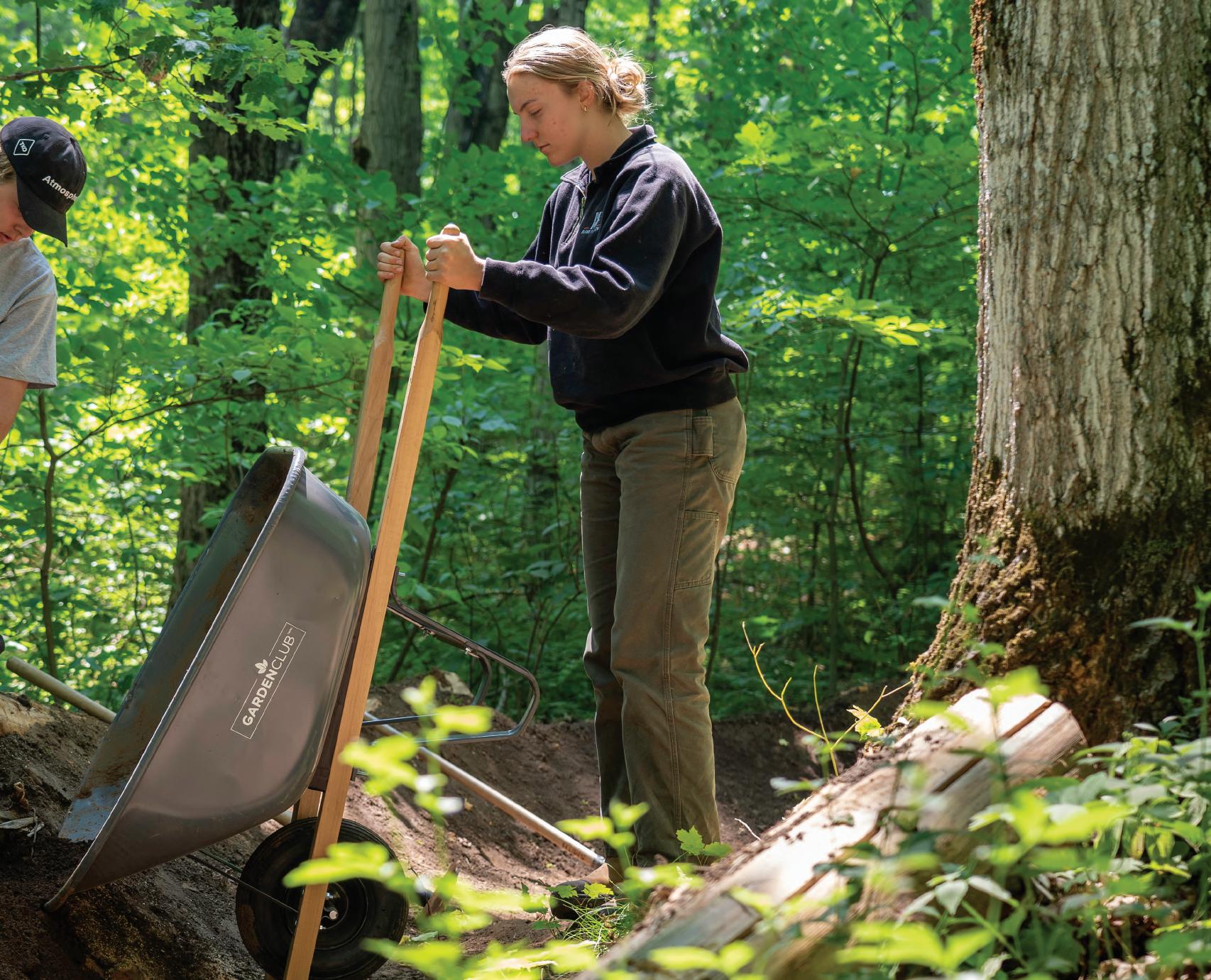
“True single track is non-invasive in the forest, as it is only about a metre wide. The International Mountain Biking Association has trail standards to follow and we take those into consideration and have their team come to work with us and give advice on sustainability and development moving forward,” Lehmann says.
CORC has used machines to cut trail, but typically builds with a toolkit which includes a fan rake, loppers, and a Pulaski—a tool with an axe on one side and an adze on the other. Lehmann says his team hikes first and looks for existing natural lines, like deer track, then will cut small trees under three inches diameter when they can’t route around them. A maple, he notes, is more likely to be left standing than a scrub wood, such as poplar. Other design factors include ensuring or creating proper drainage (riding on wet trails is a major faux pas as it damages both trail and the environment), avoiding bench cutting, and considering the paths of other trails in the area. “My involvement has really been about keeping the trails sustainable,” he says. “But my motivation was really about getting youth involved and the social aspect.”
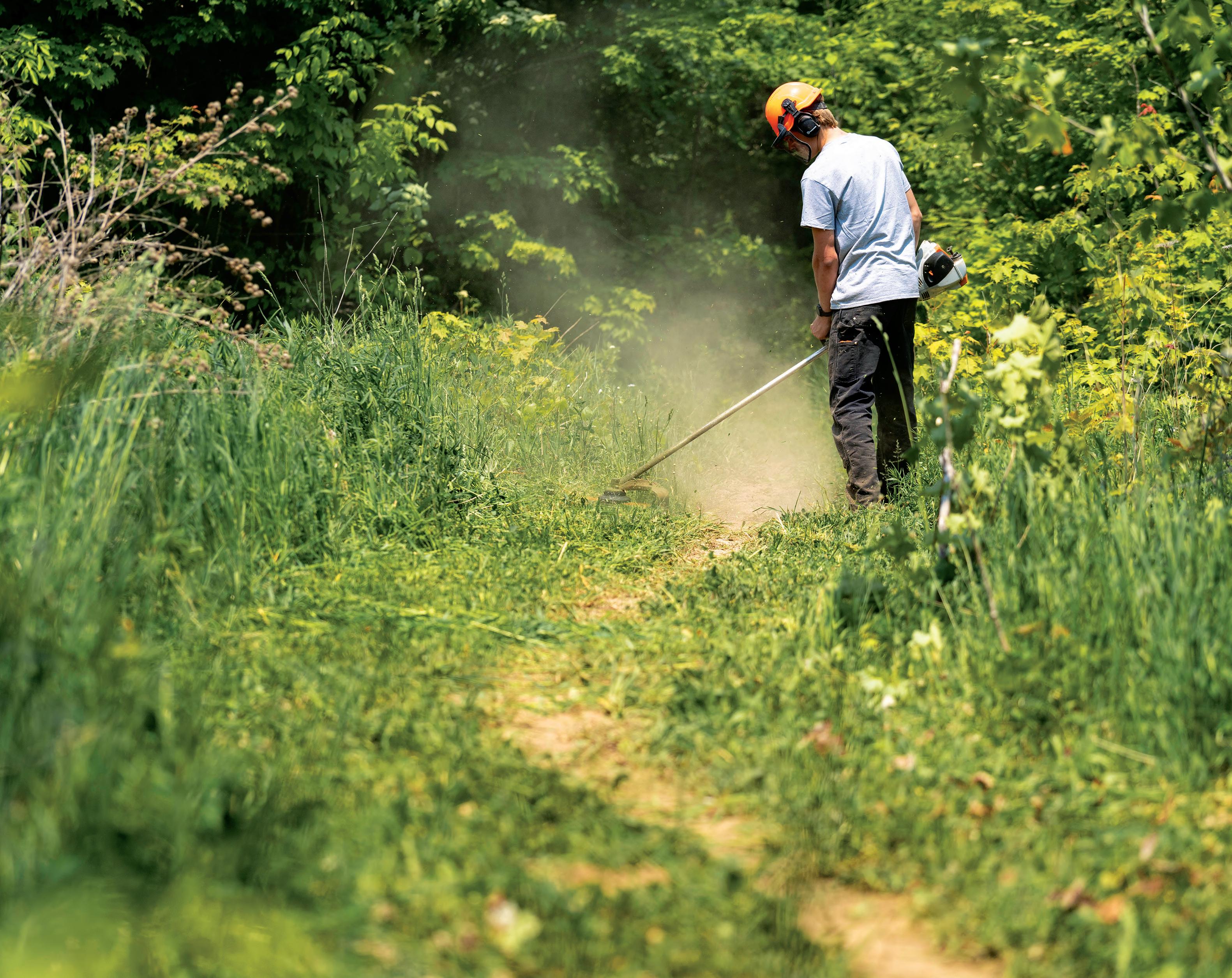
Kertcher used to bike with a local women’s riding group, but
when CORC was established, the group also joined—as did more families and soon it was one big community. The organization’s vibe is still super grass roots, she says. “It has a private club sense but it’s more relaxed. The membership fee is $50, and the $5 registration fee to participate in bi-weekly post-ride socials goes to trail building. There’s no element of prestige.” CORC used to have a policy not to ask bike shops to sponsor social evenings since they get asked to support local events all the time, but Lehmann says the shops came to them. “The feedback we get is that it’s memorable to sponsor a CORC night. We have a really great community and in the last five years it’s really come together—even the holdouts are members now,” he says.
Clearly, this is not a case of build it and they will come.
“Stand on the corner of Sixth and High Streets in Collingwood on a Saturday and you’ll understand how much cycling means to this town—every car has a bike rack or someone is riding by. I want to see Collingwood identify as the cycling town it has become—it’s not just a ski town anymore.”







The sport of climbing can seem way out of reach for newcomers—but it doesn’t have to be. This basic guide to climbing, as well as the different styles, techniques, and jargon, will hopefully remove some of the mystery and make it easier to get climbing.
words and photography by William Tam

Often described as a vertical puzzle, rock climbing provides a mental and physical outlet that almost anyone can enjoy. You may have seen the sport’s debut at the 2020 Tokyo Olympics or photos of climbers hanging from ropes hundreds of feet above the ground. At its essence, climbing is a sport in which participants ascend vertical walls with the goal of reaching the top. Climbing can be practiced indoors, on manmade walls with engineered climbing holds, as well as outdoors on natural rock formations.
At first glance, climbing may seem intimidating; specialized gear and technical skills can feel like barriers to accessing the sport, but getting started may be easier than you think. Indoor climbing gyms offer lessons, equipment rental and a comfortable temperature-controlled environment while learning the ropes. But for those who prefer to be outside, hiring a local rock climbing guide is the best way to hone your skills. Whether you are a complete beginner or seasoned climber, several local guiding companies offer half and full-day outings along the Escarpment.
So, what do you need to get started with rock climbing? Well, it depends on the style of climbing you plan to do. Bouldering is the simplest style of climbing because it doesn’t involve ropes or harnesses as the climbs are not high. Boulders are typically eight to 15 feet tall and the falls are protected with crash pads which are made of high-density foam to cushion a fall. Styles of climbing that do require a rope and harness are: top roping, sport climbing and traditional climbing. Here the climbing rope is the climber’s lifeline. Specifically made to stretch and absorb, climbing ropes are constructed using multiple strands of smaller ropes that can withstand dynamic forces. These strands (known as the core) are encased and protected by thicker strands of rope (known as the sheath) which can withstand abrasion. A climbing harness is what connects the climber to the rope. Harnesses are generally padded around the waist and under the legs for comfort.
An anchor is any device or method for attaching a climber, a rope, or a load above or onto a climbing surface—typically rock or ice—either permanently or temporarily. Anchors must be set up beforehand; the gear required to build the anchor depends if there
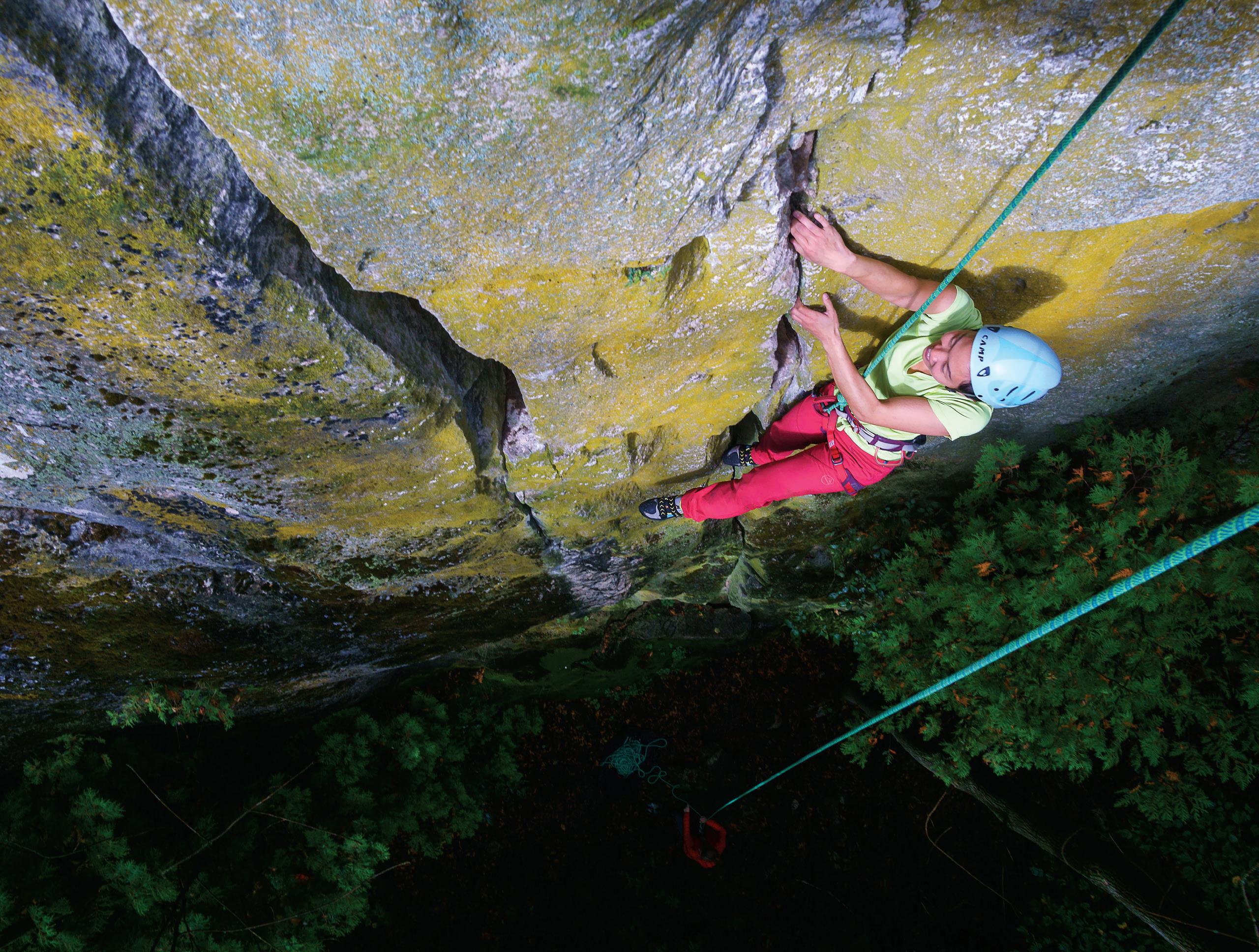


are bolted anchor loops at the top of the route or not. Carabiners, which are metal loops with spring-loaded gates that can withstand high dynamic forces, are used to attach the rope to the bolted anchor loops (typically two).
Two popular areas for learning rock climbing are Metcalfe Rock near Collingwood and Rattlesnake Point in Milton. Both climbing areas (known as crags) are well suited for beginners and in close proximity to towns with après climbing beer and food. More importantly, both crags have teaching stations at the base of the cliff and easily accessible anchors at the top to set up top ropes. Top roping is one of the most enjoyable ways to learn climbing: the climber is tied into a rope that runs through an anchor at the top of the climb and back down to their belayer which eliminates any potential for large falls. A belayer is someone who is attached to a belay device on the other end of the rope and takes out excess rope from the system while the climber is ascending.
For sport climbing, an established route will have bolts already drilled along the route as well as bolted anchors at the top. The climber is tied into the rope and must clip the rope to the bolts as they ascend. Sport climbers use quick-draws in order to clip the rope to the bolt. Quickdraws are two carabiners attached by a sling; one carabiner is clipped to a bolt and the other carabiner is clipped to the rope. If the climber falls, the rope will be caught by the last quickdraw that is clipped to the bolt.
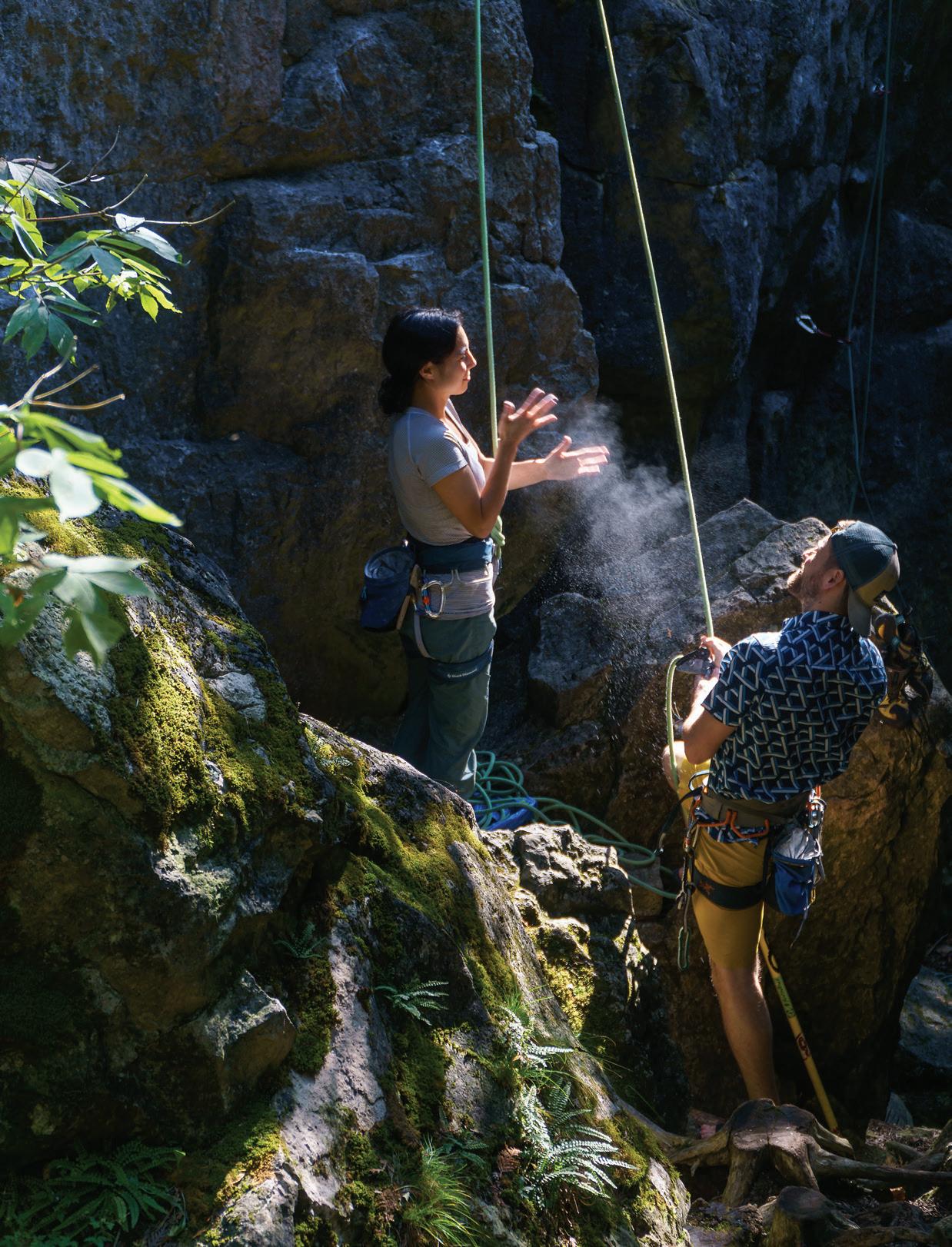
Traditional (or trad) climbing does not use bolts; instead the climber uses removable metal pieces (known as gear or protection) that can be wedged into cracks or pockets along the route. The climber must clip the rope to the gear using quickdraws and an anchor must be built at the top of the route. The gear is retrieved by the last person climbing the route.
All three styles of roped climbing require a climbing partner to belay using a belay device: a friction-based device that stops the rope when the climber falls. The belayer must pay attention to the climber and take excess rope out of the system using the belay device—the climber’s life is literally in the hands of the belayer! Note that sport climbing and trad climbing are more suited for non-beginners.
Climbing shoes are ideal but not necessary on easier routes for first timers. Climbing shoes have sticky rubber and pointed toeedges to help you stand on small foot holds; they should fit snugly but not too tight. If you fall in love with climbing, be sure to spend the time to find the best climbing shoe to your foot.
A climbing helmet is specifically designed to protect the climber’s head from impacts that come from above, behind and from the side. Sometimes a climber may flip upside down during a fall and a helmet is the best piece of protection for the head. A belayer should also wear a helmet in case debris or loose rock comes off the wall while someone is climbing.
Finally, climbing chalk is very helpful for those with sweaty hands. Chalk, which absorbs moisture, is kept in a chalk-bag that is tied around a climber’s waist or to the back of a harness.
Climbing is more than just muscling your way up the wall.


Successful climbs involve pushing off your feet, twisting your knees, or changing the angle in how you grip the climbing hold. What’s unique about climbing is that the movements that worked for your body may not be the same movements that work for someone else. Your sequence of moves is called beta, and your beta is unique, depending on your height, reach, strength, and flexibility.
Climbing not only provides a physical challenge, but also a mental challenge. Problem solving your way up a route and figuring out the best sequence of hand and foot moves is an excellent brain exercise—like many tasks, climbing is a skill-based sport that is best learned through practice.
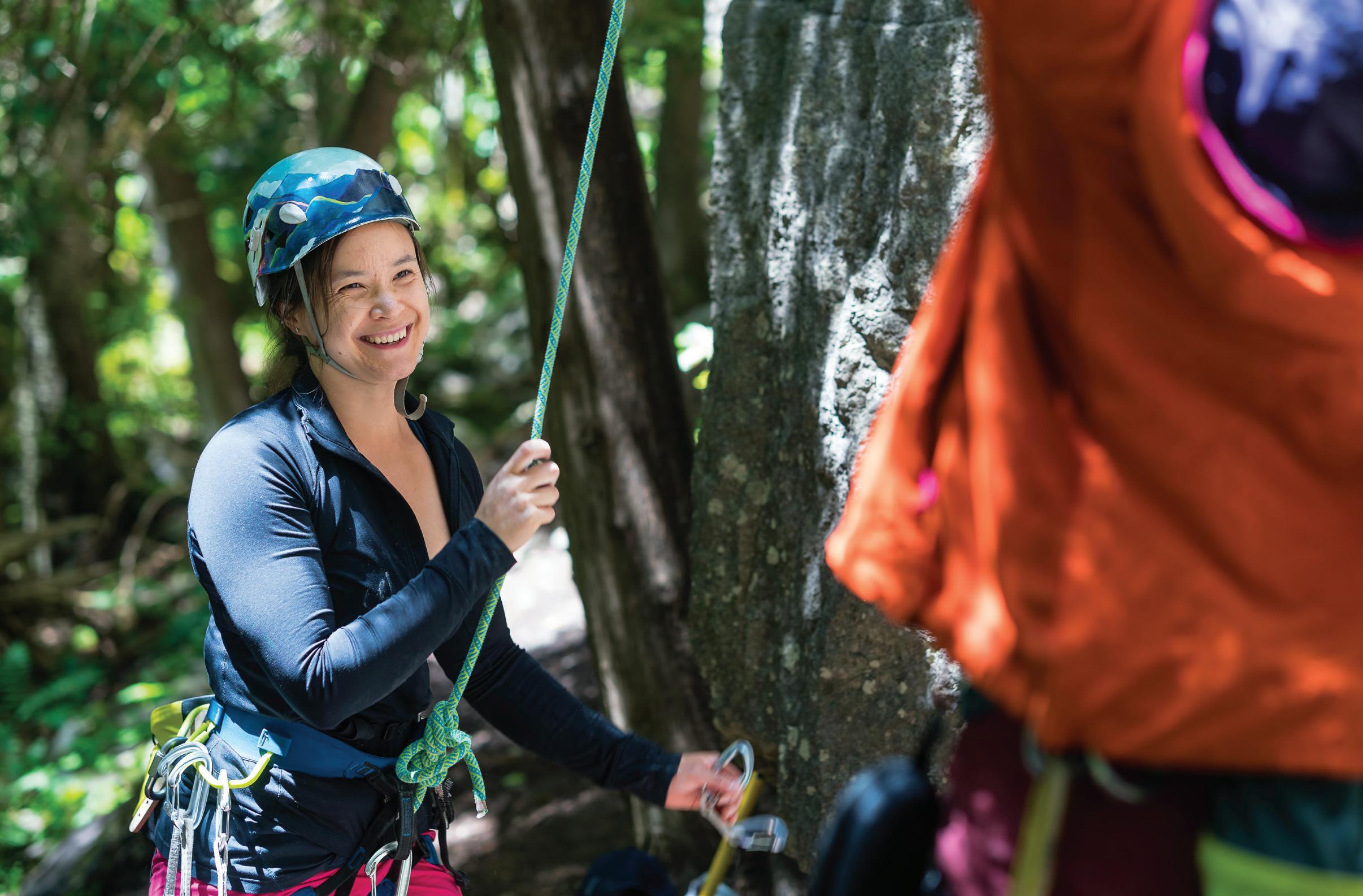
Although climbing can feel like an individual sport, it takes two people to reach the top of a climb as someone needs to be holding the other end of the rope. The relationships that are forged from climbing run deep—having absolute trust in your climbing partner’s ability to keep you safe while belaying is paramount. Climbing partners often share beta with each other while trying to ascend a route. The bonds formed during climbing often go beyond the climbing wall to create long lasting friendships.
The vertical world of rock climbing is massive and extends far beyond the Niagara Escarpment. Climbing style and type of rock varies greatly from one part of the world to the next. For example, the overhanging cave style of climbing on sandstone rock in Kentucky, USA, is very different from the pocketpulling style of climbing on limestone rock in Siurana, Spain.
The Escarpment is known for limestone—white vertical and overhanging walls boast good holds and obvious features. But we have black off-vertical walls (known as slabs) with smaller holds that require more technical climbing. Learning to climb all styles of rock will make you a well-rounded climber and more prepared to tackle climbs worldwide.
This summer, discover what climbing is all about! Whether you are learning in the climbing gym or taking a rock climbing lesson outside, enjoy the process of learning something new. For those who venture outdoors, remember that climbing is a privilege and the outdoor areas we recreate in should not be taken for granted. Climbing along the Escarpment is often found on Crown land, conservation areas, private land, and everything in between. A non-profit, volunteer organization known as the Ontario Alliance of Climbers (OAC) maintains relationships between landowners/ managers and climbers. The OAC organizes environmental clean ups, climbing festivals and bolting projects but more importantly the OAC’s mission is to keep open access of climbing areas in Ontario. Consider signing up to join the OAC for their worthy causes and be part of a climbing community right in your own backyard. Climb on!
DISCLAIMER: This is not an official guide, nor instructions on how to rock climb. Climbing can be dangerous and should be done at your own risk—it is advisable to employ a certified instructor when learning to climb.


People always gathered in Collingwood to celebrate a side launch. Why? For over a century, the locally-built ships that launched sideways into the harbour were a symbol of Ontario at its best: a hard-working place of grain, grit, rocky trails, rich soil, forest and big water. Where people appreciate well-crafted beer made for them.


















Touted as a hidden gem, Mad River Golf Club is poised for discovery as this summer, the club plays host to the prestigious 2023 Canadian Women’s Mid-Amateur Championship, presented by BDO.
 by Cara Williams
by Cara Williams
ITUATED ON THE DOORSTEP of the Niagara Escarpment in Creemore, Mad River Golf Club features a mixture of tree-lined fairways and links style fescue, flanked by rolling farmland. A multifaceted playing experience, clever golfers must use every tool in their toolbox to meet the
challenges presented at each hole—club selection is paramount and a creative short game is crucial. Designed by the late Bob Cupp, the course is demanding due in part to the elevated greens, strategically positioned ponds, as well as time-of-day play. “The most striking and memorable element of Mad River’s design is the shadows,” said Cupp. “The land is a series of substantial
mounds or small ridges that provide excellent counter slopes, resulting in superb golf.”
This July, Mad River Golf Club will test an international field of golfers July 24-27 as the club hosts the prestigious Canadian Women’s Mid-Amateur Championship (Mid-Am) presented by BDO. “Mad River was chosen by Golf Canada,” explains tournament Chair, Susan Quigley. “They looked at Mad River as a world-class golf course, often ranked the top 50 in Canada, top 10 in Ontario and the highest ranked course in the Georgian Triangle. So, we offer the perfect spot to host such a prestigious event.”
This will mark the first year that Golf Canada has chosen to sponsor the Mid-Am as a standalone event—in previous iterations, the tournament was held alongside the Women’s Senior or Women’s Amateur Championships. 2023 also marks the first time Mad River will host a national championship. “We’re very excited because we will have the top female golfers from across Canada and the US,” says Quigley. “We’re excited to showcase

our facility and our community. We’ve got a lot of support—our members have enthusiastically stepped up to volunteer and offer financial assistance.”
The championship runs over four days and gets underway with an official practice round, followed by three championship rounds in a 54-hole stroke-play competition. Not only does a great deal of pride come with capturing a Mid-Am win, taking top spots also earns exemptions into the Canadian Women’s Amateur and US Women’s Mid-Amateur tournaments. “The winners get automatic entry into future events,” says Quigley. “Kristy Henry is our club champion and we are very excited to have her represent Mad River.”
No stranger to competition, Henry grew up competing in the Ontario junior golf circuit. She was an all-round athlete when she attended Collingwood Collegiate Institute and was named female athlete of the year as a senior. She went on to attend Daytona Beach Community College where she was a two-time All-American and helped clinch back-to-back NJCAA national








titles. Kristy earned a golf scholarship to the University of Central Florida and after graduating, returned to her Ontario roots. “I used to work in the Mad River Pro Shop,” laughs Henry. “I joined as a member over 10 years ago.” With an international field of golfers set to descend upon Creemore, Henry is eager to showcase her home club; “The course is in great shape and it’s only going to get better. I truly believe it’s one of the best golf courses in Canada. I’m extremely proud of how welcoming and supportive our membership has been towards the event and thankful for the number of volunteers that have stepped up. It’s going to be a great week.”
Representation from around the world is expected, with an exceptionally strong field of Canadians. While any female aged 25-and-over with an official handicap index of 12.0 or less is eligible to register, the event has attracted well-known names like Etobicoke’s Terrill Samuel. Samuel won the coveted crown at the 2022 Women’s Senior Amateur championships at Royal Dornoch in Scotland. Thornhill’s Judith Kryinis already has a Mid-Am
and Senior Championship to her name, and BC’s Shelly Stouffer began her 2023 season by capturing both the B.C. Women’s MidAm and Mid-Master titles. “Don’t underestimate these ladies,” says Henry. “These women are amazing. Mad River is a tough course so it’s going to be a great show.”
Spectators are welcome—tickets are not required, nor are advance reservations. “Spectators can just show up on the day,” says Quigley. “The practice round is on the Monday with early rounds on Tuesday and Wednesday. The finals will be on Thursday. There’s no entry fee, and there will be some great golf.”
“This is such a great area,” adds Henry. “I’m excited for the golfers and their families to experience all of Clearview Township. Our grounds crew has been putting in the work and it shows. We’re very lucky to have this level of golf in our backyards.”
The Canadian Women’s Mid-Amateur Championship, presented by BDO, takes place at Mad River Golf Club in Creemore, July 24 to 27. To find out more about the tournament please visit golfcanada.ca and madriver.ca





IN THE REALM OF FULFILLING DREAMS, the story of Tyler “Hype Guy” Boyle stands out as truly inspiring. Hailing from humble beginnings, Tyler landed a coveted position with the Toronto Blue Jays—from pumping up the crowd and igniting the stadium with energy, Tyler has become an indispensable force behind the electrifying atmosphere.
Tyler grew up in the tight-knit community of Meaford, where he humorously admits to not possessing any natural athletic
abilities. “As a small-town guy, I never truly danced outside of the odd buck and doe party,” he says. But when starting his career as a grade school French immersion teacher, Tyler’s journey took a turn when he attended a teacher’s conference—it was here that he reluctantly enrolled in a dance workshop. Reflecting on that experience, he recalls, “I laughed and danced so hard. The instructor had us doing all these crazy moves and I loved it—I realized that I needed to learn how to do this.”
Upon discovering he had a knack for hyping up those around him, Tyler Boyle embarked on a remarkable journey from small-town wallflower to big league Hype Guy.



Years later while employed at Blue Mountain, Tyler proposed an idea—his concept was to host spontaneous dance parties during special events in the village. “They looked at me like I was crazy, but I knew I could do it and that people would enjoy being a part of it,” says Tyler. From that fateful day forward, he became a sensation. Armed with an abundance of enthusiasm and an undying spirit, he honed his skills as a professional Hype Guy— whether leading the crowd in synchronized chants, or engaging in impromptu dance-parties—Tyler’s energy is nothing short of infectious. Before long Tyler set his sights on the big leagues.
Three years ago, Tyler was approached by the Toronto Blue Jays’ Junior (Jr.) Jays program. Unfortunately, the pandemic would put a damper on those plans, as the sports and entertainment industry came to a halt. “It’s so strange looking back on that time,” recalls Tyler. “We literally were not allowed to dance.” Once Major League Baseball resumed playing, the Jr. Jays reached out again, reigniting the collaboration. Tyler made the trip to the Rogers Centre for a game and a tryout of sorts. Impressed by his contagious energy and ability to rally a crowd, Tyler was offered a job as an official Blue Jays Hype Guy (he even has his own team jersey!).
Catering to kids of all ages, the Jr. Jays program offers an array of activities that keep young fans engaged from the moment the gates open until the last pitch. The fun-filled Outdoor Program commences before fans even enter the stadium, while later on inside the venue, Jr. Jays Zones are found on the 100, 200, and 500 levels, as well as the recently unveiled Park Social in the Outfield District. “One of the activations is now me,” says Tyler. “I work with the mascots and the J FORCE cheerleaders—my job is to hype, activate and energize a public space. It’s my job to change the

mood, stir the pot—and once everyone is hyped, I sneak away and hopefully have left a really positive and high vibing energy behind.”
While Tyler’s impact on game days is undeniable, his influence extends far beyond the confines of the Rogers Centre. He has become an inspiration to those around him, reminding us that with passion and perseverance, we can step outside of ourselves—no matter how small the town or grand the stage.
“The reason that there’s magic in what I do is because I encourage people to be different,” says Tyler. “Add your own style—you can’t possibly do this wrong and nobody cares what you look like. And if they do, you might as well give them a show. It’s not only about creating a safe space but it’s also about encouraging people that it’s okay to do it. I give people permission to be silly. It’s these philosophies that help people to buy in—it helped me buy in and create this amazing experience and to dance—as a male, in Grey County. And move my body without fear and without needing anything other than joy, expression and entertainment. I’ve had people come up to me in tears after a show because they had no idea that they could let themselves do that in public and actually have fun.”
Tyler’s transformation from a small-town wallflower to becoming an indispensable member of the Toronto Blue Jays organization stands as a testament to the remarkable potential of personal reinvention. His boundless energy and contagious spirit has elevated the fan experience, creating a lasting legacy as a Hype Guy extraordinaire. So, next time you find yourself at a game, keep an eye out for Tyler—the man who turned hype into an art form and made his small-town dreams soar among the stars of the baseball world.
For more information on Tyler, check out Tylercboyle.com
Southern Georgian Bay's local, full-service equine practice since 2015
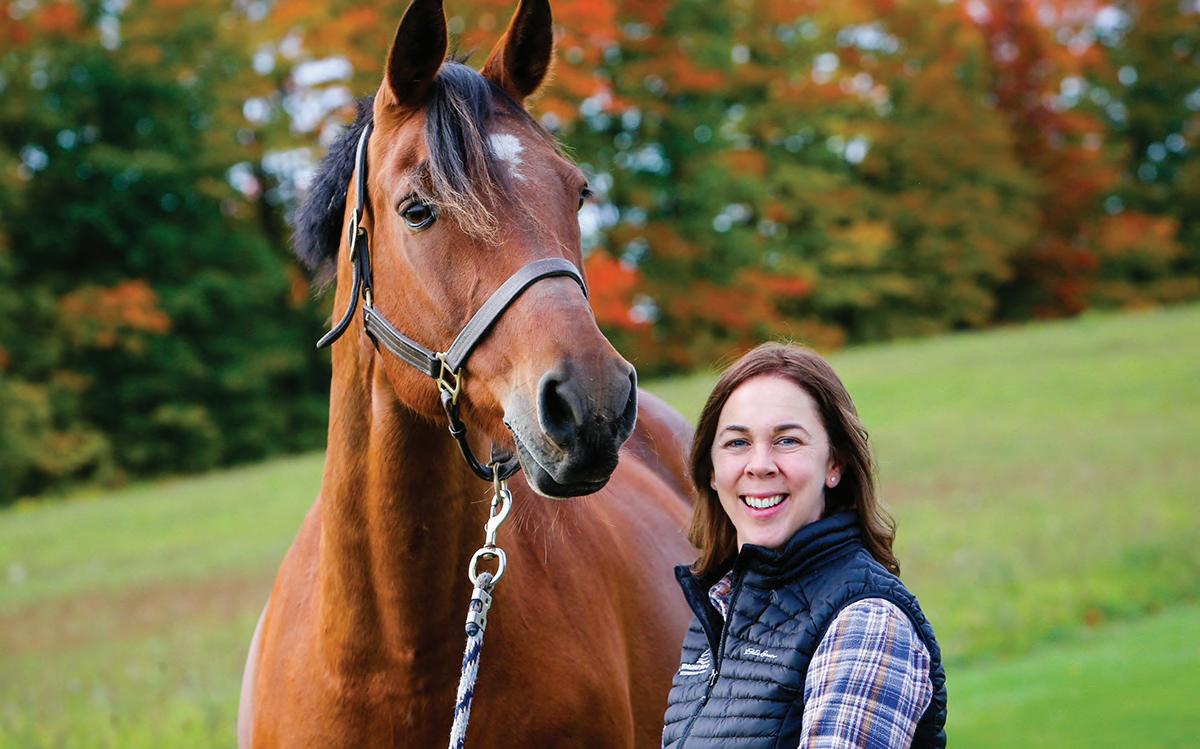
FAMILY FARM
weddings events

sleigh/wagon rides
horse boarding
519.240.0660

615852 3rd Line, The Blue Mountains, ON valleyridgefamilyfarm@gmail.com

Each summer, outstanding local, regional and national performers converge to deliver transformative experiences at music festivals—this year, Summerfolk, Hillside, Mariposa and Sweetwater will no doubt have a lasting impact on festivalgoers.

words and photography
by John Fearnall
IT MAY SEEM FAR TOO OBVIOUS to begin a piece about festivals by stating I would not be writing this piece if it wasn’t for a festival. But, for me, that’s where it starts.
My first Summerfolk was a transformative experience—it pointed me in a new direction that over the next 30 years led to this piece. In between these two moments, I had many chances to witness other transformations of people and communities. All thanks to music festivals.
Growing up in Owen Sound, I knew Summerfolk existed, but I didn’t think it was for me. You see, I was a bit of a headbanger in my high school years. My only concert was Van Halen at Exhibition Stadium in Toronto. Years ago, Summerfolk had a hippie-ish reputation (some Owen Sounders still refer to it as “SummerToke”). But during my last summer of high school, this changed. A friend had two complimentary weekend passes and asked me to go. Although I didn’t know what to expect (other than the aforementioned hippies), I said yes. So, I was shocked when I arrived at Kelso Beach Park on the third weekend in August to see it transformed; craft and information tents; food booths; and stages filled up what was usually a quiet park.







As Summerfolk is a family-friendly event, the site features a large children’s area with lots of programming for kids. For the adults, there is a beer stage and wine bar, as well as two additional stages for music and dancing. Its craft village is always top-notch and there are more than enough food options to satisfy many different tastes. And if it gets too hot, wading into the shallow bay is a great way to cool off.

After exploring the site, we found ourselves parked at the top of the amphitheater overlooking the bay. And that’s where it happened—the music began and I was blown away by the immense talent of all involved. And it just kept getting better as the weekend went on—by the time we were singing “Good Night Irene” on Sunday night, I was hooked.
The next summer I had the chance to add a second festival to my list; Hillside Festival in Guelph. Hillside is similar to Summerfolk, except that it takes place on an island on Guelph Lake that is surrounded by a campground, which means many of the attendees and volunteers are on-site all weekend. Hillside is also a family friendly festival with a bit more focus on local and green initiatives. Hillside’s programming is more eclectic than folk. I was introduced to some great Canadian bands, including the Rheostatics, at that first Hillside. It was also the first time I picked up my camera to try and capture some of the spirit of what I was experiencing.
After that first visit, Hillside, along with Summerfolk, became our go to festivals for the next two decades. And while


Mariposa Folk Festival
JULY 7-9
TUDHOPE PARK, ORILLIA
HEADLINERS:
Tegan and Sara Feist
Rufus Wainwright
KT Tunstall
Matt Andersen & The Big Bottle of Joy Hillside Festival
JULY 28-30
GUELPH LAKE ISLAND, GUELPH
HEADLINERS:
Bedouin Soundclash
Hayden
Martha Wainwright
Summerfolk Music & Crafts Festival
AUGUST 18-20
KELSO BEACH PARK, OWEN SOUND
HEADLINERS:
Loreena McKennitt
Serena Ryder
Matt Andersen
The Lee Boys
Sweetwater Music Festival

Celebrating 20 years!
SEPTEMBER 12-17
OWEN SOUND, MEAFORD, LEITH
HEADLINERS:
Elinor Frey
Roberto Occhipinti Jazz Trio
Mark Fewer
Edwin Huizinga
SHH! Ensemble
Mari Alice Conrad
Monica Pearce
Isaac Chalk
Keith Hamm
Steve Poltz, 2016 Hillside Music Festivalwe attended, my photography became more inspired. Eventually, James Keelaghan, Summerfolk’s Artistic Director, invited me to be the festival photographer. I jumped at the chance. I’ve been capturing the festival for the last 10 years.

At this point I’ve attended so many festivals that I sometimes encounter acts I’ve already seen play. Steve Poltz, who I saw at Summerfolk, was playing an afternoon set on Hillside’s main stage a few summers ago. As he was introduced to a lukewarm round of applause, I could sense that most in the audience had no idea what they were in for. Over the next 45 minutes, I watched Steve win over the audience with his quirky sense of humour and brilliant songs. By the end of the show he had everyone standing and cheering. The transformation was complete when he surrendered himself to the audience and crowd-surfed his way to the finale.
Mariposa is my newest festival experience. Thanks to my involvement in Summerfolk, I was invited to photograph the festival in 2019. Mariposa is widely considered the granddaddy of Ontario’s music festivals and it’s also the unofficial opening of festival season. It’s had many different locations, but its current home is Tudhope Park in Orillia—a similar waterfront site to Summerfolk. It is the current hot ticket as it regularly sells out and has hosted many of Canada’s greatest musicians over the
last few years, including Blue Rodeo, Serena Ryder and Murray McLaughlin to name a few. And, of course, up until his passing, Gordon Lightfoot would regularly show up to perform and enjoy the festival.

Mariposa also brings in world-class performers—one of my most memorable experiences is watching Mavis Staples. Ms. Staples transformed a hot, sunny afternoon stage into a musical history class, all while blowing the roof off the festival. I knew it was a special performance when I saw many of the other musicians standing stage side listening to her stories and songs. I felt sorry for the act who had to follow her.

But, no doubt another successful transformation took place. Because, in many ways, that’s what it’s all about. For one weekend every year, volunteers and staff transform parks into villages. Strangers transform into a community. Neighbours transform into dancers. Crowds into choirs. Musicians into bands. And the people who witness this are transformed—by the music, by the art, by the community. Our everyday looks are transformed into smiles, tears, hugs and laughs.
And, for some, the transformation extends well beyond the festival.
At my second Summerfolk, I heard John Gorka perform a song called “Good Noise”. In it he sings, “Tell me the truth






what are you living for/Tell me why, why are you near/’Cause if you cannot make yourself a good noise/Tell me what you’re doing here.” A few years later, as I struggled with finding a name for my art, this lyric came back to me. I chose the name “Good Noise” as it encapsulates so much of what I am trying to do. And this idea is a guiding force in my life. All thanks to my first festival experience.

Hope you get to experience it for yourself this summer.






SUMMER IS WHEN THE STREETS of Owen Sound’s River District come alive! Street side patios go up, flowers are abundant, and shade from the many trees lining the streets is cast to provide a much-needed break from the mid-day sun.


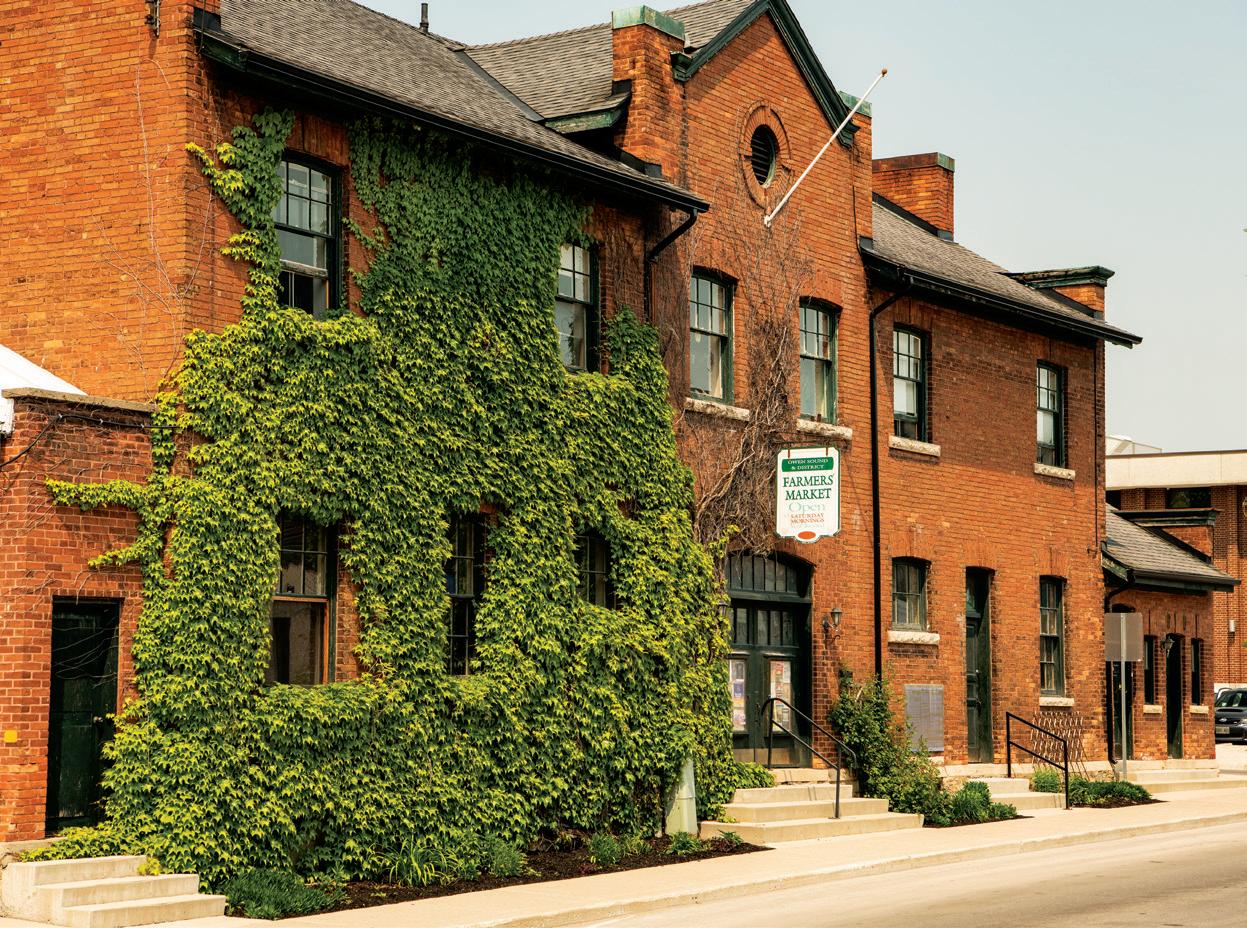
The River District is known for its incredible shops, plentiful services, exceptional music, bountiful art, endless culture, and unequaled green space. Where else can you purchase a farm fresh, hyperlocal, quality lunch and only steps away listen to live music along a riverbank lined with trees?
The River District is a family-friendly environment ripe with activities for the littles. You can join the River District in late June and early September for their Wheel & Rides. Here, kids and anyone interested can learn about road safety, bike maintenance, and more while enjoying a fundraising BBQ, face painting, and the famous children’s tattoo parlour.
A family favourite activity in the summer is the outdoor movie nights at the Farmers’ Market on July 7, 21, and August 11 and 18 starting at 7:30 p.m. These evenings are full of family fun,
food, and great movies. This year the City will feature Moana, Minions, Trolls, and Spiderman into the Spider-Verse.
You will find live music at the Farmers’ Market twice a week in July and August, courtesy of the City of Owen Sound. Summer 2023 will see the reinvention of the regular Music at the Market, with performances starting at 5:00 p.m. on Thursdays instead of the traditional lunch hour. These evening performances will still be at the market, including a cash bar, vendors, and River District businesses promoting lunch and dinner specials. Friday performances will remain unchanged.
Hit the streets on July 8th for the Hottest Street Sale . This street market and festival has been running for over 30 years and brings thousands of eager shoppers to the main street for a full day of shopping and family fun. The renowned Summerfolk Stage is back with a day-long lineup of local artists. The Owen Sound & District Chamber of Commerce once again presents the Community Stage on the steps of City Hall. On-street music is available from local radio stations
broadcasting the entire day. Several vendors within the street sale will also provide fun activities for kids, including the River District, which offers a shaded spot to take a break with tables and endless chalk for the kids.

Don’t forget to mark your calendar with all the other incredible events in the River District. Heartwood Hall is a year-long party with music, different performances, and events. The Historic Roxy Theatre offers award-winning performances by the Owen Sound Little Theatre, endless concerts, film festivals, and more. The Harmony Centre, former Knox Church, offers classes and concerts for the community and office space for those community groups. The Georgian Bay School of the Arts, Upward Art Studio, Intersections Wood Collaborative, and Georgian Bay Woodworking offer regular classes of varying styles, mediums, and techniques. Of course, if you are filling your calendar with events this summer, don’t forget to include the weekly Farmers’ Market that runs every Saturday morning all year.
Was it mentioned that incredible shops line the streets full of beautiful merchandise? If you are in the market for artisan wares, high-quality goods, and anything else your heart desires, you can buy it from independent local entrepreneurs and really get that community feel as they greet you with a smile.

Thinking about getting a bite to eat? The River District is the place to get it. Each eatery brings its own cuisine and vibe, so you will get a different experience from one restaurant to the next. One thing they all have in common is that they will provide you with a great meal and a fantastic atmosphere.
Each season in the River District brings its own incredible events, but nothing is like that summer feeling, walking around in a t-shirt and flip-flops, getting that iced coffee, and sitting on a patio watching the world go by. There is a different pace in the summer, a calmer and more casual feeling that you just can’t beat. The only way to know is to come and spend the day with us here in the River District.






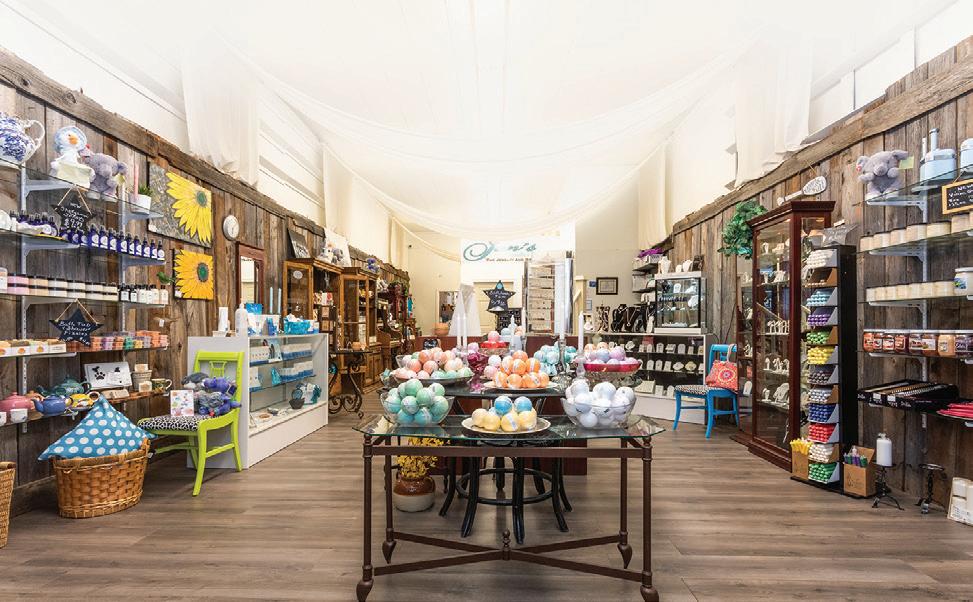





























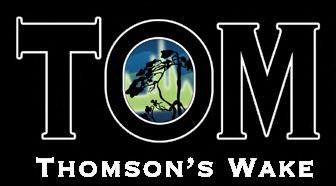






The stage is set for an incredible summer of live music at Blue Mountain with over 100 concerts leading up to the Guitar Trail Music Festival, headlined by Canadian rock legends, Trooper, September 9th.
by Cara WilliamsFROM ROCK TO REGGAE AND AN ARRAY of local and national bands in between, Blue’s Mountain Music Series is a series of free, family-friendly concerts and offers something for everyone this summer. And what a better way to close out a season of grooving, than with a unique hiking and live music experience at the Guitar Trail Music Festival on September 9th. Discover dozens of musicians up the hiking trail, throughout the Village and on the Mill Pond, then get ready as headliner Trooper takes the stage!
“The Guitar Trail Music Festival is the pinnacle event of our Mountain Music Series,” says Patti Kendall, Director, Marketing and Events at Blue Mountain Village Association. “We have over 100 concerts leading up to the Guitar Trail Festival, including Opera Under the Stars, Reggae on the Mountain, Country Vibes and Blues @ Blue.”
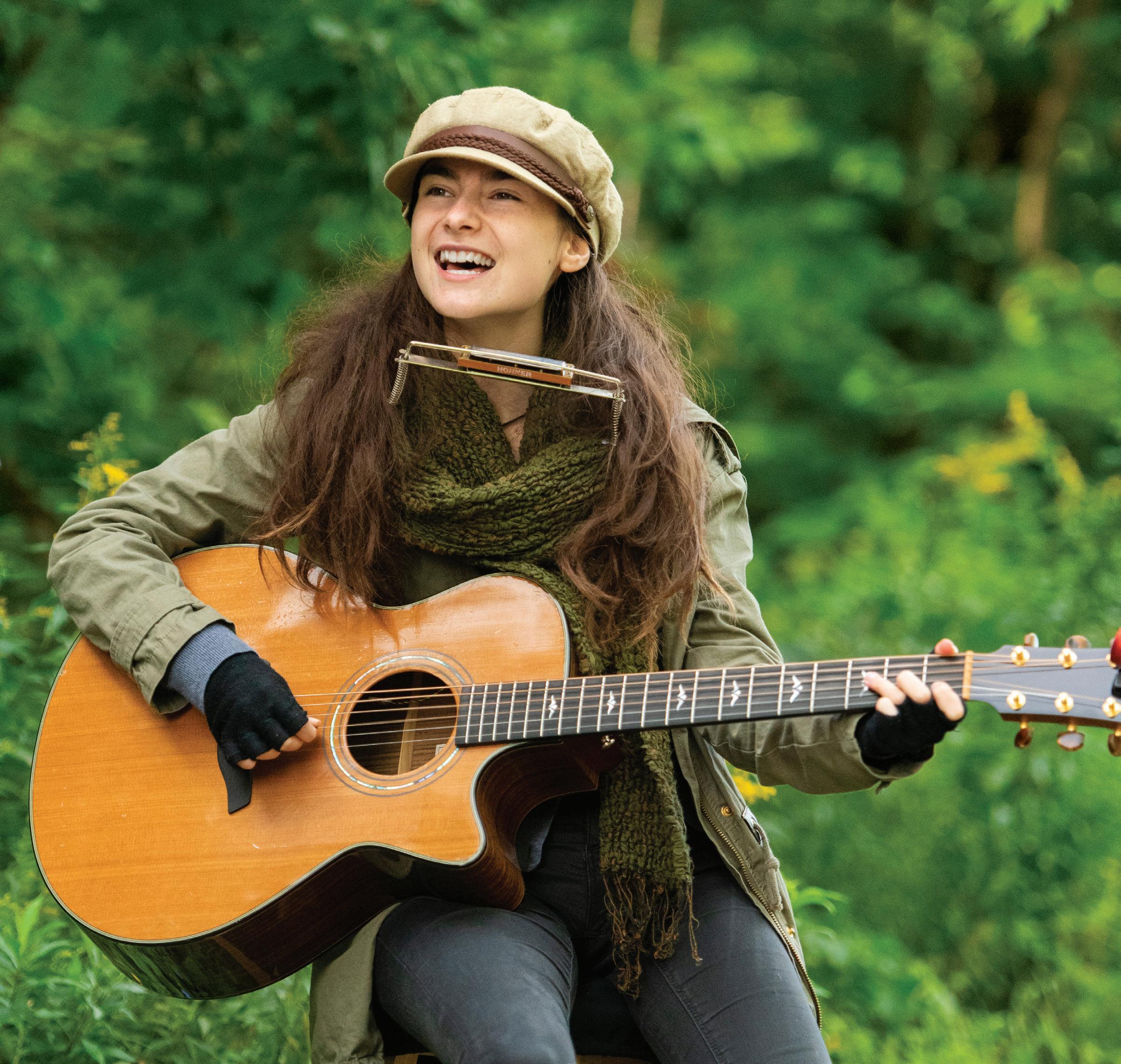
What’s a guitar trail you ask? If you love live music and outdoor adventure, you’ll love this—grab your hiking boots and explore over five kilometres of trails that wind up the mountain, through the forest and across bridges and brooks—along the way you’ll discover dozens of musicians tucked into nature performing with the backdrop of spectacular views of Georgian Bay and the Escarpment. Once you reach the top, decide how you want to get back to the Village—you can choose to hike the full loop or take an Open-air Gondola ride to the bottom (keep in mind hiking trails require an Explore Pass, Play All Day Pass, Ikon Pass or a 5x7, but tickets are not required for Village performances).
Additional stages will be found around the Village, including a floating stage on the Mill Pond (which incidentally, is best viewed from a restaurant patio), featuring singer/songwriter Shane Cloutier. When the sun begins to set, head over to the Subaru Stage where headlining band, Canadian rock legends, Trooper will belt out their retro rock anthems!

“The Guitar Trail has always been a great way to welcome locals back to the Village after a busy summer,” says Patti. “The festival truly celebrates our culture, combining hiking, live music, outdoor adventure, patios, multiple stages and incredible vistas, all tied up in one day.”
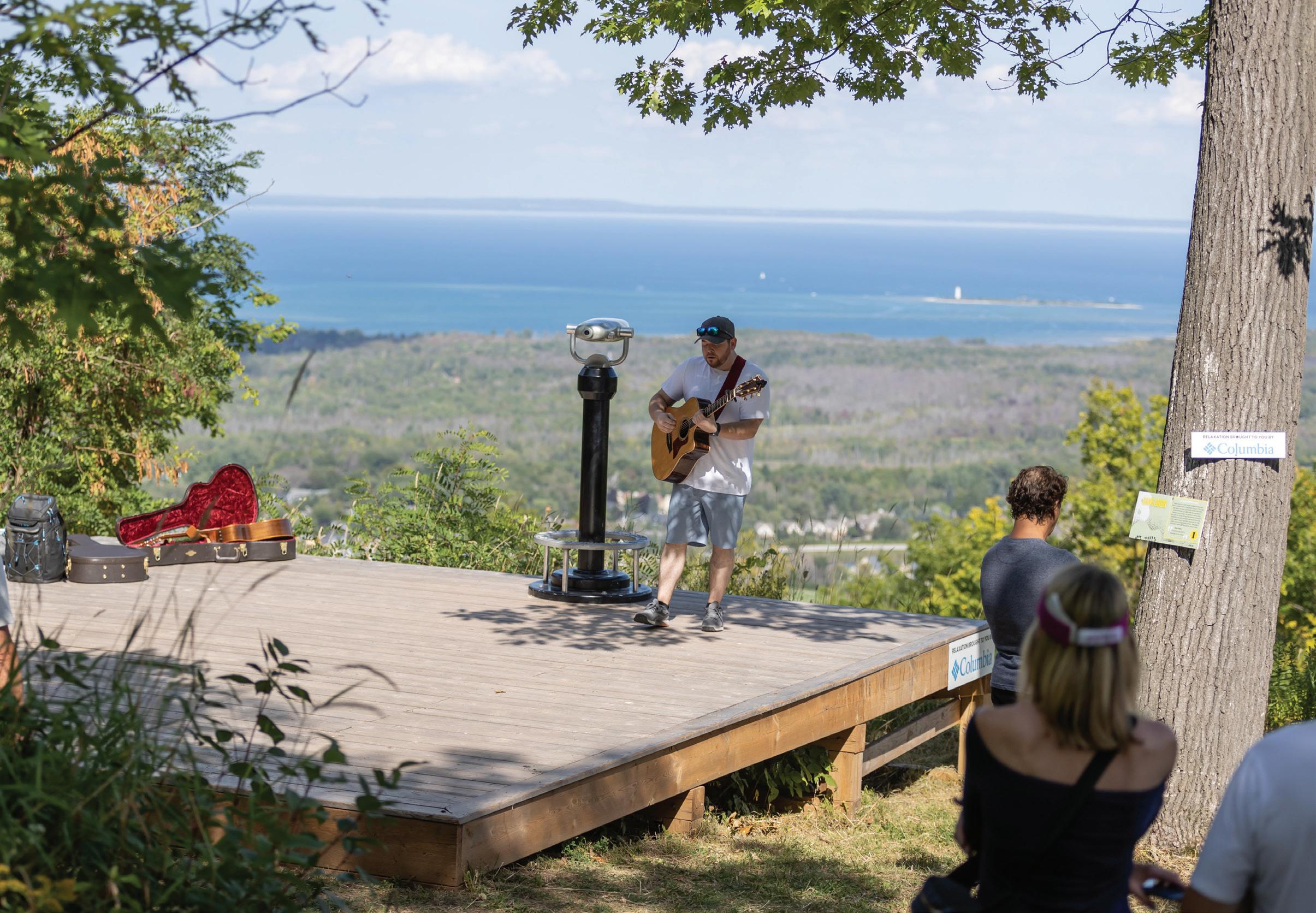



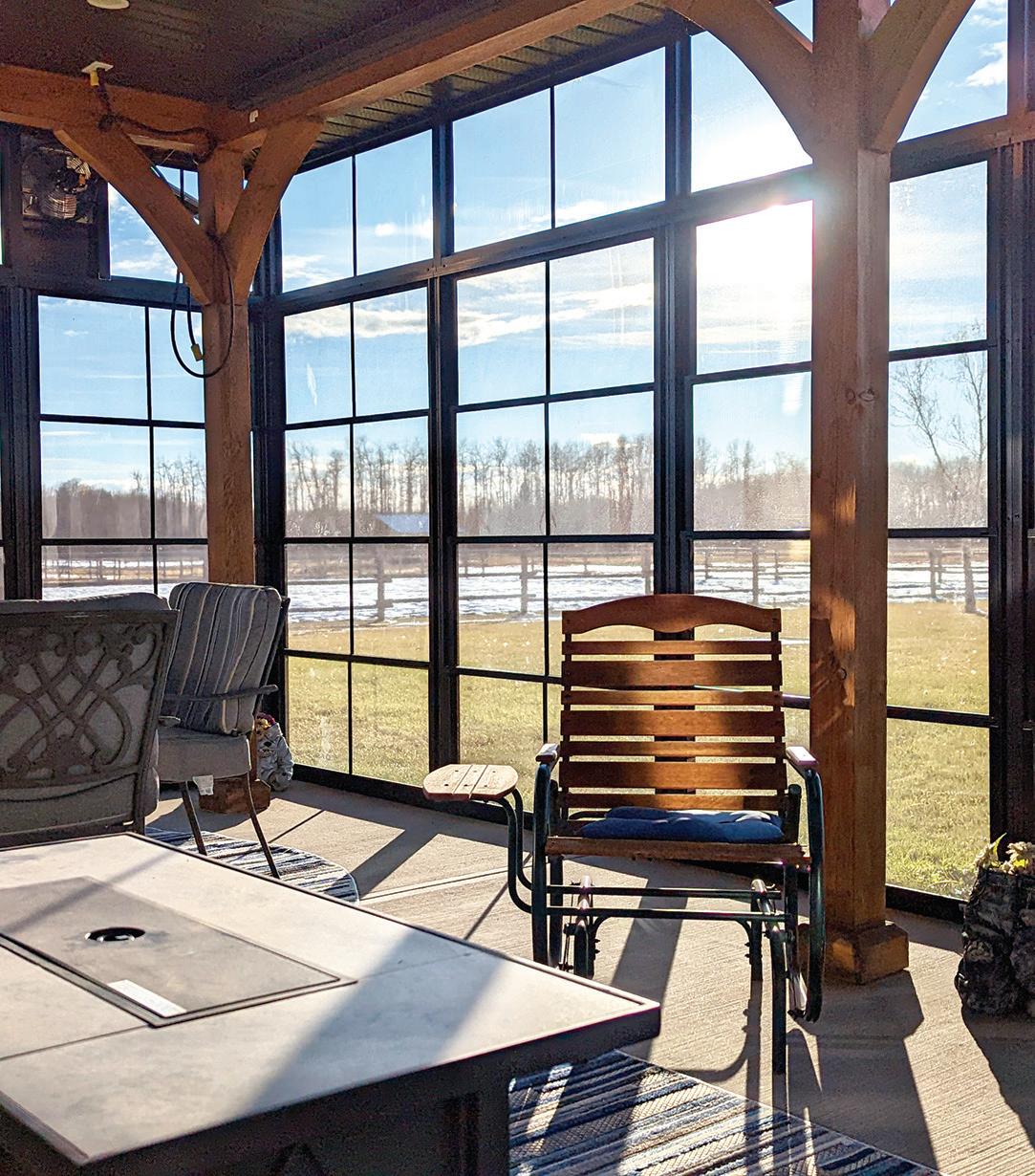

Thanks to large underground reservoirs that are fed by rainwater and snowmelt, our watersheds are known to produce some of the cleanest drinking water in the world.




 by Marc Huminilowycz | photography Clay Dolan
by Marc Huminilowycz | photography Clay Dolan


WATER. IT’S SOMETHING THAT MANY of us take for granted—especially in Canada, where seven percent of the world’s renewable fresh water is located. Turn on a tap, and it’s there for drinking, cooking, bathing, cleaning and watering the garden.

Many years ago, a relative of this writer used to make regular treks from his Wasaga Beach cottage to the village of Elmvale to fill jugs with clean drinking water flowing from a pipe by the side of the road. The water, which came from an underground aquifer, was fresh and tasted great. What this relative may not have known

at the time was that it was, and still is, considered to be some of the cleanest water in the world.
The source of this pristine water is the Alliston aquifer, an ancient underground reservoir located under the Simcoe Uplands in Tiny, Springwater, Oro-Medonte and Tay Townships. It has been replenished for millennia by rain and snowmelt flowing from the surrounding hills, continually filtered for impurities and contaminants through ancient layers of gravel and sand left behind by retreating glaciers. It is also fed by additional aquifers including those from a section of the Niagara Escarpment.
Leading scientists from around the globe have designated the

Alliston aquifer as being the purest water on the planet—so clean that it’s being used as a benchmark for water purity throughout the world. Thankfully, this precious source of drinking water is being safeguarded—designated a “protected zone”, the area surrounding the aquifer is strictly regulated for any development activities to prevent contamination and to maintain its cleanliness and purity.
In large part, the Alliston aquifer and the local residents who enjoy its purity owe the preservation of this precious water to the efforts of one man; Dr. William Shotyk, Bocock Chair of Agriculture and the Environment at the University of Alberta’s

Department of Renewable Resources. For over thirty years, Dr. Shotyk has been studying and testing the aquifer on and around his farm property near Elmvale. The founder and head of the Elmvale Foundation, a local organization for environmental education, he is currently heading a large groundwater project studying the ages, sources, capacity and processes that make the water so special.
Just how pure is the Alliston aquifer water? During a special presentation to Springwater Township Council recently, Dr. Shotyk began by first describing the history of the region that sits above it. “These were once lands inhabited by the Wendat nation. At the
The source of this pristine water is the Alliston aquifer, an ancient underground reservoir located under the Simcoe Uplands in Tiny, Springwater, Oro-Medonte and Tay Townships.




centre was a place they called Ekhiondastsaan, which means ‘the lands that exude water’. This place was important to the original inhabitants, containing a vital resource that they consumed for millennia. It’s appropriate that the municipality sitting on top of the aquifer today is named Springwater Township.”
Speaking to the purity of the water, Dr. Shotyk presented the findings of his test results obtained over thirty years. “The most common water quality indicators include nutrients such as nitrate and phosphate, chloride, organic contaminants like pesticides and herbicides from farming, and trace elements. Nutrients have been consistently below the limit of detection. Chloride is less than one part per million [ppm]. The definition of pristine groundwater is less than five ppm. One leading international water expert said, ‘less than one ppm is impossible
As to organic contaminants from farming, Dr. Shotyk reported not a trace in the water over the years. And the presence of trace elements, specifically lead, have measured a mere one part per trillion [ppt] in Elmvale water, compared to five ppt of lead in the cleanest core samples of ancient arctic ice. “It’s not just clean water. It’s exceptional water.”
Dr. Shotyk went on to describe the age and depth of the Alliston aquifer; “In some locations, it’s what is called ‘modern water’, meaning younger than 1950, with exceptional flow. Elsewhere, it’s ancient groundwater – about three thousand years old.” He described the depth of the aquifer as fairly consistent, with the Elmvale well water coming up from a depth of fifty-six metres.
The Alliston aquifer continues to supply remarkably clean
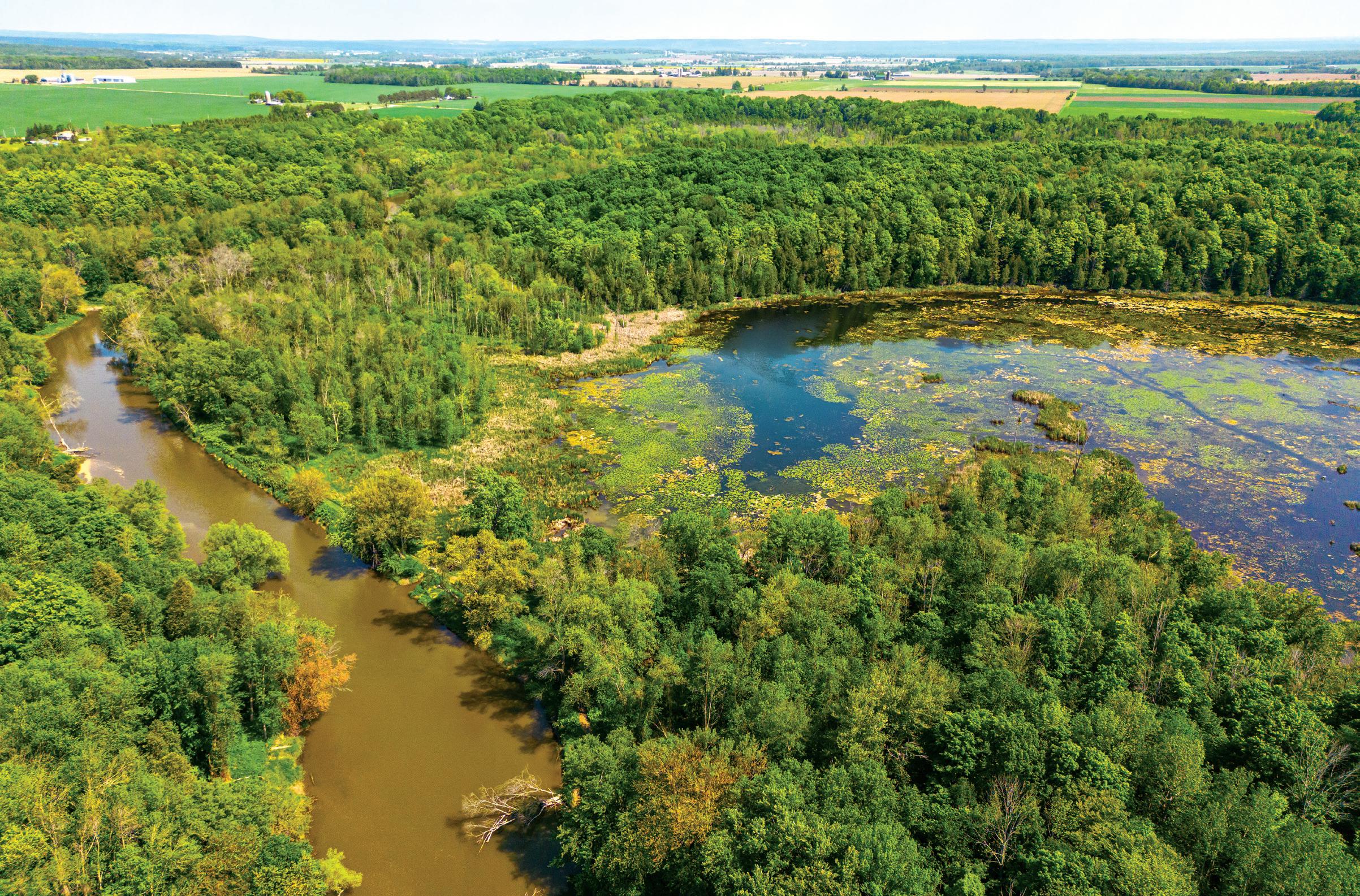
“The most common water quality indicators include nutrients such as nitrate and phosphate, chloride, organic contaminants like pesticides and herbicides from farming, and trace elements.”Nottawasaga River


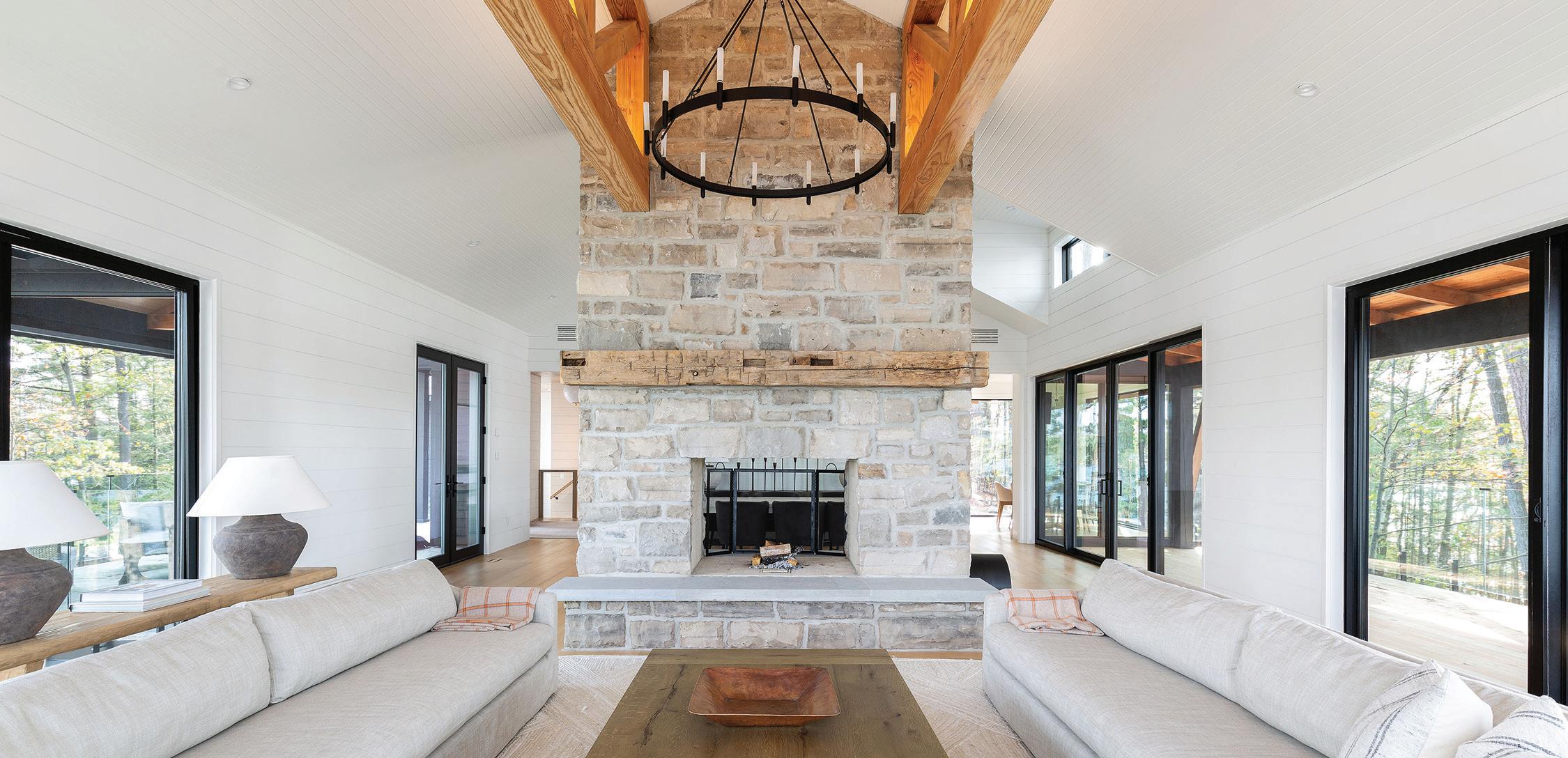

drinking water as it has for millennia thanks to the efforts of Dr. William Shotyk, concerned citizens, advocacy groups, and the foresight of enlightened municipalities. The pipe in the ground in Elmvale, where this writer’s relative gathered clean drinking water many years ago, is now a sheltered kiosk with three taps for filling water containers. Thankfully, it is still free for the taking—worth the trip for anyone who wants to savour the cleanest water in the world.
Meanwhile above ground, in a vast area stretching from west of Barrie to Georgian Bay in the townships of Springwater, Clearview and Essa, lies an important watershed that is internationally recognized and provincially managed and protected. The Minesing Wetlands acts as a reservoir that absorbs floodwater during the spring thaw, filters it, then slowly releases it into the Nottawasaga River system. Supplying a major source of nutrients and sediment to Nottawasaga Bay, it also acts as a
sponge-like shock absorber that protects coastal communities like Wasaga Beach from catastrophic flooding.
The Minesing Wetlands is also an area of unique biodiversity, providing habitat for 400 plant species (11 of which are rare in Ontario) and at least 23 types of mammals. It is the largest wintering ground for white-tailed deer, a staging area for thousands of migratory birds (including some rare species), and a passageway for many species of fish on their way to spawning grounds. Because of these attributes, the wetlands are a popular recreation area that draws nature-lovers, canoeists, hikers, and anglers alike from spring to fall.
Whether it’s the Alliston aquifer or the Minesing Wetlands the reason why these waters are so clean is elementary. According to Dr. William Shotyk, “It’s rain water that flows down hills and filtered by soil that continually removes contaminants. Pure and simple. Mother Nature always knows best.”
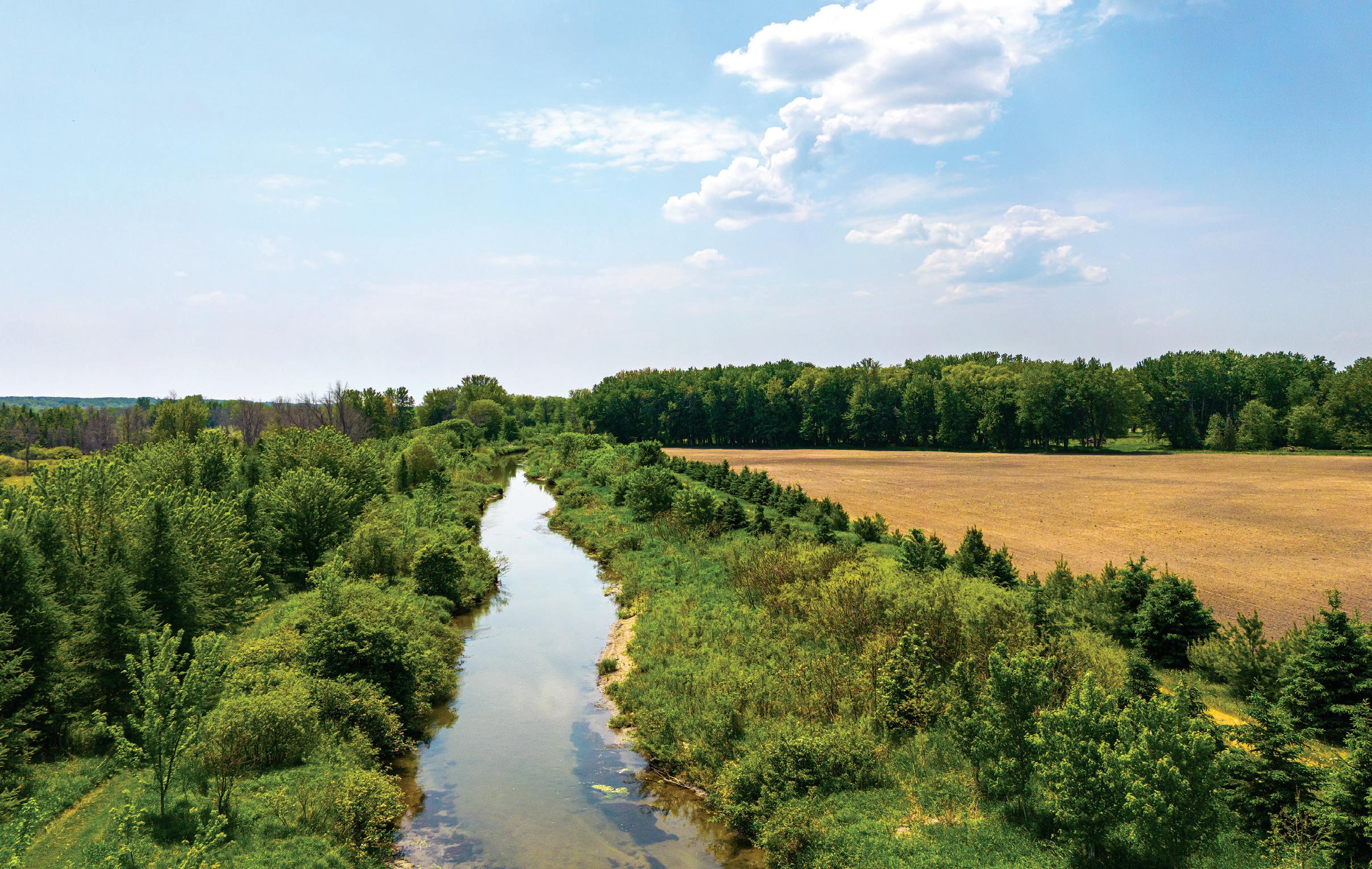
The Minesing Wetlands acts as a reservoir that absorbs floodwater during the spring thaw, filters it, then slowly releases it into the Nottawasaga River system.
Must be 55 years of age or

Access added cash for retir





Eliminate monthly mortgage payments


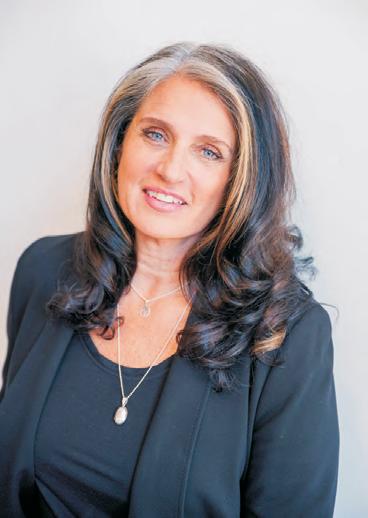



The past unfolds like a dramatic soap opera on Stories from Another Day, a Collingwood Museum podcast that chronicles mishaps, victories, calamities and unwavering determination that have shaped the town into a cherished gem on Georgian Bay.
introduction by Cara Williams, story by Ken Maher

photos courtesy of the Collingwood Museum

BORN OUT OF PANDEMIC-INDUCED boredom (and maybe a touch of cabin fever), Stories from Another Day podcast emerged as a delightful endeavour to keep curious historians entertained during the temporary closure of the Collingwood Museum. Written and narrated by Ken Maher, each episode unearths often forgotten tales including royal blunders, scandalous shenanigans, and of course, unique former residents who left their mark on the town. With new episodes released every month, Stories from Another Day is a romp through history that will leave you wondering how humanity survived such wild times.

Having just wrapped its second season—and leaving fans hungry for more—we at Escarpment Magazine (who are always up for some fun), have joined forces with the museum to bring you a taste of these fascinating stories in good old print form. We found it fitting to begin with episode 23, “The Museum That Wasn’t.” Here we are introduced to Mr. David Williams, who incidentally was somewhat of a print medium trailblazer. In fact, his expertise extended across numerous domains to such an extent that new accolades and distinctions had to be established simply to match his achievements. But here’s the plot twist: the museum that was meant to bear his name never saw the light of day. Get ready, dear reader, to dive into an intriguing tale of yesteryear!
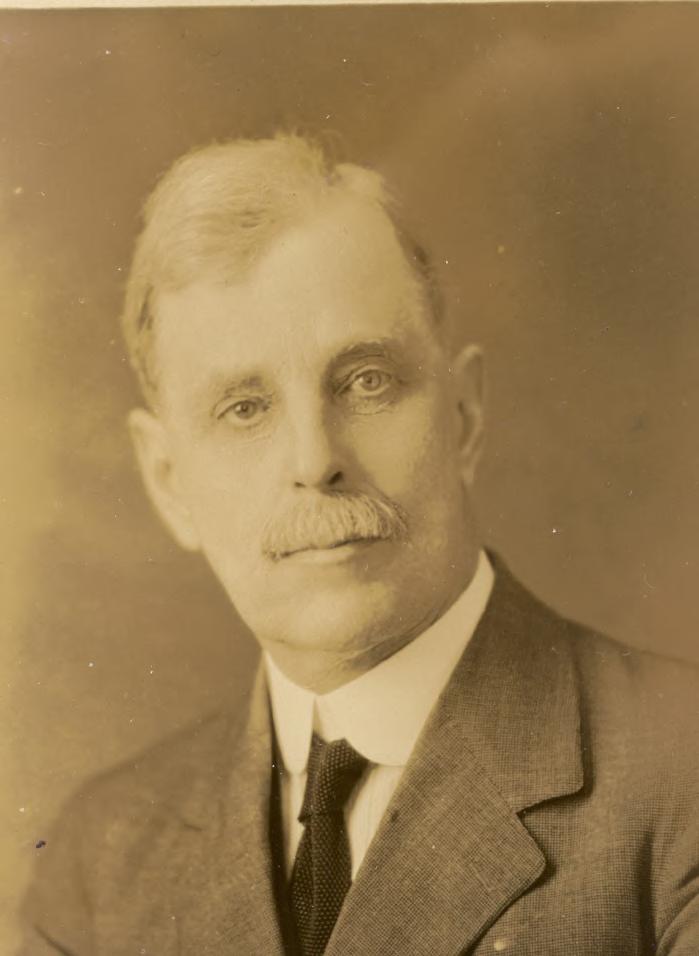
Stories from Another Day, season 1, episode 23
“David! You’ve burnt the toast again!” came the harried voice as his wife bustled into the smoke-filled kitchen pulling the blackened husks onto the counter and flinging open a window to air out the room. The older gentleman looked up from the table buried in books and photographs and papers, most bearing annotations in his careful script. It was only then did he seem to notice the thick smoke filling the room and the harried expression on his wife’s face. Getting up from the table he came over to the counter and stopped her from throwing out his breakfast. “It’s still good, my dear—I like it this way”, he said as he popped the black toast into his mouth with a smile. “Even when I ask you not to smoke in the house you always find a way,” Ida said with a smile. “What are you working on, my dear? Paper business? The Hospital? One of your boards or have you taken up another job while I wasn’t paying attention?” A mumble and a nod was all she got back in return. “Well, I want my table back before lunch—we have company coming over later.” But a wave and a sooty kiss on
the cheek was all she got in response, for he was already back to reading and note-taking between bites of his toast that smelled uncommonly like one of his forbidden cigars.

The day – well, it could be any of hundreds just like it in the life of Mr. David Williams. In fact, he might not have been able to tell you himself, because David was always too busy serving his town and community. David was born January 16, 1869 in Perth County. He moved to Collingwood at the tender age of four, when his father, William Williams, became the head master/principal of the newly built, “Collingwood High School” which at that time was a brick structure with a north-south footprint facing Hume Street at the corner of Ste. Marie Street. The school consisted of two rooms on the top floor of the building and had an enrolment of 14 students. At the age of 17 David followed his father’s footsteps in working for and later serving as managing editor and president of the Collingwood Bulletin Newspaper for some 60 years. A newspaper man through and through, he served as president of the Canadian Press Association, and a director and chairman of the Canadian Weekly Newspaper Association. But that was only the beginning. Mr. William’s list of accomplishments on the local,
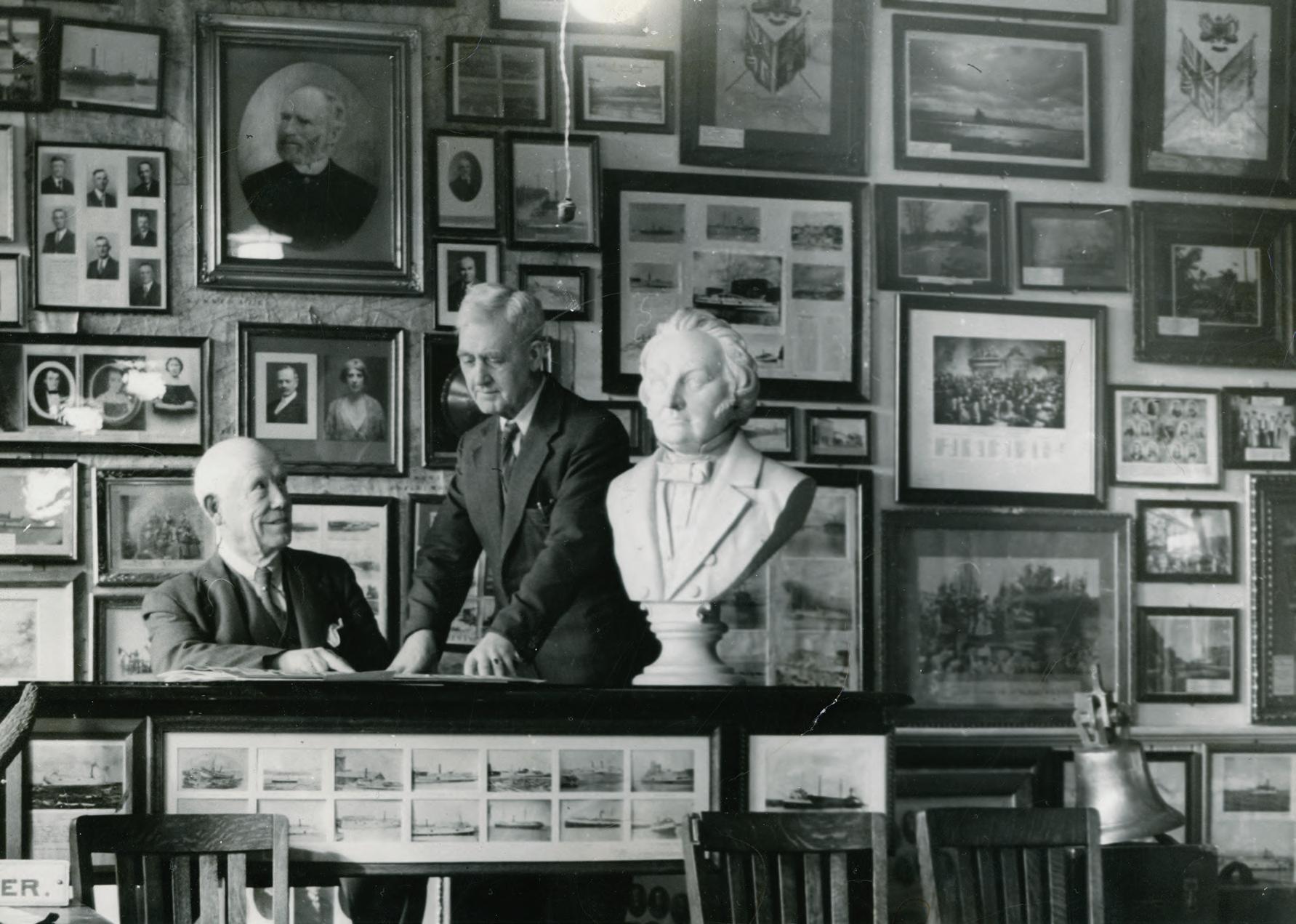




The Collingwood Museum boasts an extensive collection that traces its origins back to the establishment of the Huron Institute in 1904. Initially situated in the basement of the local Carnegie library, this early iteration of the museum showcased captivating exhibits from five distinct departments: Zoology, Botany, Geology, History, and Civic Development. Guided by the visionary leadership of David Williams, the Institute published three volumes encompassing essays, biographies, and a valuable historical catalogue. The latter publication extensively documented the Institute’s impressive assortment of local and marine photographs, a cherished resource that remains highly accessed by museum visitors.
In a fateful turn of events, a devastating fire ravaged the Carnegie library in 1963. Miraculously, the majority of the Huron Institute’s collections managed to survive, albeit with varying degrees of water damage. Stepping up to the plate, the Town of Collingwood assumed ownership of the early collection and procured the CN railway station as the museum’s permanent residence. Thus, in 1966, the Collingwood Museum officially opened its doors, embarking on an extraordinary journey.

Fast forward to 1998, when the original CN station made way for a new edifice inspired by Collingwood’s magnificent 1873 railway station. Unlike its predecessor, the revamped Collingwood Museum now concentrates its collecting endeavours solely on the history of the town itself. Nevertheless, the most sought-after collections, especially the photographs, continue to centre around those originally amassed by the esteemed Huron Institute.
provincial and national stage is without hyperbole, truly staggering. The Canadian Patriotic Fund, the Canadian Red Cross, the Public Library and the Ontario Library Associations, the Board of Education, the G&M Hospital Board, Ontario Hospital Association, agricultural boards, the GNE board, not to mention a member of the municipal council and the 26th mayor of Collingwood.
But for us at the Collingwood Museum, Mr. David Williams will always be most well-known for the instrumental work he did in establishing the Collingwood Museum—a branch of the Huron Institute. A founder and zealous promoter of the Huron Institute, David always sought to preserve the rich heritage of our local history. Indeed, so much of what we know of Collingwood’s History—from its earliest days until the 1940s—is owed to this one man. He was a member and president of the Ontario Historical Society. He was also made an honourary Chief of the Six Nations for his keen interest in researching the history of First Nations in our local region. And, he was selected to serve as the namesake of Collingwood’s own David Williams Memorial Museum... or would have been... if it ever had come to be.
In order to understand the Museum that Wasn’t we have to go back. The regular flooding of Second Street, along with the overcrowding of the Huron Institute’s artifacts in the basement of the Carnegie Library, where the museum was housed up until that time, made it clear to the minds of many that a new and dedicated building for the town’s premiere collection of archives and artifacts was desperately needed. It was hoped the project could be completed in time to mark the town’s centennial. At a public meeting held in June 1954 some ten years after William’s death, a recreation committee was appointed to plan for a new museum in Collingwood, The David Williams Memorial Museum. By August of 1955, the noted local architect, William Carswell had designed the

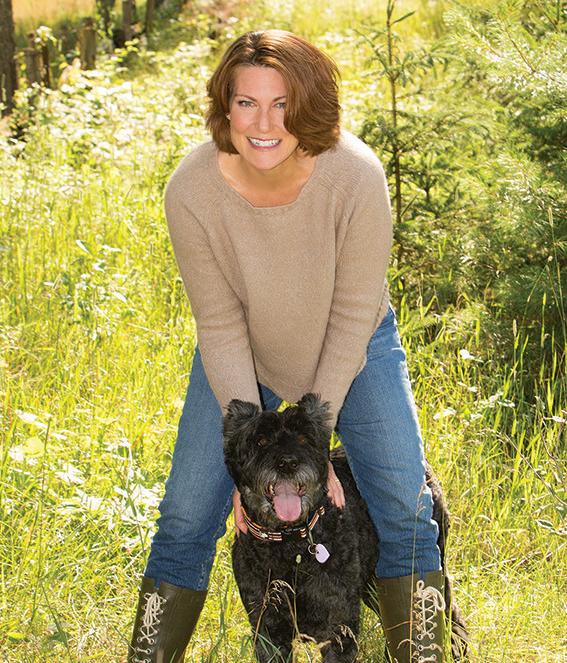




proposed building to be located on the northwest corner of Collingwood’s Exhibition Park, roughly where the YMCA stands today. The building plans included a public auditorium. Help was also enlisted from the Royal Ontario Museum, who were enthusiastically behind the project.
So, what happened? Why did it not come to be? For whatever reason, government approval and sought-after grants necessary to kick start the fundraising efforts don’t seem to have materialized, and without them there was little interest in footing the bill by the locals. In a 1996 article entitled Winds of Change, the sad reasoning of the project’s dissolution is quoted as thus: “The present plan to erect a museum building should be dropped and an effort made to acquire a suitably located house or building that could be concentrated without too much financial outlay, so that the exhibits could be displayed in an attractive manner. If this is done, it will give the committee an opportunity to demonstrate the real need and also to prove the earning power of such a project. Only when popularity is established and earning power is demonstrated should a campaign then be considered.” There is no information, however, to suggest whether things got so far as an attempt being made to raise money for the museum project, beyond a pamphlet which lists the Application for Membership in the David Williams Memorial Museum and its fees. It sits forgotten alongside Mr. Carswell’s plans as a similarly treasured and preserved piece of the Museum that Wasn’t.
While the proposal for a new building bore no fruit in the 1950s, time marched on and nothing could save the museum collection’s first home from the effects of a devastating fire
that struck the Carnegie Library in 1963. Thankfully, through the efforts of the local fire department and many concerned community members, while the collected artifacts and photographs at the Huron Institute suffered severe water damage, little appears to have been lost to the fire. Mr. Williams’ tireless documentation was preserved, in its original format and the numerous published hardcover books he printed through his printing press, remain in our possession today.

However, with the fire, the decision surrounding a new museum home in Collingwood was suddenly and catastrophically, in effect, made for us. And in 1966, the Museum’s collection was moved to the former railway station on St. Paul Street (not, mind you, the building that stands here now—this one would only be built in... well, that is a story for another day). On this day we conclude, remembering with a certain sadness the David Williams Memorial Museum that wasn’t, for in the long history of Collingwood there could be no better person to dedicate such a space to. And yet, the spirit of David Williams, and the foundation of his hard work in the preservation of our town’s history, even though it’s not displayed in our current museum’s name, is still evident in every corner of the Collingwood Museum to this day. From his memorial plaque by the west doors, to his picture and tribute as part of our permanent Huron Institute exhibit, to the thousands and thousands of items and articles and documents that still bear his careful annotations and flowing script, and maybe just occasionally the faintest trace of burnt toast.
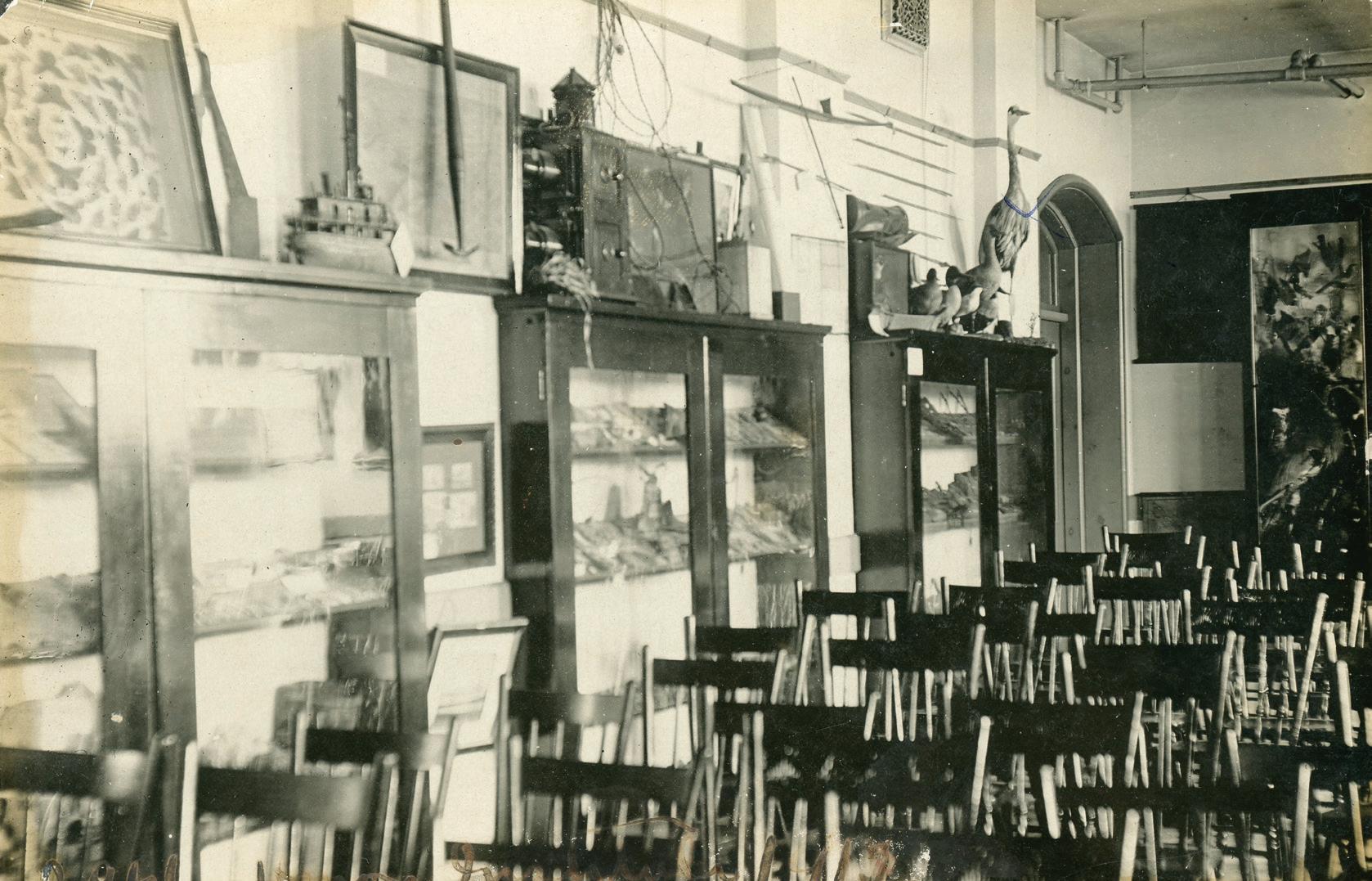


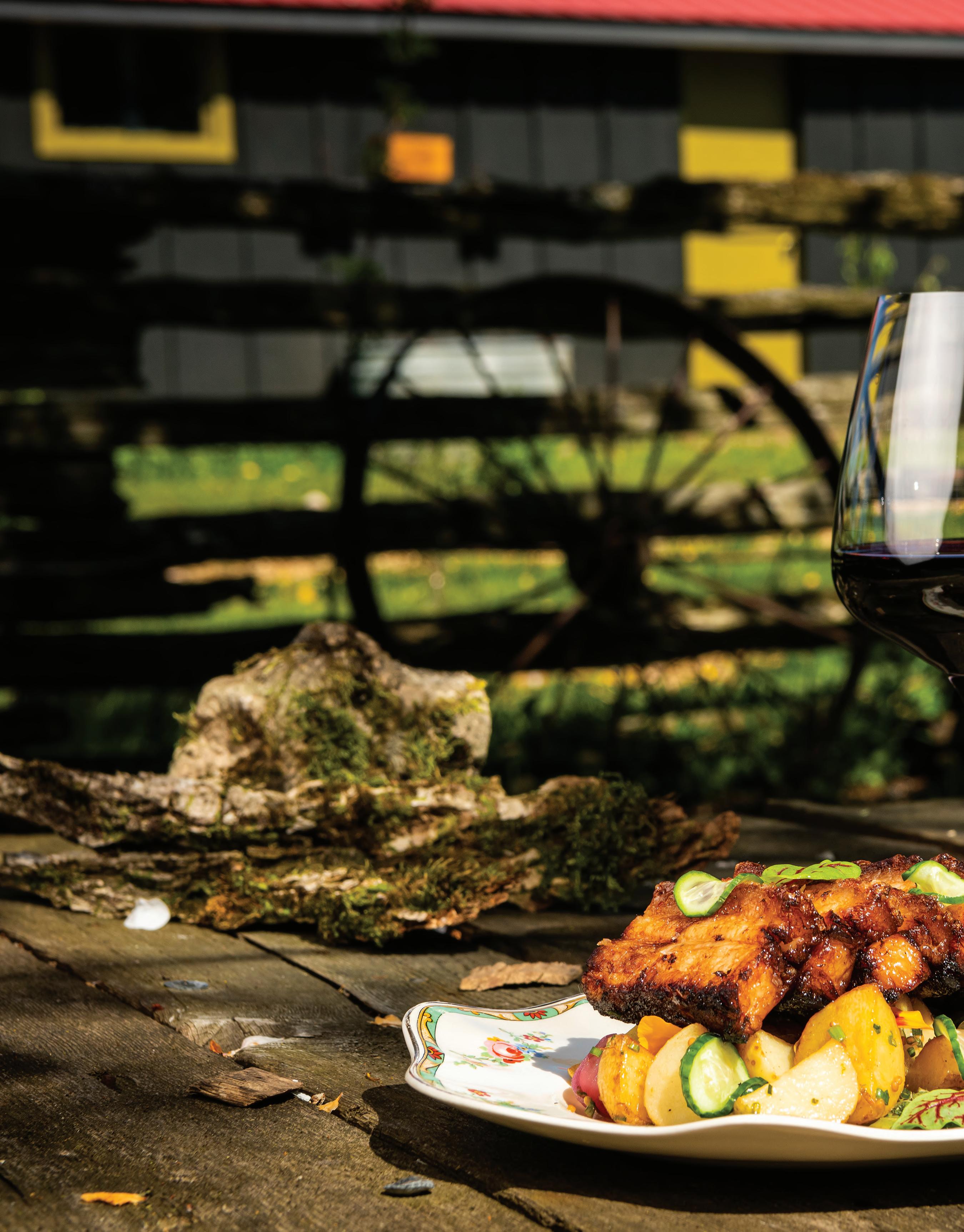 by
Harradine
by
Harradine
What began as a farm-to-table food project has turned into a yearround foodie’s dream for Joel Gray and Hannah Harradine. The couple established Sumac + Salt in 2019, partnering with local farms in hosting intimate, pop-up dining experiences. Their mobile, business model proved a successful venture and allowed the couple to share stories of local growers and producers through collaborative tasting menus and curious dining.
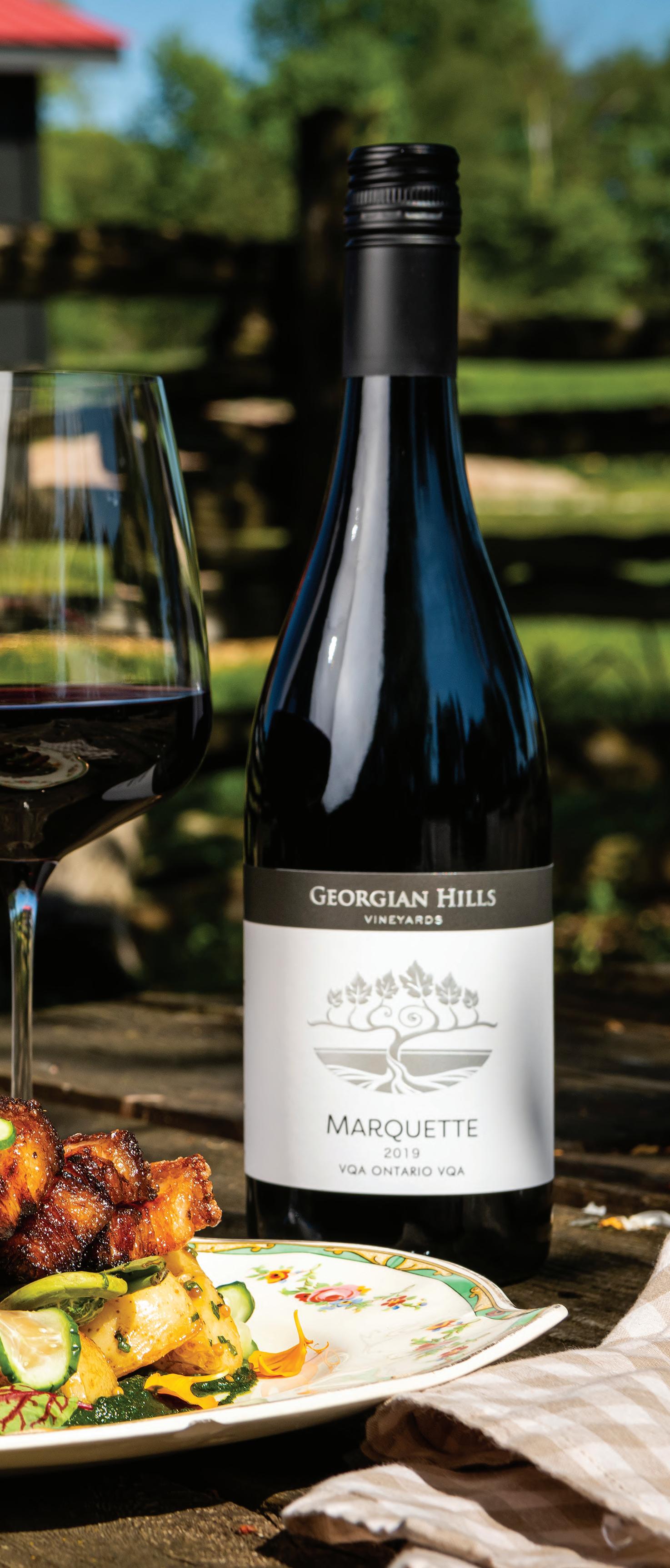
Last summer Hannah and Joel opened a 16-seat restaurant on their farm in Grey Highlands. Down Home offers a 10-course tasting menu that follows the rhythm of the seasons, showcases the incredible bounty of foraged edibles and features small-batch local winemakers. Hannah and Joel share a few of their favourite summer recipes, complete with complementary, homegrown wine pairings.
Summer Turnip Salad with Honey
Whipped Feta and Brown Butter Shallot Vinaigrette
“There are so many amazing, local, organic farms that grow delicious turnips and radishes,” says Hannah. “We get asked all the time about how to prepare these beauties. We love roasting the turnips and pairing them with a delicious chunky and flavourful dressing. Follow along with this recipe to enjoy these turnips all season long!”
1 bunch of turnips, cut in quarters (we choose the Hakurei variety)
A large handful of salad greens or spicy mix
In a medium sauté pan, add a splash of neutral oil and heat over medium setting. Once pan is hot, add your turnips and roast for 5-7 mins until almost fork tender, season with salt. Remove from heat and set aside.
Whipped Feta
1 cup feta (we use Woolwich)
1/4 cup honey
3 tbsp fresh squeezed lemon juice
In a food processor or blender blitz up feta, honey and lemon juice. There should be all the salt needed in the feta however, season to your taste if required.
Brown Butter and Shallot Vinaigrette
1/2 cup butter
2 shallots, minced
2 tbsp honey
2 tbsp apple cider vinegar
salt and pepper to taste
In a small saucepan melt butter over med/ low heat. Swirling the pan every so often, it will begin to foam and then subside to become clear. You’ll see that the milk solids are separated from the liquid. Once it smells nice and nutty and the milk solids have browned, add your remaining ingredients and lower the heat. Cook slowly until the shallots have softened. Season to taste and remove from heat but keep it in the pot to reheat. This has to be a warm dressing as the butter will solidify.
TO PLATE: In a serving bowl, add the whipped feta and spread throughout the bottom, place the cooked turnips on top. Spoon over the dressing. Lightly toss the salad greens into the remaining dressing and pile on top. Garnish with shaved radish.
WINE PAIRING: 2020 Into the Light WhiteCoffin Ridge.
Coffin Ridge’s signature white showcases their white varietals including Geisenheim, Frontenac Gris, Prairie Star, La Crescent and Riesling. The wine is off-dry and displays wonderful aromas of nectarine on the nose, with unripe pineapple and grapefruit on the palate. We love this wine paired with the richness and creaminess of this dish as it completely cuts through to refresh the palette.
“This recipe is a killer for any backyard summer shindig. It takes a full 24 hours to prepare, but your guests will thank you. We love pairing this pork belly with a sweet and tangy, mustard-dressed potato salad.
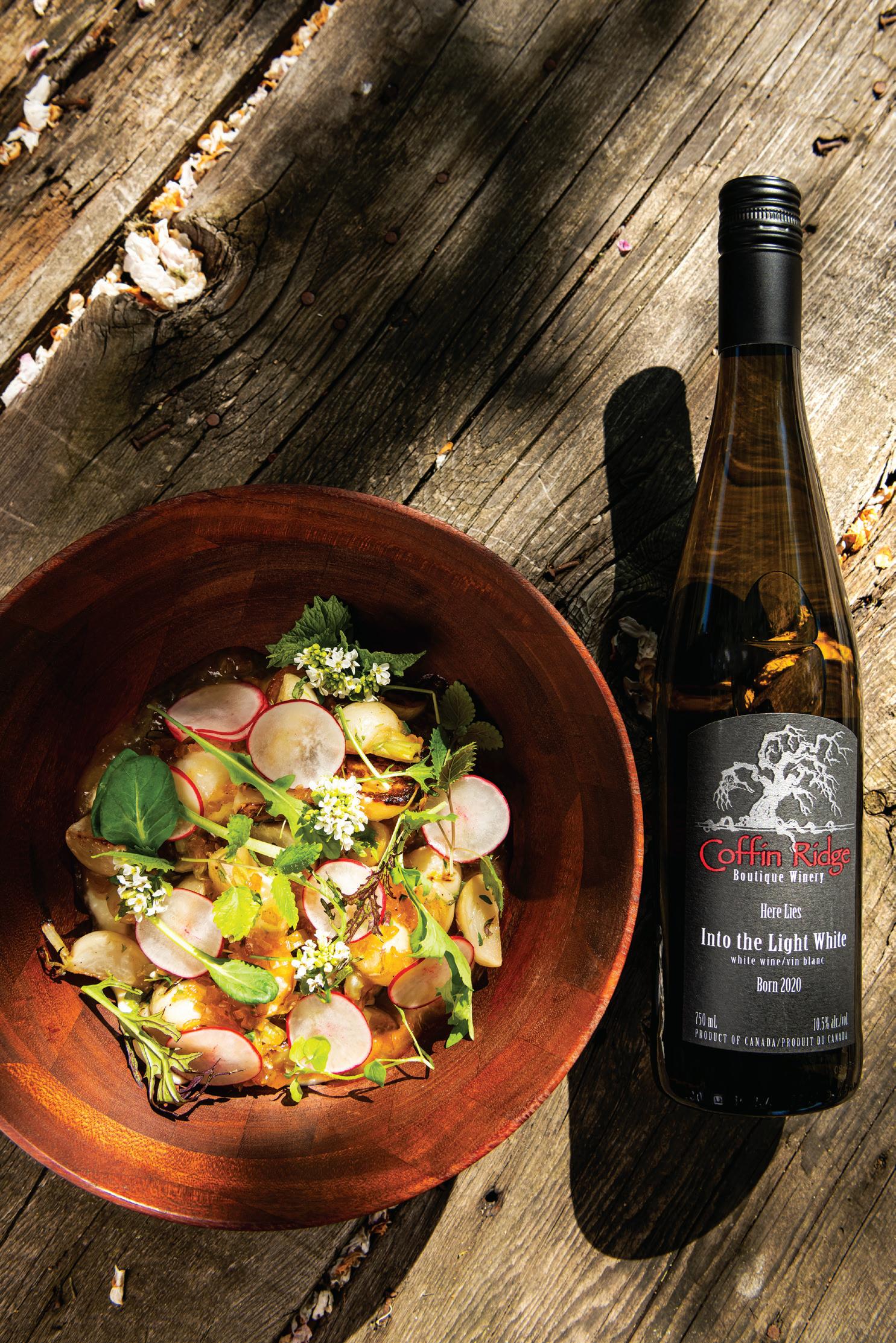
The leftover pork makes an amazing taco filling as well!”
Pork Belly Braise
One large, 2 lb piece of local organic pork belly
1 onion, cut into quarters
2-3 celery stalks
2-3 carrots
1 cup red wine
1 cup apple cider vinegar
1 cup brown sugar
2 bay leaves
1 head garlic
a few sprigs thyme
1 tbsp whole peppercorns
4 tbsp salt
2 bay leaves
Preheat oven to 300°F. In a deep, braising pan, add the pork belly and all ingredients. Add just enough water to cover the pork belly. Cover with a layer of parchment paper and tinfoil. Braise on low for 5 hours or until the fat has completely rendered (Joel says this is when the belly is poked and it jiggles or dances). Remove from the oven and allow to cool on stovetop in



braising liquids. Once it is cooled to the touch, carefully remove it from the braising liquid onto a sheet pan and cool in fridge overnight.
Parsley Purée
2 bunches of parsley roughly chopped, stems and all
1/2 cup grapeseed oil
3 tbsp honey
2 tbsp apple cider vinegar
1 teaspoon salt
In a blender blitz up grapeseed oil, honey,
apple cider vinegar and salt. This will make the base vinaigrette. To the blender add the parsley, blend on high until nice and smooth. (Not too long as you don’t want the blender to heat up and cook out the colour).
Potato Salad
We cook these potatoes in a super flavourful, braising liquid, instead of just plain old water. You can add a lot of flavour while cooking these, low and slow.
3 cups new potatoes sliced in half
3 tbsp of salt
1 tbsp each; dill seeds, mustard seeds and peppercorns. May be substituted for 3 tbsp of premixed pickling spice blend
2 bay leaves
2 cloves garlic
1/4 cup apple cider vinegar
1/4 cup honey
4-5 cups water (can vary based on pot size)
In a large pot add all ingredients except for the potatoes (only fill half way to leave room for potatoes). Stir ingredients to combine and then add the potatoes. Slowly cook the potato mixture, over low-med heat, not a rolling boil. Cook until fork tender, strain and set aside while you prepare the vinaigrette.
Mustard Vinaigrette
1/4 cup grainy mustard (we love Kolzik’s)
1/4 Dijon mustard
1/4 cup honey
1/2 cup neutral oil
2 tbsp sherry vinegar
1 tsp salt
Whisk all ingredients and season to taste.
TO PLATE: Slice the pork belly braise into 1-inch pieces. Place a small amount of oil in a non-stick pan and fry the pieces over med-high heat until hot and crispy. This can also be done in an air fryer or deep fryer (about 7-10 mins).
On the bottom of a serving tray spread the parsley purée. Toss the potato salad (warmed or cold) in the mustard vinaigrette and place a layer over the purée. Add your favourite chopped pickles, cucumbers, asparagus, or onions. Place the pork on top of the potato salad. Garnish with micro greens or edible flowers.
WINE PAIRING: 2019 Marquette - Georgian Hills Vineyards
A cool climate hybrid varietal that has bright acidity and firm tannins. On the nose, you can detect notes of blackberries, plums, black pepper, and dark cherry. The palate is comparable to the nose with the


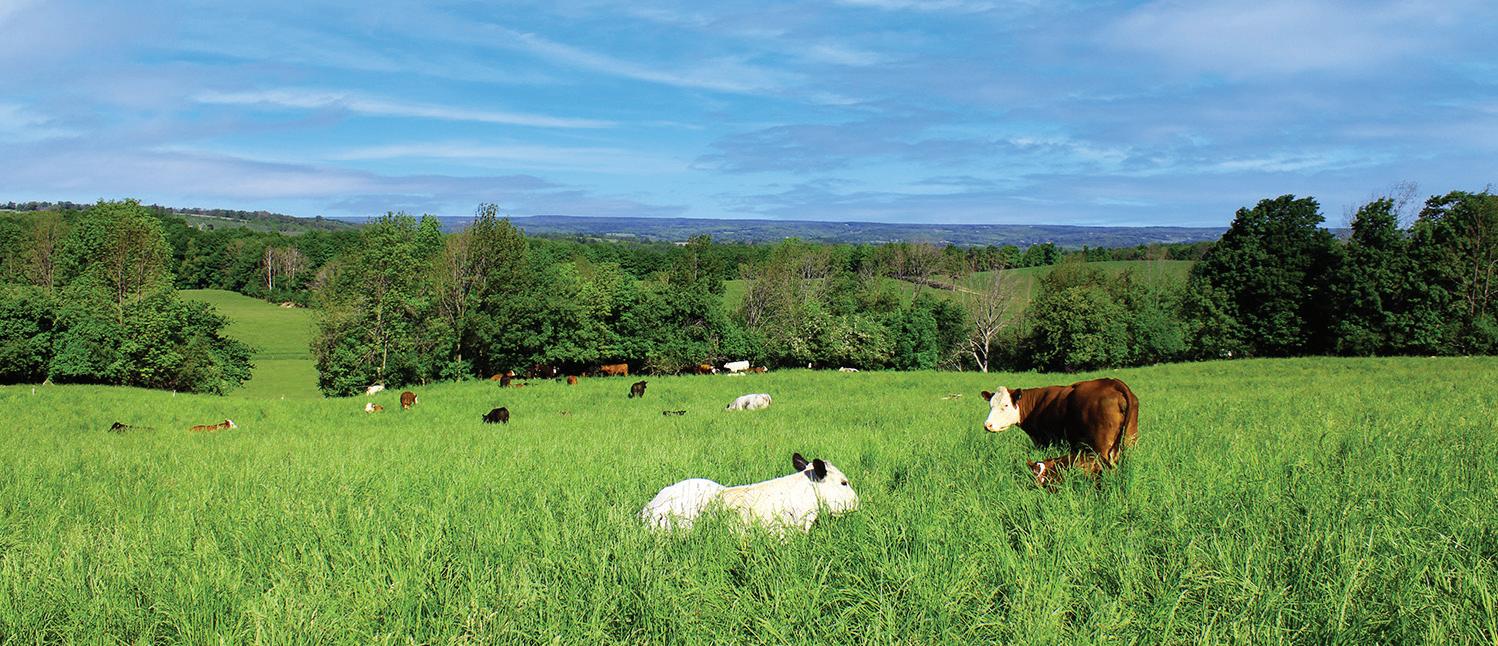

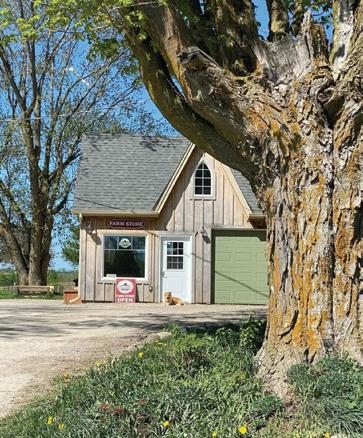
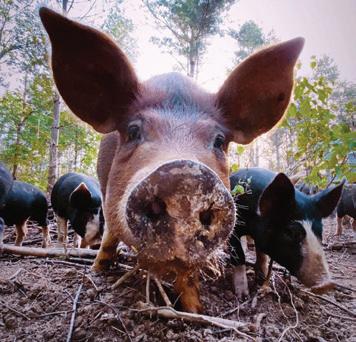




addition of cranberries and stewed black fruit that pairs remarkably well with the fattiness of the pork belly.
Summer Strawberry Galette with Chamomile Whip Cream
“This dessert just screams summer—it is so versatile and easy to prepare. We love the crunch and texture the cornmeal gives the dough however, a store-bought puff pastry also works wonders. Mix and match any of your favourite seasonal fruits.”
Fruit Filling
2 cups strawberries, sliced
4 tbsp sugar
1 tbsp cornstarch
1 tsp vanilla
In a bowl mix all the ingredients then refrigerate until ready to use.
Tart Dough
1 1/2 cups all-purpose flour
1/4 cup finely ground cornmeal
1 tbsp sugar
1/4 tsp salt
1/4 cup ice-cold water
8 tbsp (1 stick) cold unsalted butter
1 egg, whisked
2 tbsp raw sugar (optional)
This dough comes together quickly in a food processor. Using the blade attachment, add the flour, cornmeal, sugar and salt to the processor bowl. Cut the butter into 1-inch cubes and distribute onto the flour. Pulse for a few rounds until the mixture resembles coarse crumbs and a few pieces of butter are pea sized. Drizzle half of the water and pulse for a few seconds at a time. The dough should start coming together when squeezed by hand but still crumbly. If it is too dry add another tbsp of water until it holds its shape.
Flour your surface and form the dough into a loose ball, shape the ball into a flattened disk, cover with plastic wrap and refrigerate for at least 1 hour or overnight.
CHEF’S TIP: If you’re short of time, a premade puff pastry from the grocery store works wonders in this recipe!
Chamomile Cream
1 cup 35% whipping cream
1/4 cup dried chamomile flowers
In a small saucepan use 1/2 cup of the whipping cream. Over low heat add the chamomile flowers to the cream and gently heat until warm to the touch and fragrant. Strain out the flowers and transfer to a bowl to cool. Once completely cooled add the remaining cream and sugar and whip until soft peaks form. Refrigerate until ready to use.
Preheat oven to 400°F
Place the unwrapped, chilled dough between two pieces of parchment paper. Roll the dough into a 12-inch round and about 1/8-inch-thick disk. Place the parchment and dough onto baking sheet, remove top layer of parchment.
Place the strawberry filling into a mound in the centre of the dough, leaving about a 2-inch border of dough around the edge. Fold the edges of the dough over onto the fruit, leaving the centre open. Beat the egg and brush the crust with the egg wash. Follow up with a sprinkle of raw sugar.
Bake the galette until the crust is browned and the fruit is cooked, 30-35 mins. Allow to cool on a wire rack.
TO PLATE: Once cool, enjoy with a dollop of chamomile whip cream.
WINE PAIRING: 2021 Sparkling Rosé Bunch’a Trouble - The Roost
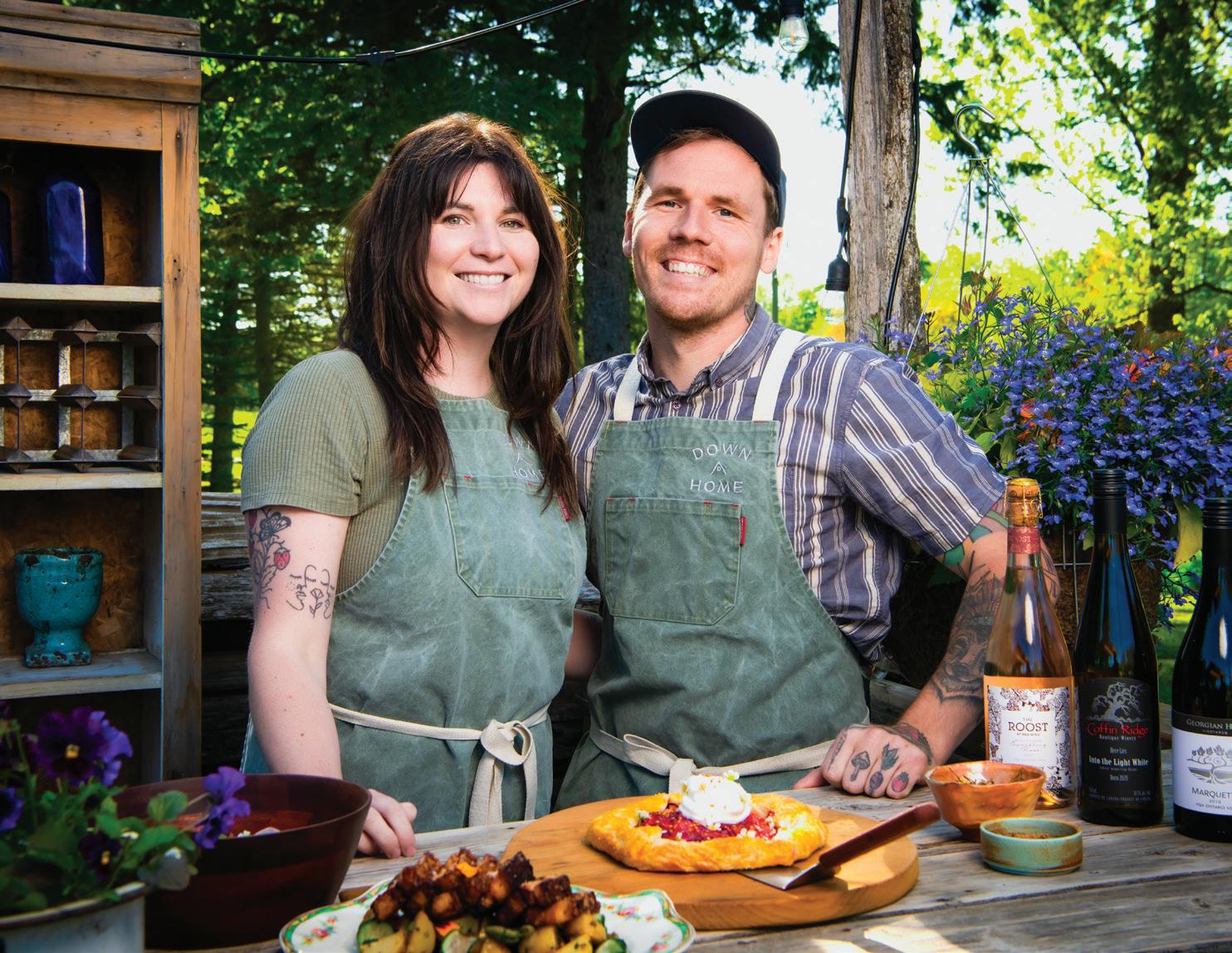
Bunch’a Trouble is a fruity and approachable sparkling Pinot Noir Rosé, boasting a crisp and bright profile that offers a refreshing burst of berry and citrus flavours. Its lively and bubbly nature makes it the perfect companion for any occasion. It is a lovely pairing with the sweet berries and buttery crust of this dessert, mimicking the strawberry notes on all levels.
To learn more about Down Home, visit sumacandsalt.com.
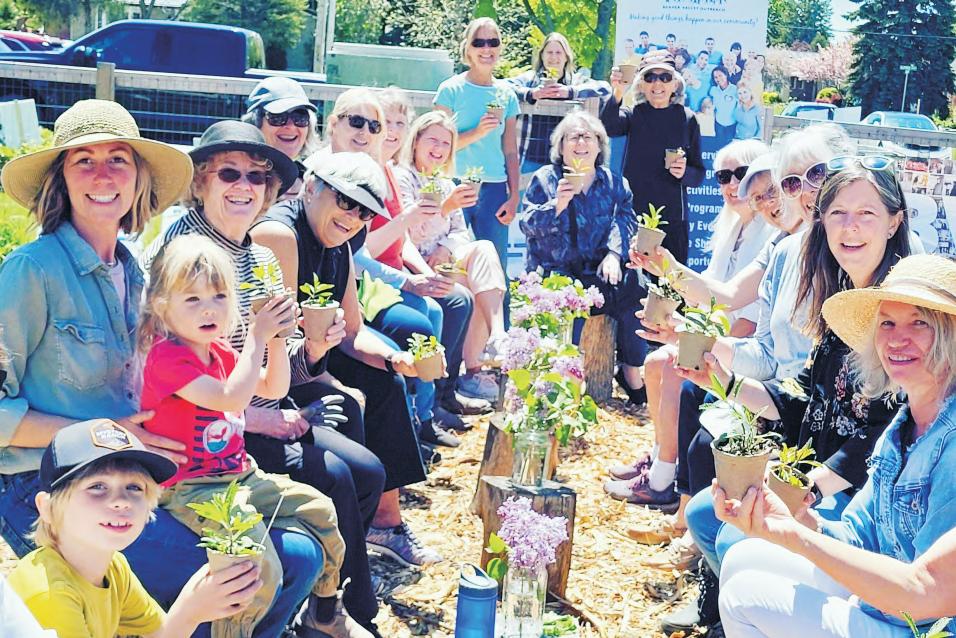
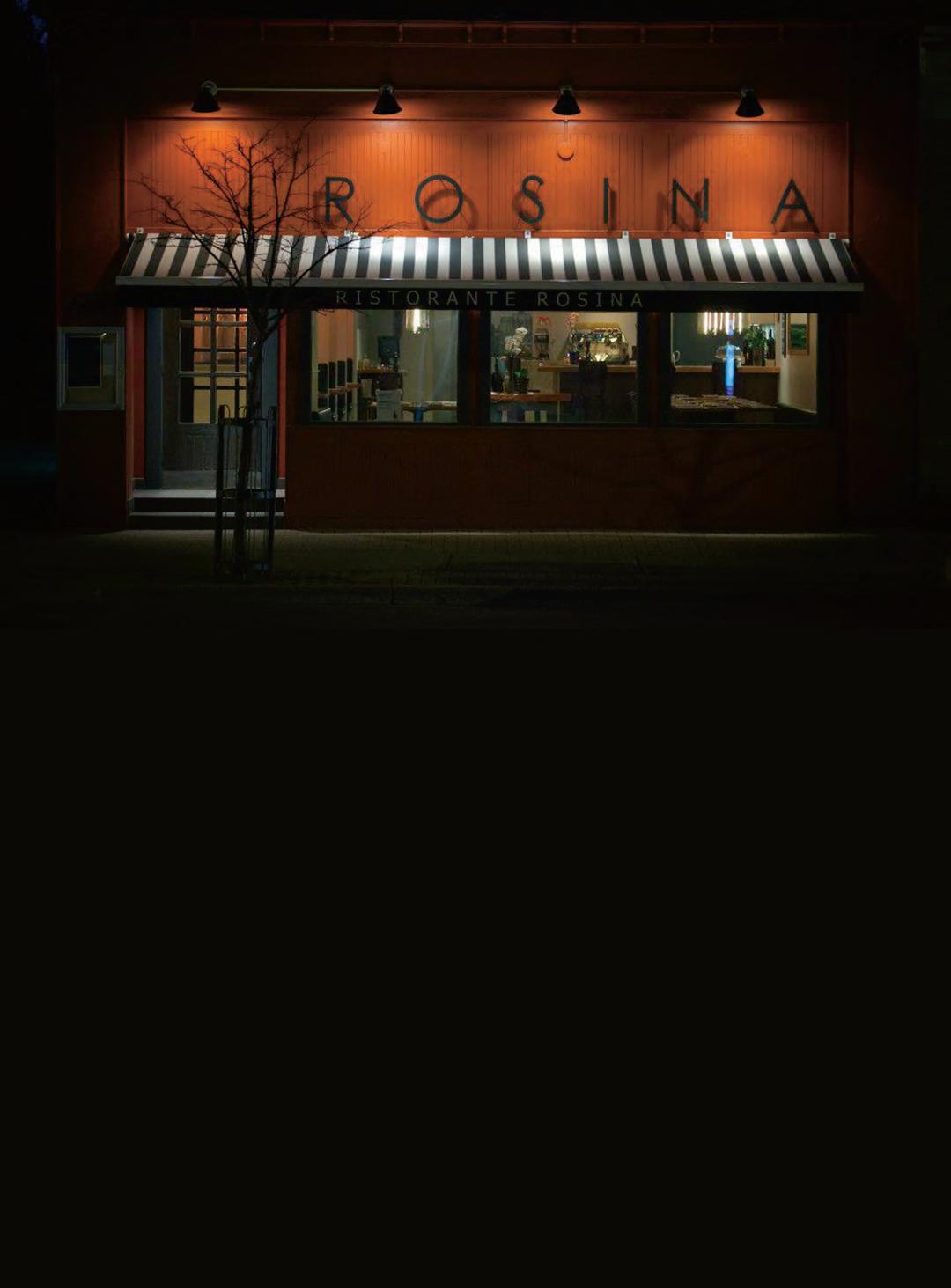

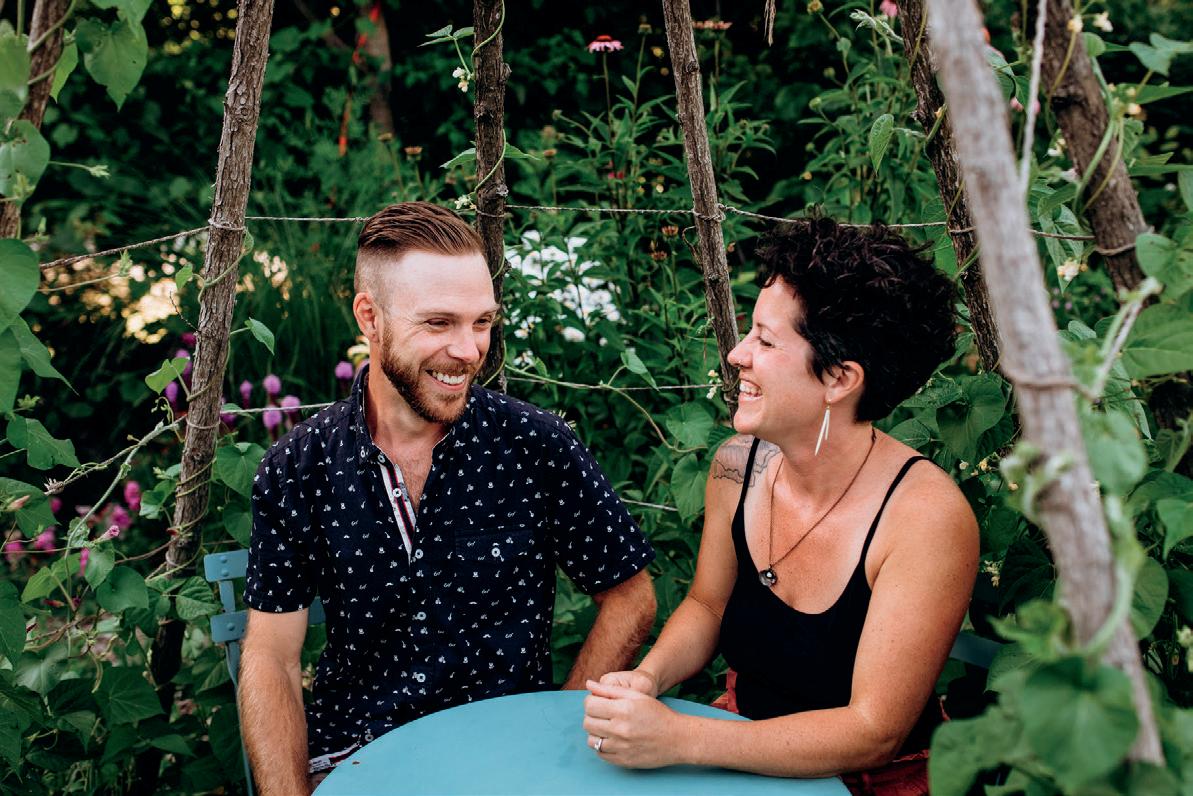


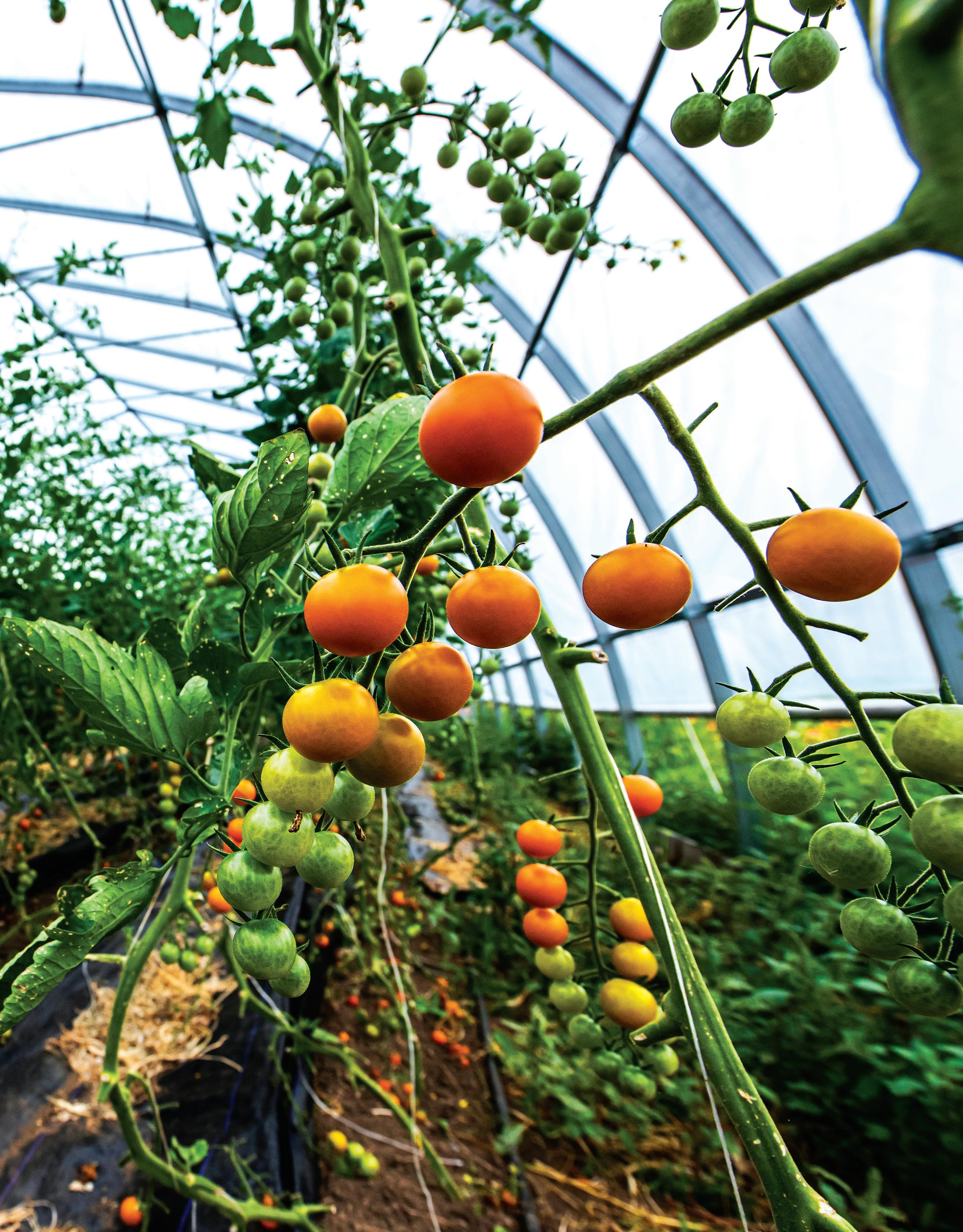
WHERE WOULD YOU FIND a mortgage lifter, moneymaker, Berkeley tie-dye, black prince or red Brandywine? Your multiple-choice answers are; a. cocktail bar; b. rose show; c. lipstick counter; d. heirloom tomato garden. Correct answer is: d. With quirky names and a colourful rags to riches history the tomato story features werewolves, aphrodisiacs, wealth and a pinch of magic.
Tomatoes weren’t always as popular as they are today. Ontarians devour them more than ever blissfully unaware of their struggle as a revered, reviled then redeemed. They’ve trekked a long way to arrive in your garden and salad bowl. Conquistadors discovered them in the Andes in the 16th century where wild tomato plants are still found today. Tomatl is the Aztec word for tomato. Spanish explorers brought them to Mexico and Europe where they were cultivated.
Food historians speculate that the first European tomato was yellow because 16th Century botanists refer to the Italian tomato as pomi d’oro or golden apple. In France it was known as pomme d’amour, or love apple, and had a sexy connotation. The French thought that since tomatoes closely resembled the human heart (which was regarded as the seat of love in ancient myths) they were an aphrodisiac.
But not all was rich and lovey-dovey in the garden patch—a poisonous evil side effect bruised its reputation. Some folks ate the entire plant, stems and all, falling prey to poisonous illness and hallucinations. They didn’t know that the greens of the tomato plant belong to the deadly hallucinatory nightshade family. In German folklore the tomato was called the wolf peach,
or wolfpfirsich because they believed witches could use it to call up werewolves.
The tomato’s bad reputation spread along with the plant as it migrated to North America where immigrants grew it solely for decorative purposes. It was believed that if you ate one it would turn your blood to acid. Case in point, the Puritans called them mad apples or rage apples. Meanwhile back in France, eating the fruit became a popular protest gesture with French revolutionaries because the aristocracy disliked them.
Redemption came from American influencers—Thomas Jefferson first tasted tomatoes in Paris. He deemed them delightful and sent some seeds back to the U.S. to cultivate and promote the plant in the middle 1700s. By the mid-1820s the tomato was popping up in gardens, seed catalogs, recipes and restaurants mainly because physician John Cook Bennett published an article about the fruit’s health virtues, claiming tomatoes could ease diarrhea, dyspepsia, indigestion and even cholera. Before long, pills were packaged and sold that claimed to contain “extract of tomato.” In the span of just a couple of decades, the tomato went from being considered toxic to nature’s most valued medicine.
The modern age of commercially grown tomatoes started with the efforts of Alexander W. Livingston, a botanist and scientist who upgraded the tomato with selective breeding. His 1870s variety called Paragon became a hit in North America, inaugurating a new large tomato industry. At the same time, the first tomato cannery in Ontario was established. The tomato’s original reputation as the pomo d’oro or golden apple was about to resurface and come full circle.

The tomato has a well-travelled origin story, and has been called an aphrodisiac, werewolf bait and wealth attractor. Today, the once reviled fruit is a top performing garden, greenhouse and culinary favourite with fruitful roots.
By the Great Depression many
tomato canneries existed.The era inspired a new type grown for income and known as depression era tomatoes with names like “the mortgage lifter” and “moneymaker.” They were large, weighing up to two pounds, had impressive yields and grew all year long in commercial greenhouses located in the Virginias. As best sellers they provided relief for small scale plant nurseries and farmers.
Tomato popularity continued its upward trajectory especially in Ontario. Nowadays 98% of the tomatoes grown for processing in Canada come from the province thanks to mechanical harvesting, scientific advances and greenhouses. Ontario has the biggest concentration of greenhouses in North America and the 1990s was the time period when the fresh tomato greenhouse industry was golden. Mostly located in Chatham-Kent and Essex counties, they continue to produce millions in yearly revenue. The surprise is that the U.S. and France import a huge number of fresh tomatoes from Ontario! The export demand has garnered competition so the numbers have fallen by a small percentage in recent years, while domestic tomato consumption continues to see a modest rise.
Field, greenhouse and heirloom varieties grow here. Popular
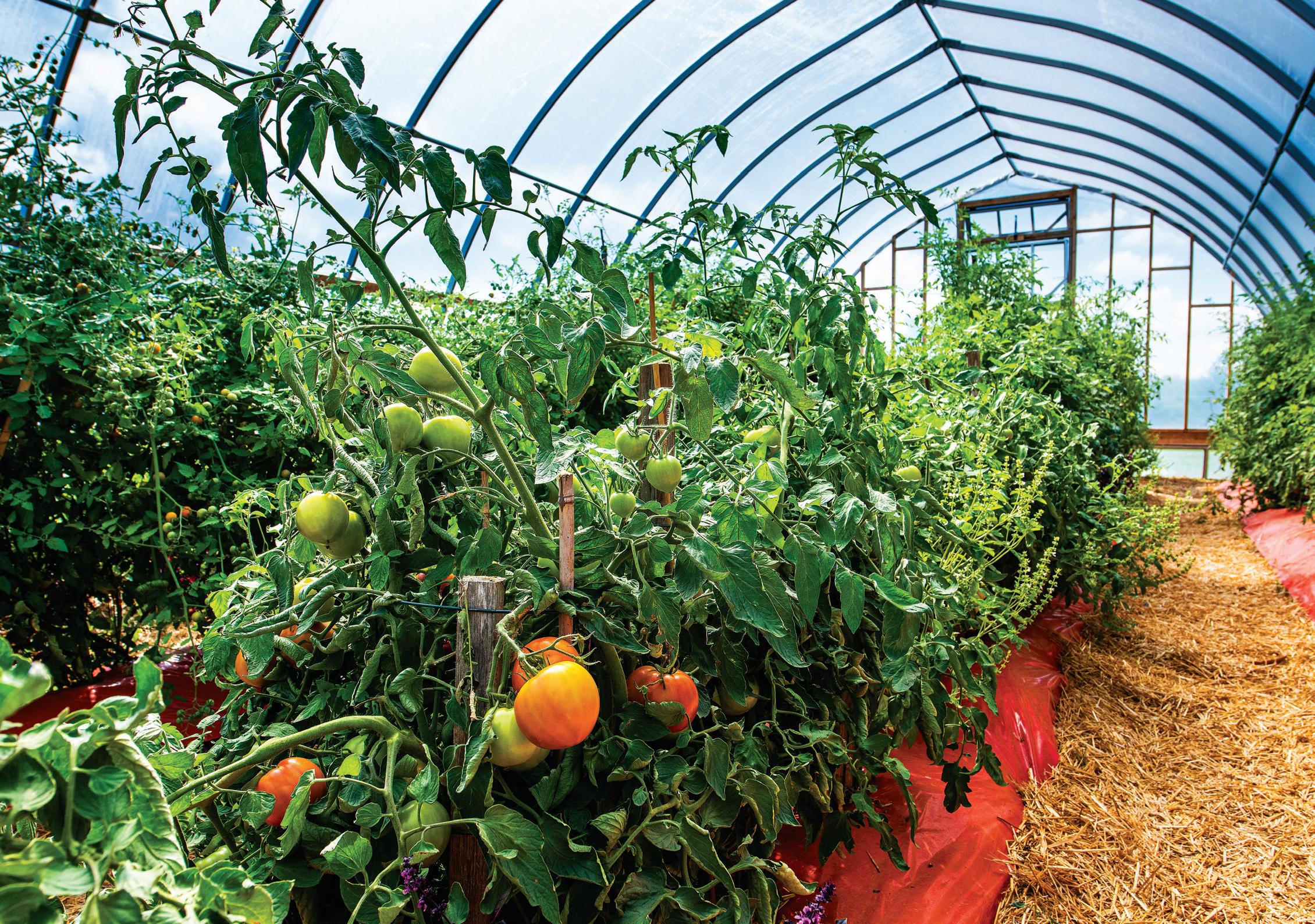
field tomato varieties include sunrise, mountain pride, red star and ultra-sweet. Heirloom tomatoes are increasingly cultivated by passionate northern gardeners who appreciate their distinct flavour, appearance and heritage stories. Growers rave about the big “bull’s heart” (it really does resemble a heart), the small Old German, a multi-coloured variety called “early Annie” and the yellow hued “native sun”. Big, small and colourful the fruit’s vast varieties (there are over 300 grown in Ontario) offer something for everyone’s wallet and taste buds.
Other than the obvious eating and growing practices, you may be wondering how you can get your slice of the abundant tomato action. Folklorists say by placing a large red tomato on the mantelpiece it will bring prosperity to your household. Be sure to change it every few days because there’s nothing worse than a rotten tomato, ask any show biz person. If a tomato is placed on a windowsill or at any entrance, it repels evil from entering.
You know harvest has begun when in mid-August, you are suddenly gifted bushels and baskets of tomatoes from friends and family. Or they are left anonymously at the door by a generous gardener who rings the doorbell and runs away. This could be you if you are a passionate grower of the prolific fruit.
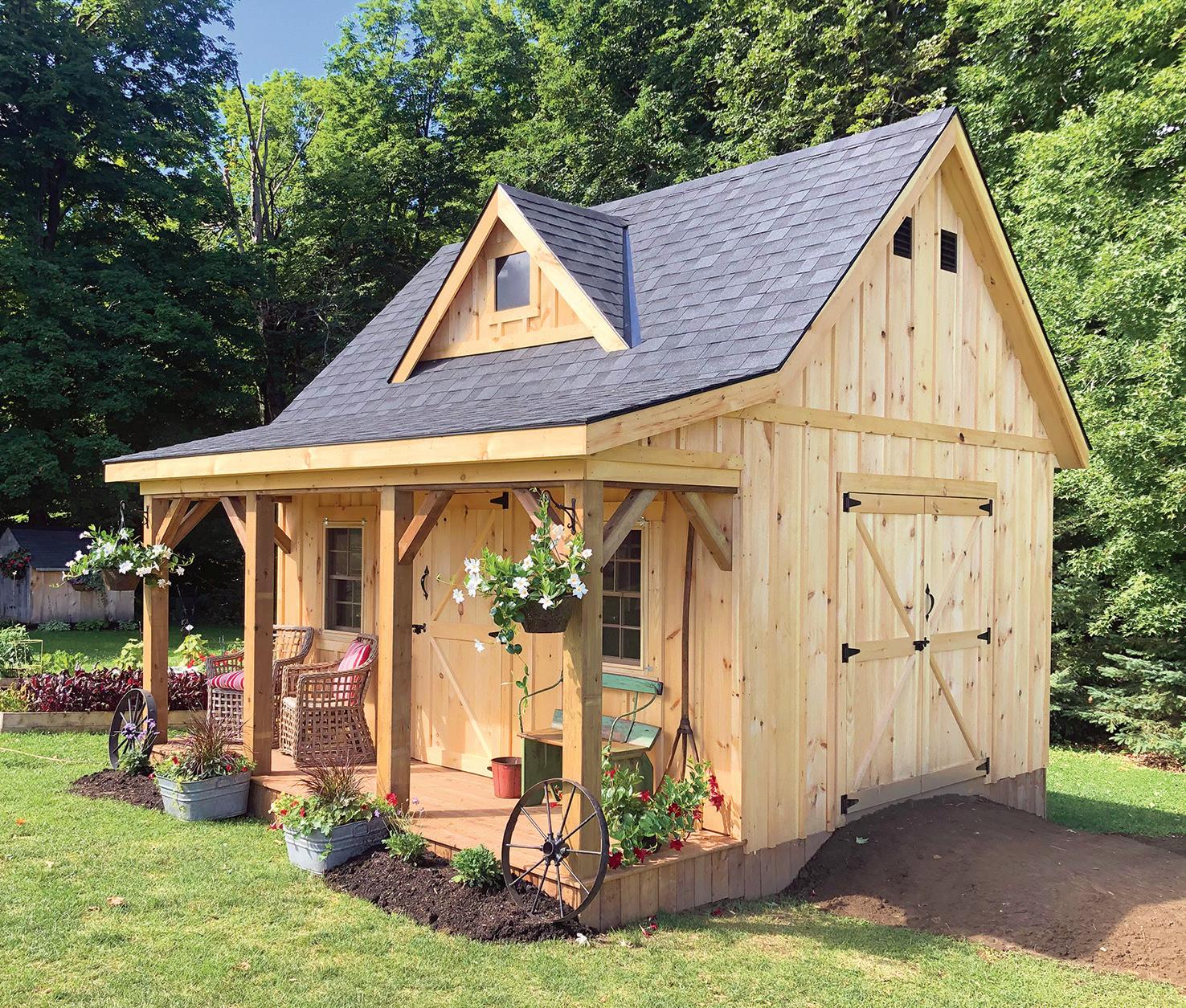













• Wonderful caregivers with a passion for caring

• Your own Care Team - the same Care Providers, consistent and committed to caring for you







• Your Care Planner available for you anytime

• Commitment to Communication, so everyone is “in the loop”
Companionship
Homemaking and Healthy Meal Preparation
Shopping, Errands and Transportation
Hygiene and Personal Care


Physical Assistance
Virtual Healthcare System Navigation
Nursing and Therapy

Dementia Specialists

Hospital-to-Home Transition and Post-Operative Care

“My Dad’s doctor asked if we were happy with Right at Home. I told him we were ecstatic with your service, professionalism, communication, and how caring your team is. My Dad said ‘I just love them, I’m very happy with Trisha and everyone I meet.’ Dad’s overall demeanor has really improved and perked up since we started with Right at Home. You make such a good impression on him, despite his dementia. Thanks again for the great job you all do for families and the peace of mind you give me and my sisters.” Pia M., Collingwood
I’m your local Right at Home Care Planner. I am so glad you found us.





Adrienne Wood, Care Planner, Georgian-Triangle 705-293-5500 | 1-855-983-4663 awood@rightathomecanada.com rightathomecanada.com/georgian-triangle/

IT’S NO SURPRISE that we are spending far too much time connected to technology. Whether it be a smartphone, TV, tablet or computer, we are experiencing information overload, and the effects are not all constructive. Excessive use of digital devices has been shown to have a negative impact on physical activity, sleep quality, mental well-being, cognitive function, productivity, and personal relationships.
Weekends are a great time to begin reducing your digital dependence. Here are some suggestions to get you started:
• Turn off notifications on your smartphone
• Inform friends and family to only contact you if absolutely necessary
• Avoid checking social media
• Avoid checking email
• Cover the clocks in your home and set your phone to a foreign time zone
By disconnecting from media and technology you will find more time for
in-person connections, physical activity, as well as experience a calming of your mind, more restful sleep, and the days will seem so much longer (this is especially true if you avoid looking at the time!) resulting in a more restorative feeling from your time off.
It doesn’t need to be all-or-nothing. If the thought of completely cutting yourself off from digital makes you uncomfortable, ease into it—start with one of the above suggestions and then add another the next
time you want to unplug. Begin with an hour or two each evening, then work into full days and weekends. If you have no schedule or essential reason to know the time, I recommend starting with blocking your clocks (a simple Post-It note over the home clocks will do).

But where can you find an area of no wifi or cell service (without having to endure backcountry camping) in 2023? When it comes to holiday time, I find it in the cottages of The Lodge at Pine Cove, on the French River. As for single days or weekends, I simply turn off my router or data— particularly effective if you can’t resist the temptation to check your device.
The degree of your addiction to digital connectivity will likely reflect in the discomfort you feel when trying to avoid it. Stick with it—you will experience the benefits with each consecutive time you do it.



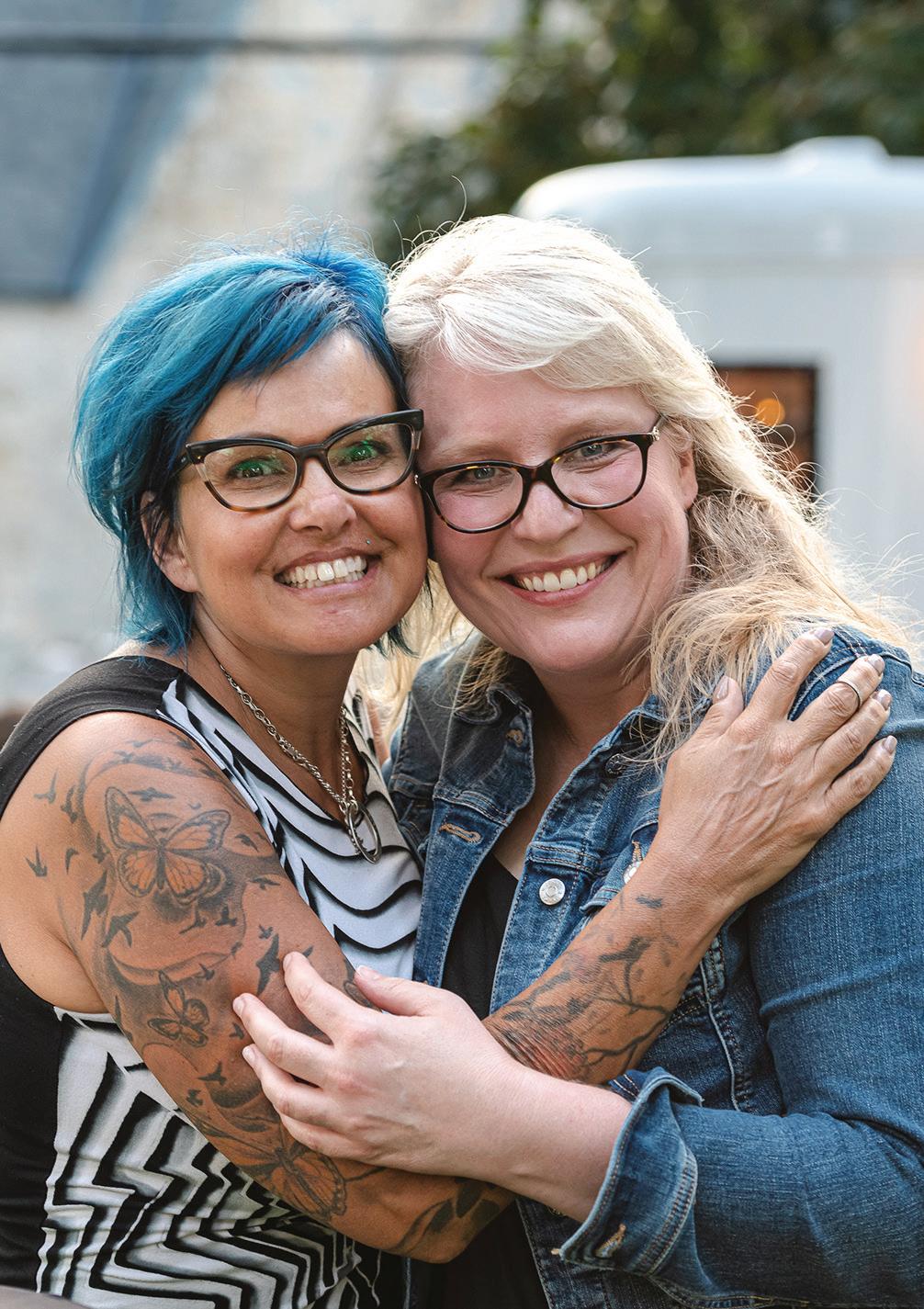

COSMETIC INJECTABLES
MEDICAL GRADE FACIAL TREATMENTS
HYDRAFACIALS
BODY CONTOURING
SKIN REMODELLING

LASER HAIR REMOVAL
WEIGHT LOSS & HEALTHY LIVING MANAGEMENT
PRP PLASMA TREATMENT
SPRAY TANNING

Inspired by the beauty of the natural world, Shannon Craig Morphew creates impressionistic Canadian landscapes utilizing a strong colour sense, freeform movement of oil washes and signature, bold brushwork, all interpreted in a highly energetic and linear style.
 by Deena Dolan
by Deena Dolan
WITH ENCOURAGEMENT
from her parents, both artists in their own right, Shannon Craig Morphew’s creative skills began developing early. Philip and Diane Craig relocated their young family from Ottawa to St. John’s, Newfoundland in 1976 where the isolation and stark beauty of that remote rugged island provided the inspiration for Philip to begin painting fulltime, while Diane designed jewellery. For Shannon, whose childhood was engulfed in this stimulating setting, continuously surrounded by pencils, paper and paint, the creation of art was a natural progression and has been her lifelong endeavour. “I’ve been painting and honing my craft for 25 years.” She recalls that with encouragement from her family, she was always creating something, either from a dream or real life. “Since the beginning, playing among the ocean eddies and windswept rocks of Newfoundland, I’ve held a deep respect for the natural world. I sometimes painted on my dad’s paintings, when he would let me. I painted a house on a hill for my first painting on a canvas.”

After moving back to Ottawa, Shannon auditioned for Arts Canterbury, a specialized Program of the Arts in the
Ottawa-Carleton District School Board, but there was a misunderstanding with her portfolio. “They thought my work was from a graduating student.” Extremely humble about her ability and talent, one can only imagine how advanced her skill level must have been in those early days for such an error to have been made. She was ultimately accepted and the program provided a challenging but supportive environment. “I learned
...a seasonal art gallery, showcases an eclectic collection of Paintings, Fine Art Photography and Pottery from local artists and American artists.”









THAT IS GOOD MARK NADJIWAN ThreeTreesArt.com

a lot about different ways to create art. I have so many interests it was difficult deciding what to focus on. The teachers were outstanding. To this day I still communicate with prominent artist, art teacher and arts advocate in Ottawa, Tim DesClouds.”
Post high school, Shannon continued her fine arts education at Sheraton College where she gained real-world experience in ceramics and woodworking through professional events, workshops, competitions and exhibitions in galleries and museums. “I loved the teachers. They were top quality and really cared about what they were teaching.” She realized however that she preferred to follow a different path, one where she had more control over the creative process, and so from there she turned to the Ontario College of Art and Design (OCAD). “OCAD had some great hands-on teachers for drawing and sculpting. The life drawing teacher was my favourite because he had fantastic stories from his own career and really left me with a respect for the craft.” Success was immediate. “I ended up selling all of my work that I had made for my thesis at OCAD. I enjoyed selling work and seeing it on display. It meant a lot to me to know that my work was bringing happiness to people’s lives. “
Following graduation, Shannon worked for a time at a post production facility doing creature designs and illustration. She also touched up World War I photographs for television shows— handling priceless artefacts from the war while she scanned and touched them up. “I was probably one of the first people doing it.” Her paintings, in the meantime, were immediately sought by collectors and her designation as “full-time artist” was almost instantly established—extremely rare for a young creative to achieve such recognition so early. Her father, who Shannon says is her biggest influence and supporter, maintains there was never any question about the direction of his daughter’s career. He describes her artistic launch as being like a rocket taking off; “She suddenly was there, doing solo exhibitions. She was in demand.” When asked about her success, Shannon quietly replies, “I don’t think about it. I’m a process person. It’s the creating of the work that matters most to me. I’m also pretty shy and don’t like putting myself out there that much.”
Shannon holds deep respect and reverence for the natural world. “In my paintings, I’m able to distill the emotions I’ve felt
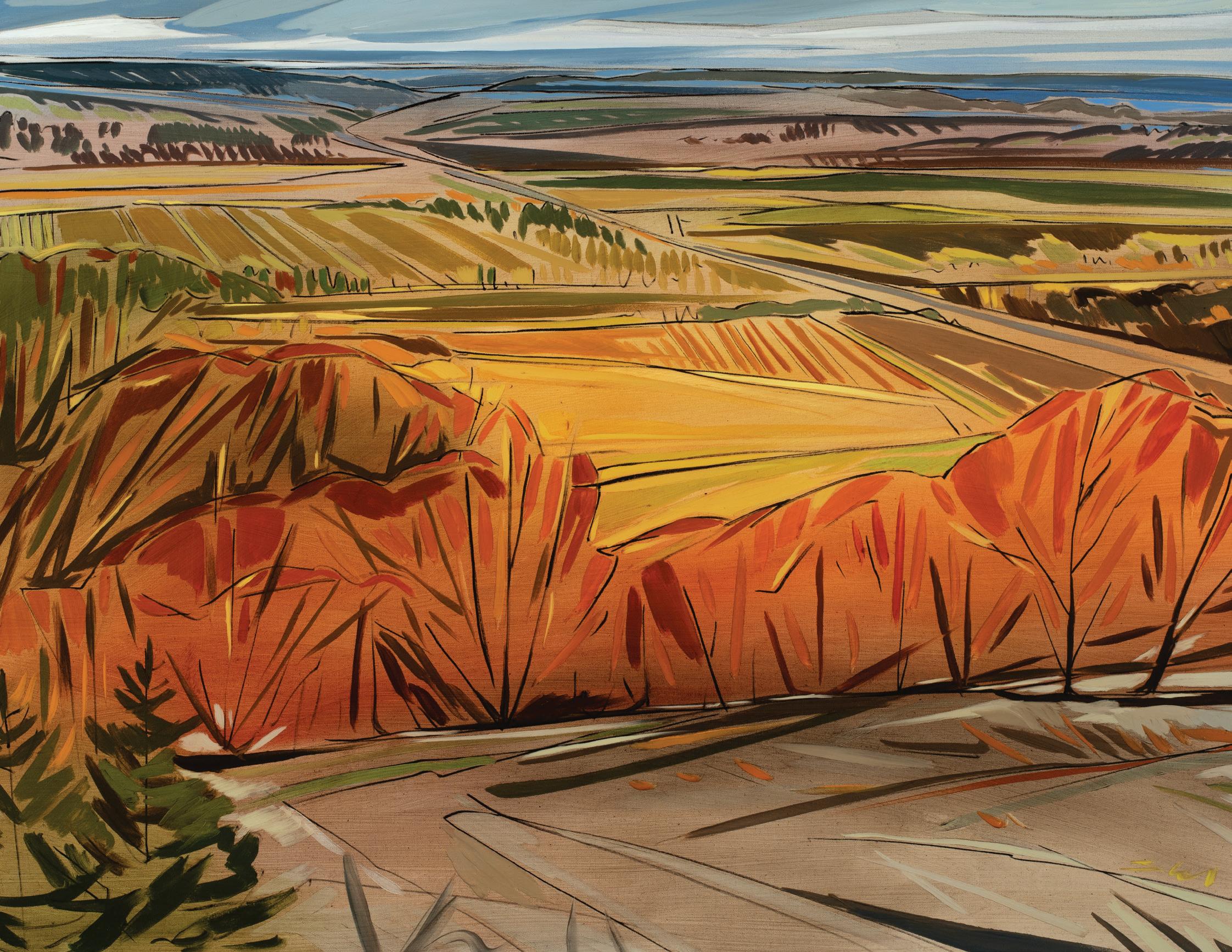



Hand-crafted jewellery made from sterling/fine silver and gold. Featuring in-house, exquisitely hand-cut polished focal cabochons from our own rough gemstones.

32 Chetwynd Lane | Lion’s Head, ON 226-568-0212 | Studio Open Wednesday-Sunday 11–5 bluebayjewelleryandlapidary.ca


at these times—to give the viewer a feeling of an open sky and the powerful immensity of the landscapes that I’ve experienced firsthand. Through abstraction I emphasize the wide expanses of cool sky against a still, sunbathed field or a mountain stream where the craggy rocks guide powerful water currents down below.”
Preparing for a show takes an average of three months and she generally works on several canvases at the same time. She will often begin a piece, then put it aside for a few weeks before returning and completing it. She describes herself as a proud, expressionist painter. “I created my style from my love of life drawing and its free form movement and the beauty of the natural world that grounds me.” She looks for subject matter throughout the year and will put together a show with what inspires her most at the time. Her digital camera and iPhone are constant companions; “I work from photos.” Always intrigued with light, Shannon often finds herself entranced by the simplest of things— even a single leaf can inspire. “In my painting technique, as in nature, I maintain a fresh spontaneity in my brushstrokes while
layering neutral-coloured washes of oils and exposing my underpainted lines.” Of note, her paintings are never over-worked.
Prime Gallery in Ottawa, hosted several solo exhibitions over 15 years ago, in the beginning of Shannon’s career. “Her work has become more subtle and refined,” said Director Maryrose Coleman, at the time. “A paring down to the finite elements of painting which creates a fresh take on Canadian landscapes. The new sophistication in her paintings derives from a range of successful colour contrasts that rely on the complexities within a minimal palette, yet maintaining her signature bold brushwork to create a more impactful encounter with landscapes.”
Travelling extensively throughout Canada and Great Britain has enriched this artist’s experience and has helped her create a truly personal and vibrant vision. “I love traveling to the north of England and Scotland. It has beautiful hills and vast open spaces where you can see for miles. I enjoy the Pennines, a range of uplands in Northern England.” These days however, travel is somewhat limited due to responsibilities and needs of her

 Two Islands Georgian Bay, oil on canvas, 40" x 40"
Two Islands Georgian Bay, oil on canvas, 40" x 40"
husband and two young boys. “I love being a wife and mother but it’s challenging—especially as a woman—to balance the needs of the family and my work responsibilities. One gallery owner told me that most of his female artists have stopped working after having kids. I never took time off of my career but have made countless sacrifices for my family.”
Shannon maintains a studio at a non-profit organization in Ottawa, which offers affordable space. “It’s a wonderful group of supportive artists—a wonderful environment in which to paint.” Locally, her work is showcased at Craig Gallery in Meaford. Owned and operated by her brother Jonathan Craig and Bridget Light, this “family gallery” also displays works by Philip Craig, Diane Craig and another brother, Jordan Craig.
When she is not in front of a canvas, Shannon practices Zen Buddhism at a Zen centre and often practices what she’s learned while she paints. One of the four Zen principles is the focus on interconnectedness in the universe. One gets a strong sense of that within Shannon’s work—constant motion yet serenity at the same time—never overworked. At home with family, she enjoys
tending to the gardens, cooking and setting precious moments aside for out of doors adventures; roaming nature trails; kayaking; and cross country skiing.
Looking ahead at what might be next on her horizon Shannon plans simply, to continue to create work. “It’s a very personal experience not connected to selling or other influences. It’s me in the moment applying paint like marking time. Sometimes I’ll be listening to music while I paint and the song and the painting are in the same part in my brain connecting by memory.”
Shannon’s work is represented in private, corporate and public collections throughout Canada, the U.S., the U.K., and Ireland.


shannoncraigmorphew.com
Craig Gallery, Meaford Loch Gallery, Toronto Koyman Gallery, Ottawa













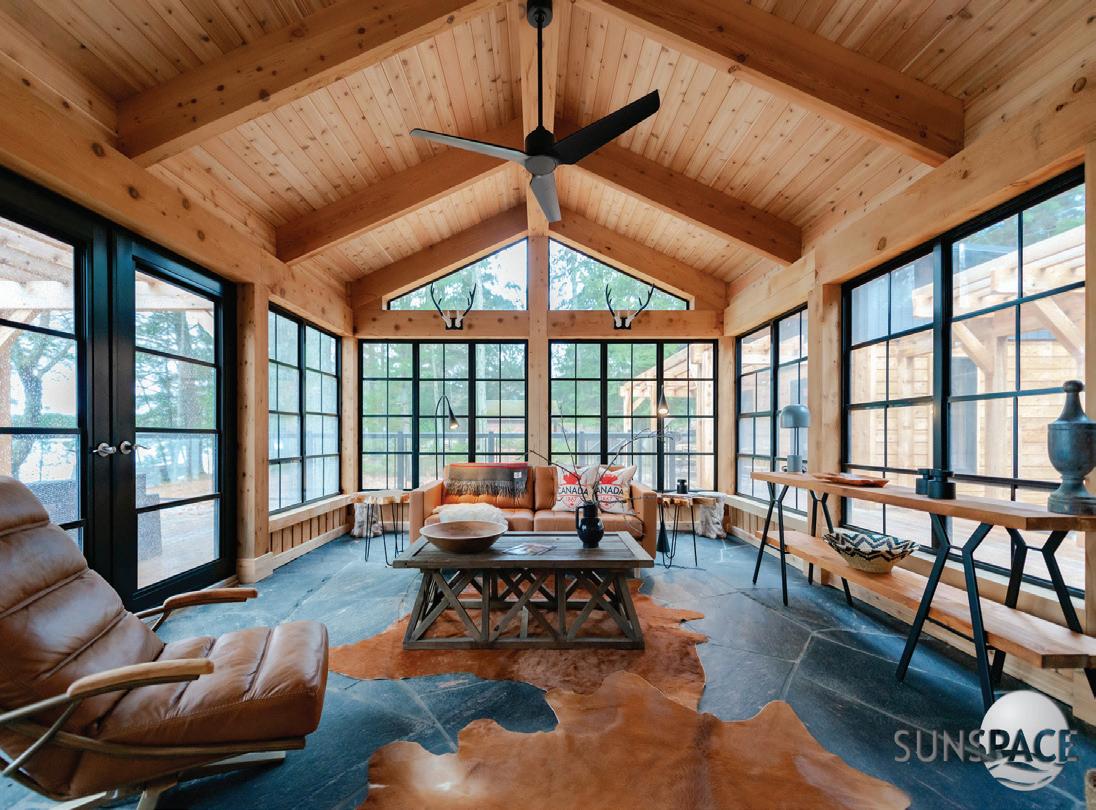


spaces like
blur the lines between indoor/outdoor living while capitalizing on comfortable living space.
 by Jo Redman, HBA, BED, DID, NCIDQ | photography by Clay Dolan
by Jo Redman, HBA, BED, DID, NCIDQ | photography by Clay Dolan
EARLIER THIS SUMMER I ventured to Charleston, South Carolina, where we spent an incredible afternoon touring the French Quarter on a private horse-drawn carriage. What captivated my interest immediately were the private residences and the multiple levels of verandas and terraces found on nearly all of the historic mansions. My imagination conjured endless possibilities of how these loggias or “in-between spaces” contributed to the lives of those who built these pre-Civil war homes—and how the current owners continue to enjoy them.
Charlestonians still use the term piazza, meaning “open space” in Italian—appropriate, when you consider that these homes were purposely built with the piazzas facing south or west to get the cooling breezes from the sea. What I found most interesting about the piazzas, was the inclusion of an exterior door—known as a hospitality door—which acts as a second entrance to the home. A distinctly southern notion, a propped-open door symbolizes that the family inside is ready
to receive visitors. Conversely, a closed door offers social cues akin to “do not disturb”. Today, many transitional spaces like balconies, pergolas, courtyards and canopies are used to welcome our neighbours or to encourage spontaneous conversations with passers-by. These architectural extensions of both sunlight and shade not only offer shelter but also provide a space for entertaining or quiet relaxation—an al fresco oasis between private and public life.
Here on the Escarpment we also celebrate transitional spaces that encourage the flow between indoor rooms and outdoor elements—especially in the warmer months. I’ve spent a lot of time at Pinnacle Rock Farm in the Blue Mountains (pictured above). Over the years the screened-in porch has become a place of refuge, a place to dine and entertain. An in-between place to meditate or be lulled to sleep by the sounds of gentle rain and cross-flowing breezes. The sunroom at the back of the house is now enclosed with expansive glass panes which





allow unobstructed views of the Escarpment, Pinnacle Rock and a pond which is often inhabited by geese and ducks. In the winter months it’s designed to collect passive solar energy and in partnership with the pellet stove, a comfy, warm setting is achieved. Oftentimes in the midst of winter snowstorms, boundaries are blurred and the thrill of being trapped in a snow globe is not so farfetched.
Incorporating an in-between space can enhance the quality and experiences of everyday life at home. They’re multi-functional, based on our needs—whether for entertaining or simply a private escape (or both!). Connection to the outside world and nature in general provides positive feelings and incorporating an in-between space can add an entirely new dimension and design appeal to a new or existing home. Combining outdoor serenity with the comforts of indoor amenities has become a popular design trend and has added an increased investment value. For apartment or condo dwellers, the terrace or balcony might be their only private, outdoor space.
I encourage you to kick start your inner connection with mother earth and take your outdoor space to another level. If you already have a covered porch, reimagine it—reach out to a local carpenter or your favourite building store to see if they can construct a series of framed floor-to-ceiling screens that would cover the entire length, in other words, screen it in. You can also add a screen door on either side for ease of access to your yard, deck, or gardens. The benefits are endless but the most obvious is avoiding the buggy season and inclement weather conditions. Add some comfy seating, a dining table and chairs, some area rugs, perhaps a candelabra or two and voila, you’ll have a beautiful extension of your home that flows seamlessly from your existing kitchen/family and dining areas.
It is our hope that as you are reading this that you too are resting on a comfy chaise in your outdoor retreat, away from the hustle-bustle of everyday life, watching the world go by, one slow moment at a time.
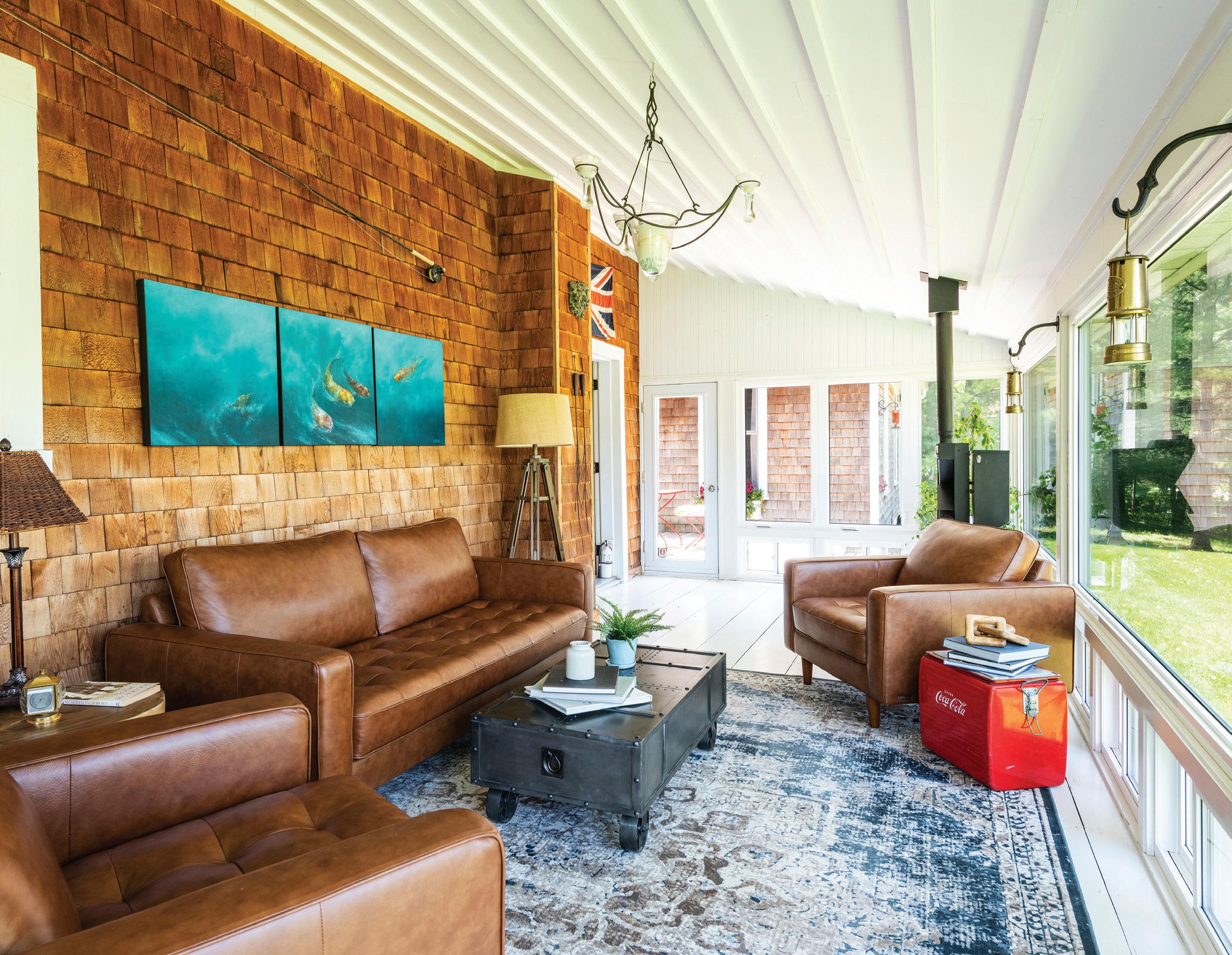


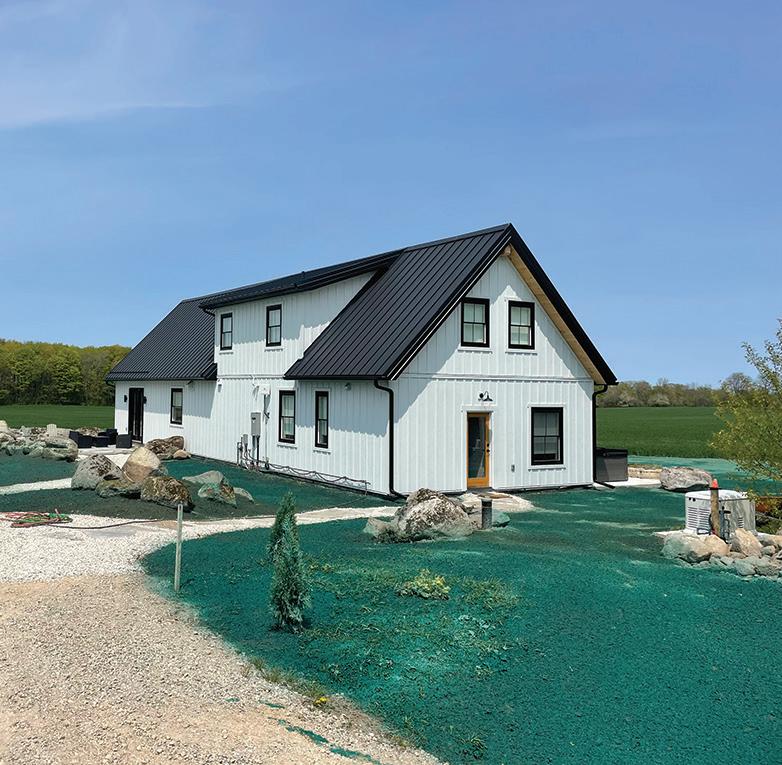
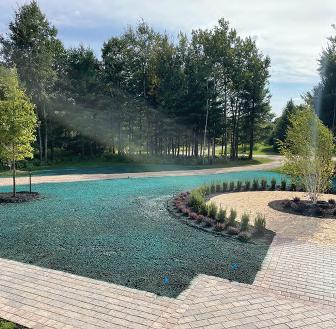





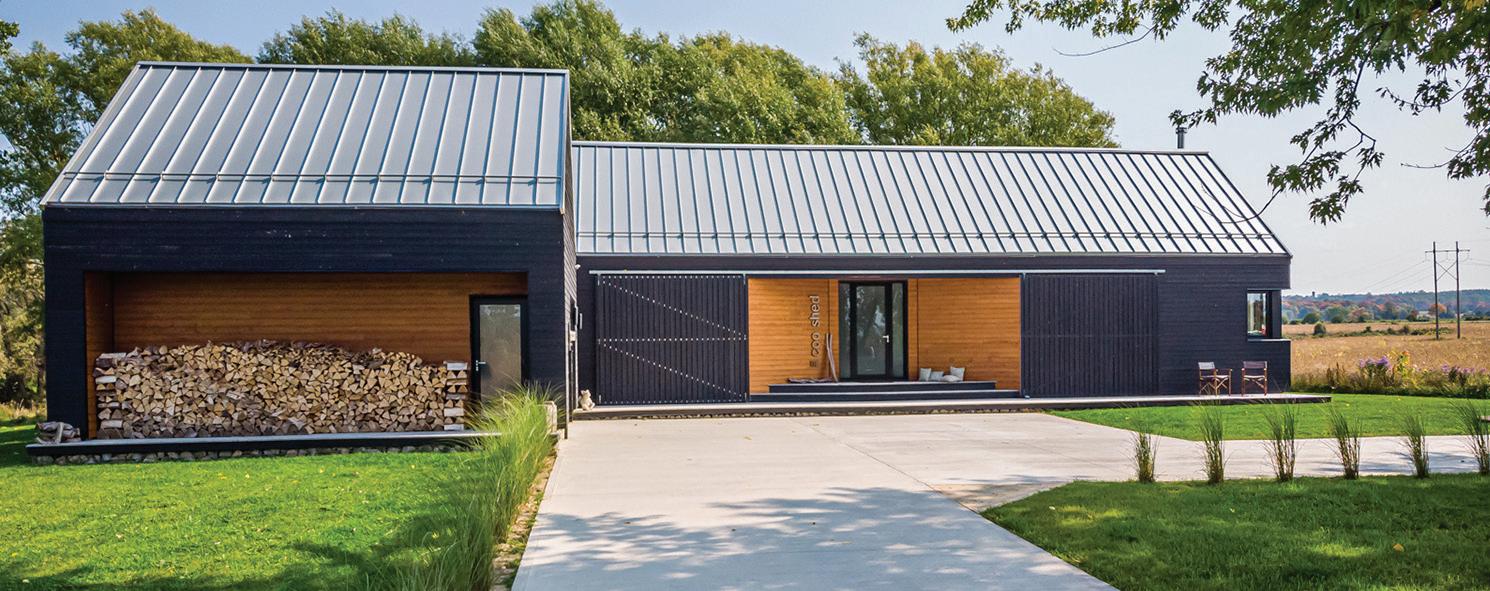





One couple’s blissful journey into retirement begins with an idyllic, tailor-made haven.
IT WAS JUNE WHEN OAKVILLE COUPLE Jennifer and Jim Hardy finally moved into their newly-built retirement dream home at the Georgian Bay Club. Modern and bold in design with clean lines, extensive glass, dark grey concrete panels, peaked black steel roofs, and natural wood accents, the house is distinguishable from other luxurious neighbouring homes, which vary in style from mountain contemporary to craftsman, to traditional to modern. The couple, both originally from North Vancouver but met in Ontario, began their building journey with their Oakville residence in 2014. In 2021, they started planning their Georgian Bay Club home. With Jennifer’s masterful interior design and décor skills, “just right” building materials, fixtures and accessories were carefully selected. Coordinating with




architectural designer Steve Hamlin and builder Coulter Dawe and Associates, the project progressed steadily, while materials such as flooring and tiles, plumbing fixtures, cabinetry, and furniture were accumulated by Jennifer and stored—patiently awaiting their installation and debut.
“The process started with architectural designer Steve Hamlin asking us to first lay out in circles the size and perspective of rooms and spaces we had in mind, and eventually, after some modifications, creating a final design that would be submitted to the Club for approval,” says Jennifer. “With certain architectural restrictions to adhere to, namely roof pitch requirements, we needed to squish some square footage mainly down the middle of the house to come up with a final plan.”
Stepping through the majestic ten-foot high by six-foot wide black fibreglass main entrance door, you enter a large, light-filled area that Jennifer calls “the lounge”, with a great wall of dark grey Urban Concrete panels that extends outside through expansive floor-to-ceiling thermal glass. The sizeable windows overlook a landscaped southwest-facing patio with wood burning fireplace, outdoor appliances and a pool. The outdoor furniture, made of marine-grade rope, compliments the couches and chairs in the lounge, living room and family room. Combined with the concrete panel treatment, the effect brings the inside outside, and sets the stage for the look and feel of the rest of the home.

“With Patrick Coulter as my sounding board for brainstorming ideas, we came up with an integrated approach to the design of our house, with common elements bringing everything together,” says Jennifer. “As we did with the interior and exterior, the furniture, design and décor continue to flow through the house, with textured furniture in charcoal, grey and ivory white, and bits of black in all the rooms and spaces. All the hard surfaces are matte black or Urban Concrete.” To enhance the overall ambiance, the main and basement floors of the home feature ivory-colored concrete. This exceptional concrete is made from carefully selected imported aggregate and sand, meticulously poured, ground, and polished on-site. What’s more,


it incorporates radiant in-floor heating, ensuring the utmost comfort for the home’s occupants.

To the left of the lounge is an expansive eating/entertaining area featuring a sleek and uncluttered kitchen with matte black Dekton countertops. Dekton products, known for their durability, scratch resistance, and inviting warmth, are utilized both within the home and in the outdoor patio area. Adjacent to this is a dining room next to a showcase wine storage area that Jennifer calls, “my little wine wall”. This leads out to a comfortable sunken living room with a fireplace, overlooking the gardens, with a black grand piano to the side. The centrepiece of the living room is a live edge, white-washed coffee table created locally in Meaford by Tree Green Team.
The home encompasses a total of six bedrooms, thoughtfully integrated into its design. On the main floor, is a luxurious master suite, while the second floor boasts three bedrooms, with one of them fondly referred to by Jennifer as the “junior master.” The lower level is home to two additional bedrooms. Each of these sleeping spaces harmoniously incorporates themed design and décor elements, exemplified by the presence of stylish black brick walls in the powder rooms. The junior master and second floor



bedrooms feature private decks and windows strategically placed for optimum light and privacy. Throughout the home, there are plenty of storage spaces, including linen closets. The entire home and its advanced tech features were integrated for automation by Red Brick Security.


The lower level of the home is clearly designed for family play and relaxation. As Jim is an avid golfer, one room is adorned with an indoor golf simulator provided by InHome Golf. This remarkable feature includes a floor-to-ceiling screen, enabling players to immerse themselves in a virtual round of golf. From driving off the tee to precise approaches, skillful chipping, and perfect putting, individuals can experience the thrill of playing at renowned golf courses from around the globe. In keeping with the theme, a couch from the couple’s Oakville home was reupholstered in a whimsical golf tee pattern.
Right next door is a room devoted to one of Jim’s big passions—music. The rehearsal room, fully equipped with a drum set, amplifiers, speakers and microphones, also contains a large closet filled with Jim’s collection of acoustic and electric



guitars (needless to say, he’s an accomplished guitarist). Adorning the wall is a captivating photo capturing Jim’s band in front of Toronto’s iconic El Mocambo Tavern. This particular venue holds great significance, as it served as the backdrop for numerous gigs dedicated exclusively to fundraising. Through their passionate performances, they successfully raised millions of dollars for charitable causes. Out from this room (which can be closed off during rehearsal sessions and opened for sing-along karaoke parties) is a main relaxation space containing comfortable chairs and couches in front of a fireplace, with a fully-stocked bar and a table shuffleboard game.

When it came to selecting design accessories and art, Jennifer made a deliberate choice to bypass store-bought items. Instead, she opted for personal memorabilia that hold sentimental value, symbolizing her life with Jim and their five children. “Everything we put up, with the exception of a few fun/colour/mood pieces, is either family photography or art that our kids made,” says Jennifer. “The drawings by my son, a very talented tattoo artist, are both unique and whimsical. Our daughter is also artistic. It all has meaning to us.”

Clear View Electric Ltd has developed a reputation in the custom home and renovation market in Simcoe & Grey Counties. Whether we are involved in custom homes, extensive renovations, or providing maintenance or upgrades to homes or businesses, each is an important task for Clear View Electric Ltd. Each member of our team is dedicated to providing safe and professional services to ensure the beauty and function of your home or business meet the highest possible standards.

705.627.8103
clearviewelectric.ca



“The furniture, design and décor continue to flow through the house, with textured furniture in charcoal, grey and ivory white, and bits of black in all the rooms and spaces.”




Handcraf ted in Ontario Beautifully designed to last a lifetime



Builder Patrick Coulter, whose partner Jason Dawe worked directly with Jennifer and managed the construction on-site, describes the Hardy home as a truly contemporary building; “a one-off”. He explains, “Jennifer was passionately involved in the design and décor of the home, totally focused on the project all the way through, carefully selecting all the materials, fixtures, lighting, furnishings and accessories to make it her own. As to the home’s design, it’s the most contemporary building the Georgian Bay Club has ever allowed. With the marketplace evolving, I think it’s a nice signal for the Club as a whole.”


For Jim, the project was a labour of love. “Building our home has truly been a love story,” he says. “Being an observer all the way along, I can say that our new home represents Jennifer— her talent, passion, and incredible style, inside and out. She has spent thousands of hours picking every surface and every piece of furniture, searching for parts, and working with the builder throughout the project.”
Embracing her role as a dedicated homemaker throughout


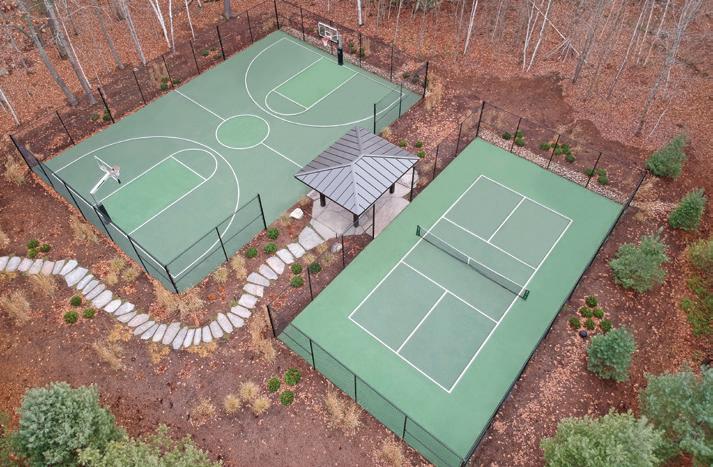




It’s a rewarding culmination of their efforts, and they eagerly look forward to this new chapter of their lives.

her adult life, Jennifer has taken on various responsibilities with zeal. Not only has she meticulously designed and overseen the construction of their Oakville home, along with a couple of renovations, but she has also expertly orchestrated numerous family and business events. Proudly reflecting on her contributions, Jennifer shares, “My husband is a retired Chief Investment Officer and CFO. As with all my past projects, with our new home, I have really considered myself the CEO.”
Having dedicated months to meticulous planning and overseeing the construction process, Jennifer and Jim are now filled with excitement as they embrace the relaxed and serene lifestyle of Southern Georgian Bay during their retirement. It’s a rewarding culmination of their efforts, and they eagerly look forward to this new chapter of their lives. “We originally thought about settling in Kelowna, BC, but decided since most of our kids are in Ontario, that this is the place for us to be.”
• Builder – Coulter Dawe & Associates
• Architectural Designer – Steve Hamlin

• Stone Masonry – Urban Concrete Design
• Fireplace – Ontario Hearth Ltd.
• Windows – Tiltco Architectural
• Kitchen Cabinetry – Modernplus Kitchen and Bath Design
• Window Coverings – Gline Inc.
• Appliances – Macdonald’s Furniture and Appliances
• Entertainment and Alarm System – Red Brick Group Inc.
• Bathroom Cabinetry – Modernplus Kitchen and Bath Design
• Bathroom fixtures – Taps Kitchen and Bath/Baril Design
• Tile & flooring – Ciot Inc.
• Light Fixtures – Klaus Neinkamper/Moooi
• Furniture and Accessories – Klaus Neinkamper/Joshua Creek Furniture/Tree Green Team
• Landscaping – Cedar Springs Landscape Group/MacDonald Landscaping

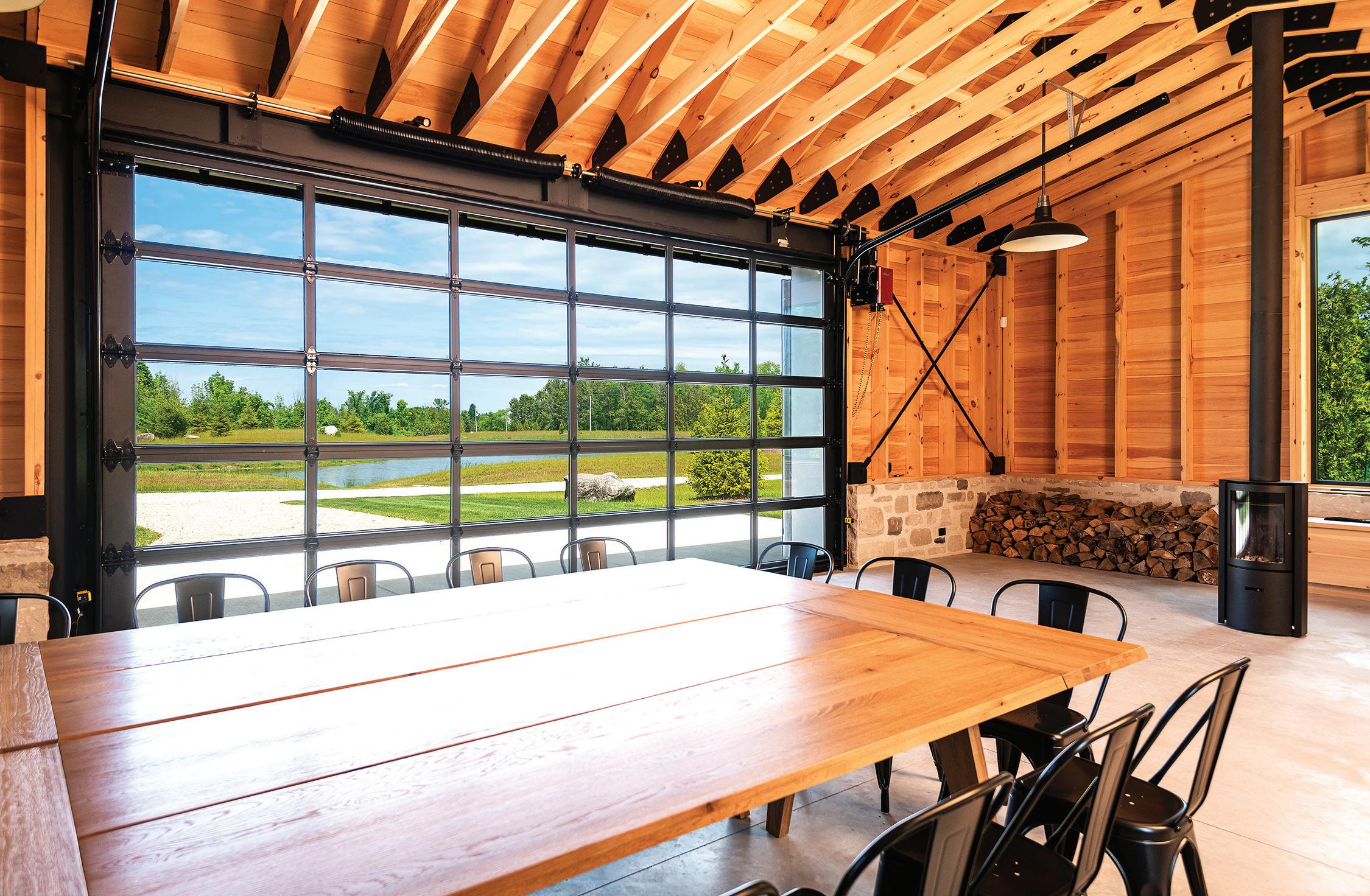


At G3 Poo l a n d Spa, we are co mmit te d to o ur p r inciples and will b e t he b es t c us tom s wimming p ool b uild er and f ull s er vice co mpany in t he ind us t r y.

C all to b oo k yo ur o p e ning wit h us and review t he we e k ly, bi - we e k ly and over all mainte nance pac k ages we of fer. For t hos e of you interes te d in get ting o n o ur s c he d ule ear ly, we als o of fer a 13% dis co unt on o ur we e k ly mainte nance p rogr ams.

Carved by nature, this solid wood live-edge coffee table is sturdy, durable, and made of up cycled Indonesian teak and tempered glass. Each piece is a one-of-a-kind work of art.

MACDONALD'S FURNITURE & APPLIANCES
206518 HIGHWAY 26 EAST | MEAFORD | 519.538.1620
MACDONALDSFURNITURE.COM

For the Wine Lover! This wine tasting flight and wine glass caddy is locally handcrafted from aged barrel staves. Each piece is one of a kind and makes a unique gift.
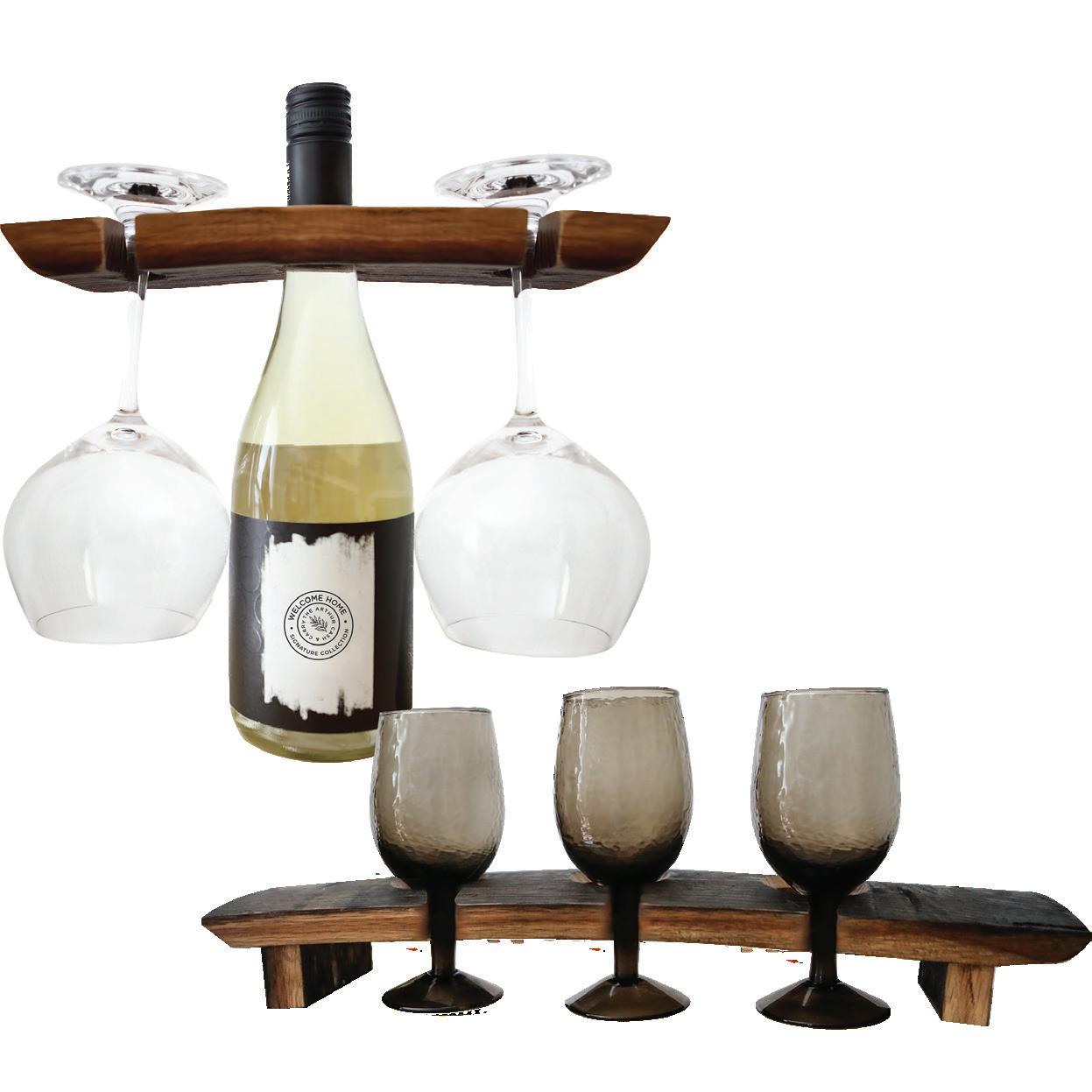
ARTHUR CASH & CARRY
101 SMITH STREET | ARTHUR 519.848.6320
ARTHURCASHANDCARRY.COM
Add some charm to your porch or patio this summer with these large resin hares. Perfect together or on their own!

MAGGIE + DIX HOME AND GARDEN
210 HURONTARIO STREET | COLLINGWOOD MAGGIEANDDIX.COM
Locally made from a combination of spruce and pine, this potting bench is a great addition to any garden shed.
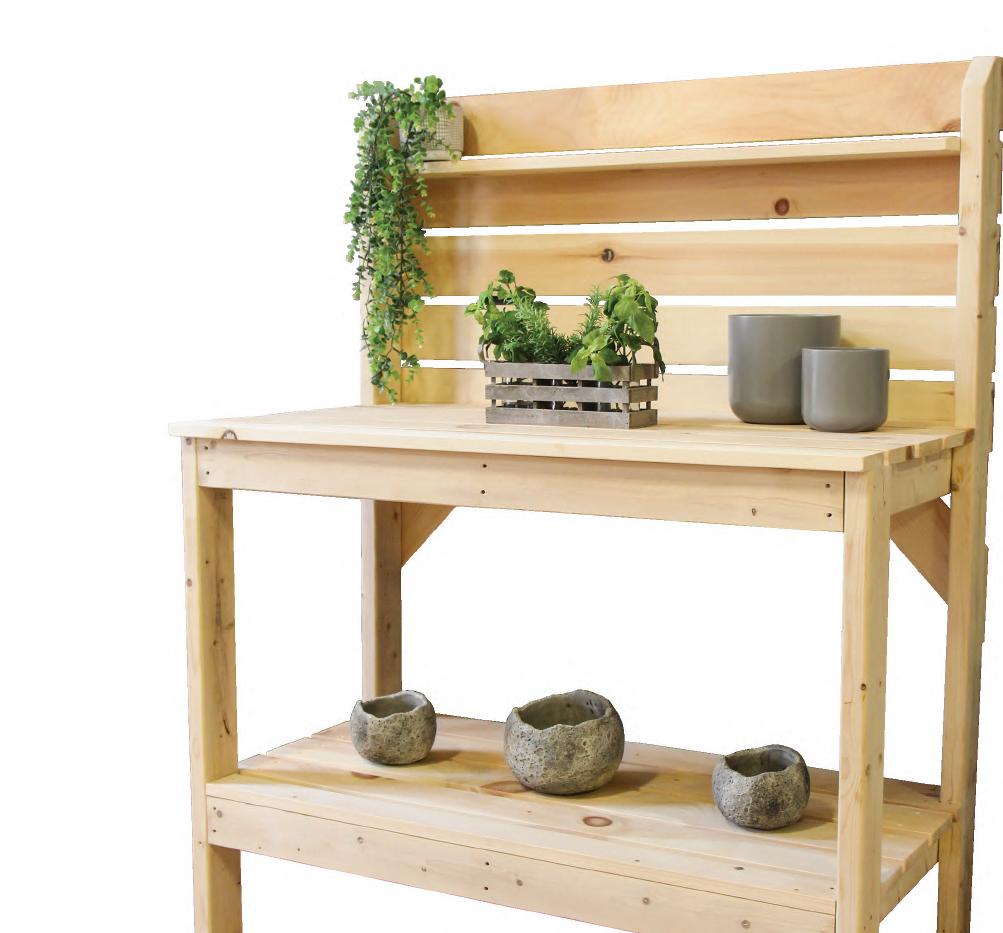
THE RUSTY STAR
408065 GREY ROAD 4 | MAXWELL 519.922.2010
THERUSTYSTAR.CA

These custom-made cushions, suitable for both indoor and outdoor use, feature high-performance fabric with a linen texture. The dockside collection offers a range of options, including bold stripes, crisp clean stripes, and a stylish herringbone design.

FARROW ARCARO DESIGN (FAD)
51 HURONTARIO STREET | COLLINGWOOD | 705.444.8330
FARROWARCARODESIGN.CA

STUDIO 101 ART GALLERY
101 GROSVENOR STREET SOUTH | SOUTHAMPTON 519.797.2052 | IG @ STUDIO101ARTGALLERY
Sterling silver and 18k gold mixed metal rings featuring Kingman turquoise, blue chalcedony and spessartite paired with tsavorite garnet.

BLUE BAY JEWELLERY AND LAPIDARY
32 CHETWYND LANE
LION'S HEAD | 226.568.0212 BLUEBAYJEWELLERYANDLAPIDARY.CA
Colourful, modern and rechargeable, the TAKKU portable light provides up to 20 hours of illumination per charge, in two painted and four anodized finishes. We should expect nothing less from Artemide.

GREY BRUCE DESIGN STUDIO | #5 MAIN STREET WEST MARKDALE | 519.369.8890 | GBDS.COM
MARGARETHE VANDERPAS STUDIO


24 CHETWYND LANE | LION'S HEAD | 519-433
MARGARETHEVANDERPAS.COM
“Lyal Island, Lake Huron” by Margarethe Vanderpas, oil on canvas, 3ft x 4ft. “Quiet Dawn” by Cheryl Ann Hills, oil on canvas, 24"x24".Strong, contemporary and sculptural, Archilog firewood holders are handcrafted in Elmira. Each piece is made to match your modern home or cottage and is available in slate grey or black powder-coated.

ARCHILOG | 519.400.6633 | ELMIRA | ARCHILOG.CA
4 NORTH
STREET | MEAFORD 519.539.3671 | CRAIGGALLERY.CA


Make you own brown leather cross body bag using an everyday sewing machine. The bag will have an inside or outside pocket, magnetic closure and Machine sewing skills essential— all materials provided.
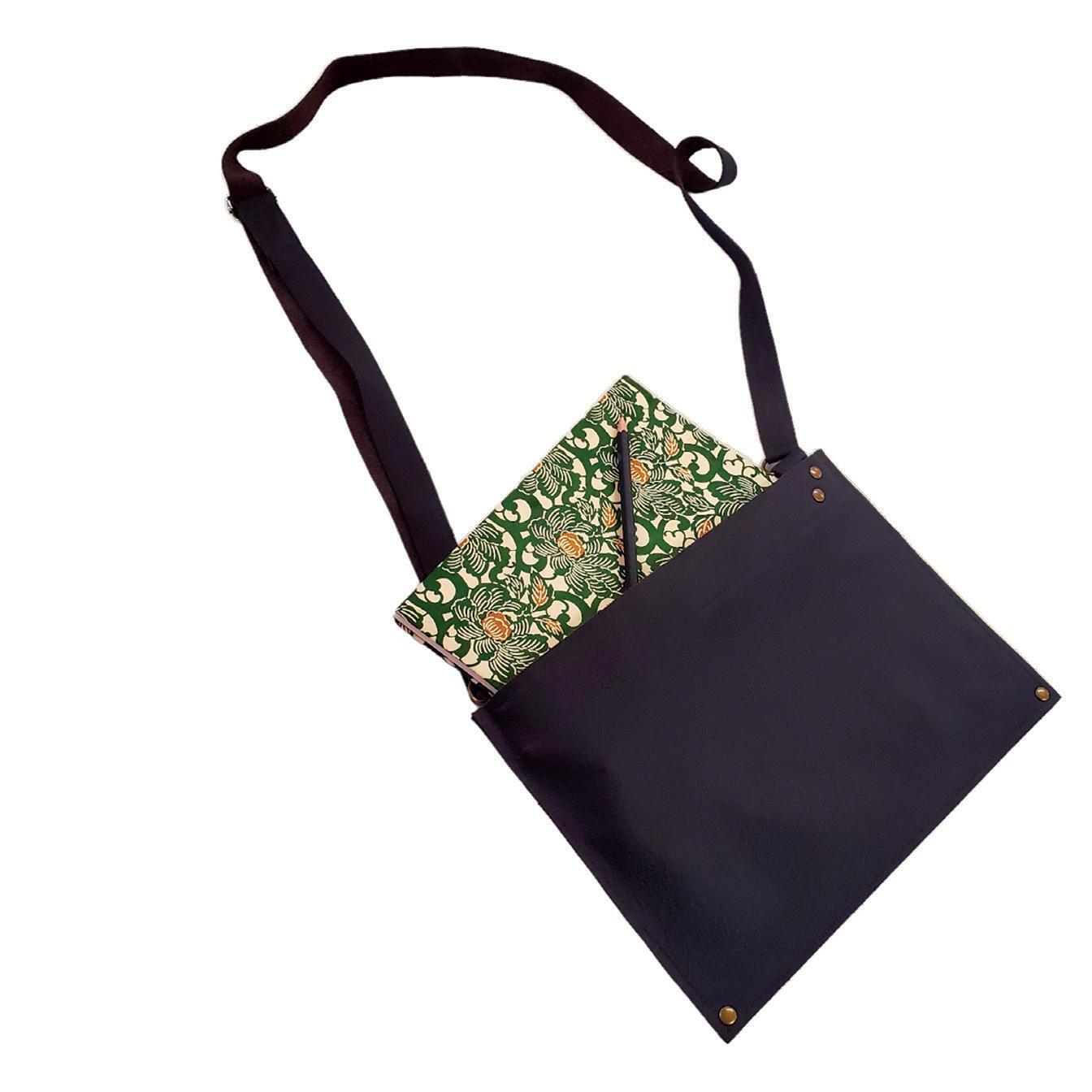
and back paired with a stainless steel frame giving a subtle nod to mid-century material mixes.

ASPEN & IVY | 322 KING STREET UNIT 5 | BARRIE | 705.721.8585
ASPENANDIVY.CA




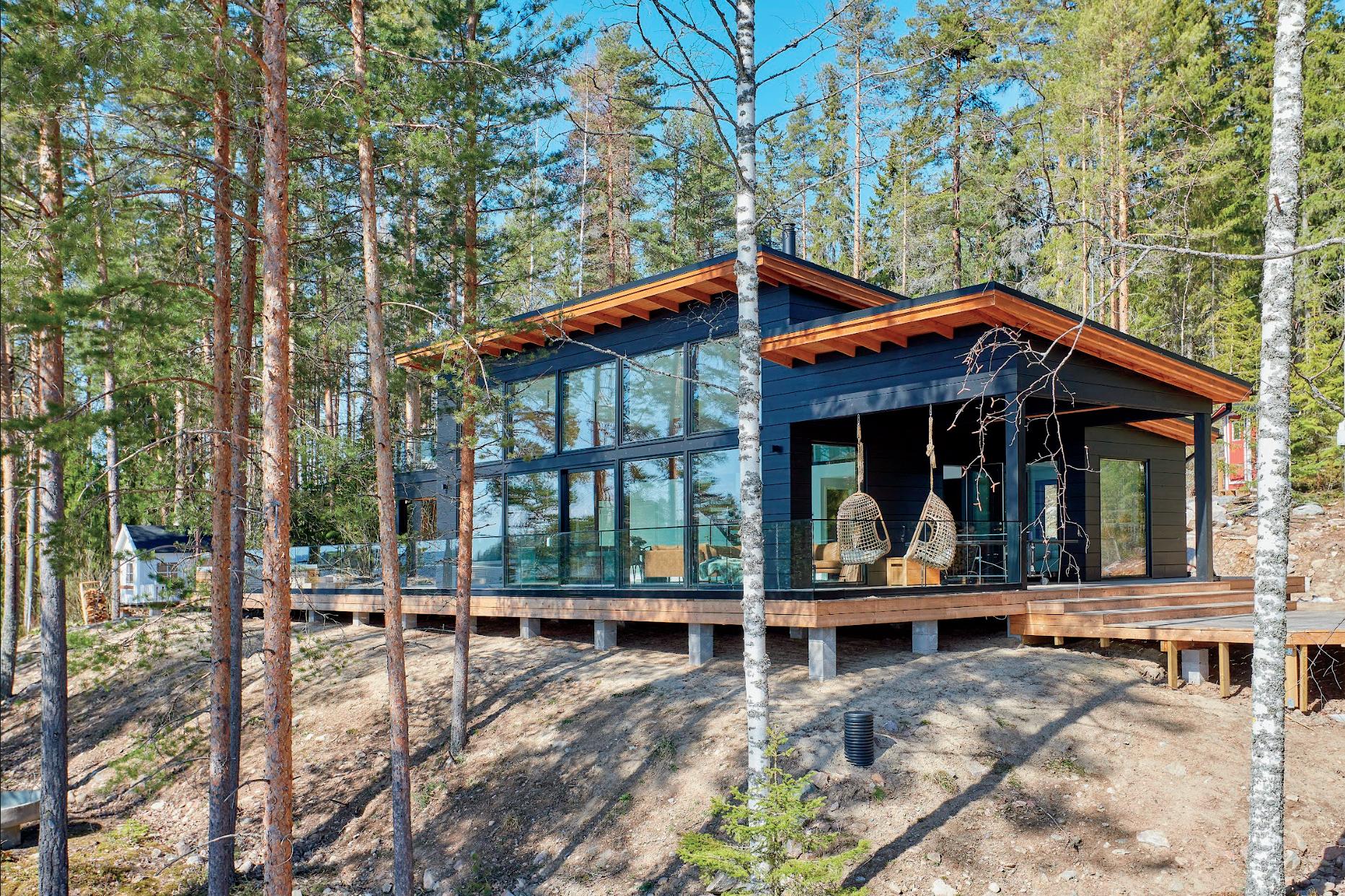

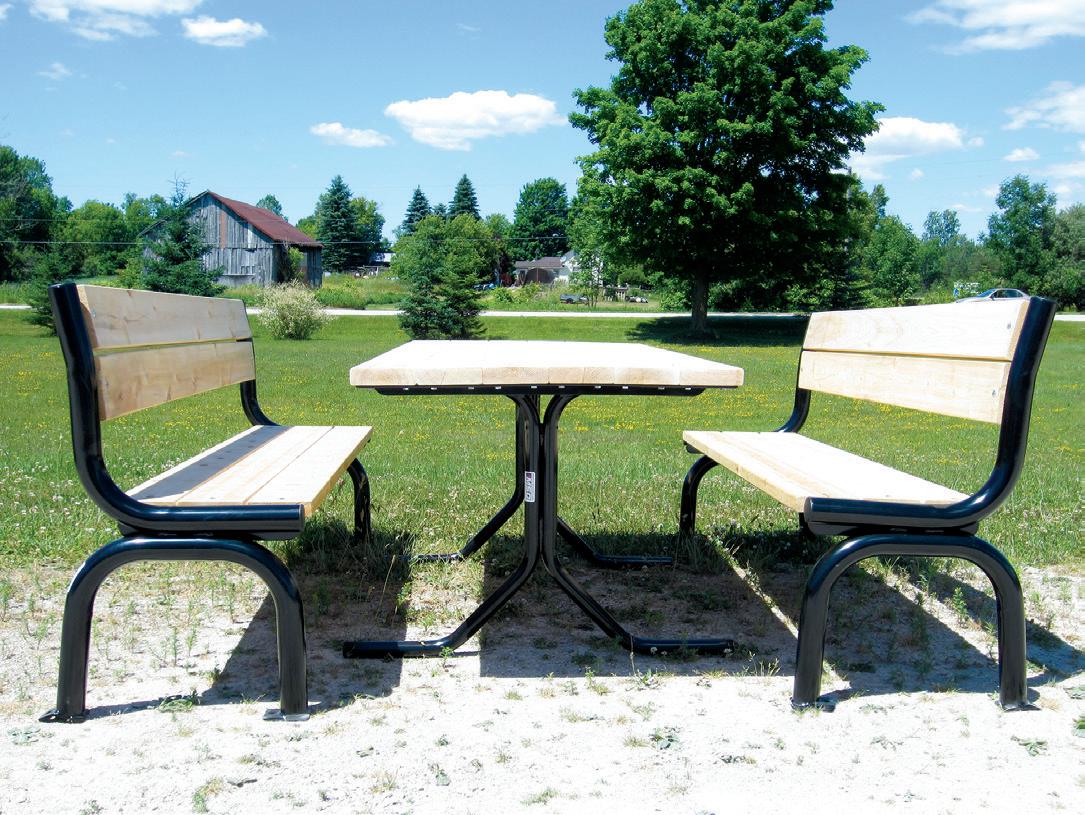

LOFT GALLERY | 18 BRUCE STREET | THORNBURY 647.296.9797 | LOFTGALLERYART.COM

Kubota’s residential innovation turns mowing into a power trip and manages to keep your budget trim, too. The Z200 Series maneuvers through landscapes with comfort and easy-to-use features.

ROBERT’S FARM EQUIPMENT
MOUNT FOREST 519.323.2755
OWEN SOUND 519.376.5880
LUCKNOW 519.529.7995
MEAFORD 519.538.1660
CHESLEY 519.363.3192
ROBERTSFARM.COM
PETER
Illuminate your space in style with this sleek and modern Kuzco Lighting Chute Collection LED Pendant Light.

GEORGIAN DESIGN CENTRE 84 HIGH STREET COLLINGWOOD
705.444.2100 GEORGIAN DESIGNCENTRE.CA
A true Canadian classic, MacAusland woolen blankets have been made in Prince Edward Island for six generations. Made with 100% soft virgin wool, the blankets come in a variety of colours and are an essential for indoors or out by the fire.

LOVED YOU MADLY
16 BRUCE STREET | THORNBURY 226.665.3533
LOVEDYOUMADLY @ GMAIL.COM
This solid wood and rattan bench provides comfortable seating for three people at a table or serves as a stylish accent piece at the foot of a bed.

BAREBRICH | 920 2ND AVENUE EAST | OWEN SOUND 226.664.2273 | BAREBIRCH.CA
 “A Peaceful Place for Reflection” by Nadia Lassman, 30" x 60", acrylic on canvas.
“Wall Island II” by Peter Dušek. \Pigment print (photograph). Edition 2 of 5, exquisitely framed 49" x 37".
DUŠEK GALLERY | 151 MILL STREET CREEMORE | 519.217.7770 | PETERDUSEK.COM
“A Peaceful Place for Reflection” by Nadia Lassman, 30" x 60", acrylic on canvas.
“Wall Island II” by Peter Dušek. \Pigment print (photograph). Edition 2 of 5, exquisitely framed 49" x 37".
DUŠEK GALLERY | 151 MILL STREET CREEMORE | 519.217.7770 | PETERDUSEK.COM
“Red Brick Group installed and have monitored the security system in my place in Collingwood since 2009. Their attention to detail and level of customer service is exceptional. I know I can rely on Red Brick no matter the situation and I highly recommend them based on long term personal experience.” – R. Taylor




















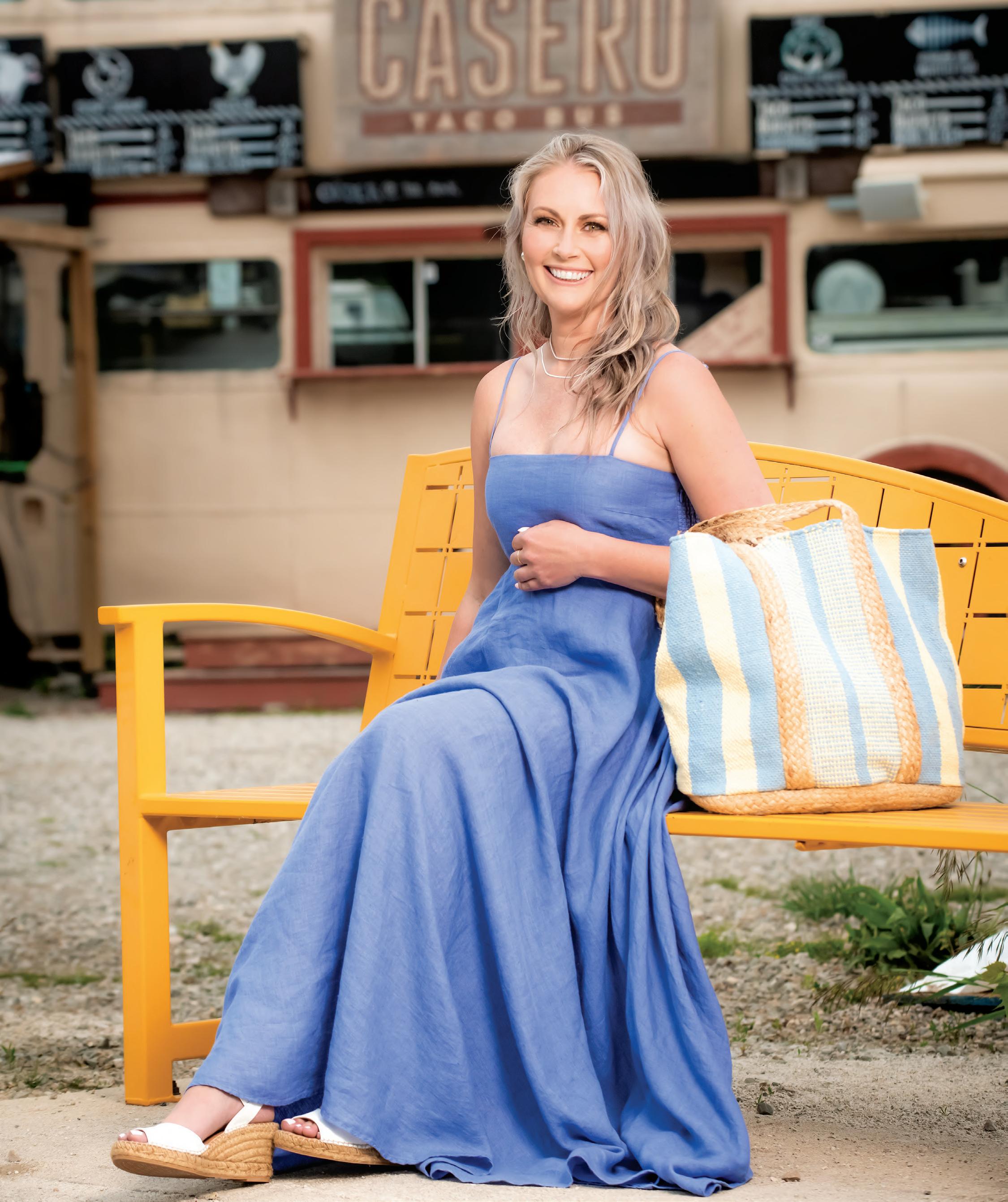
Originally from Meaford, Leisa recently relocated to Collingwood. Juggling her roles as a dedicated mother of two and a valued employee at a local law firm, she leads a busy life. She finds solace and joy in watching the sun set and going on leisurely strolls with her fiancé, daughters, and cherished canine companion, Compton.


Sara is the owner of Remind Spa and Remind General Store & Refillery in Southampton. Her enthusiasm extends beyond incorporating organic and natural products into our personal care routines and homes; she is equally passionate about their impact on the environment. Nevertheless, she understands the importance of balance and moderation, which is why she also has a deep passion for wine.
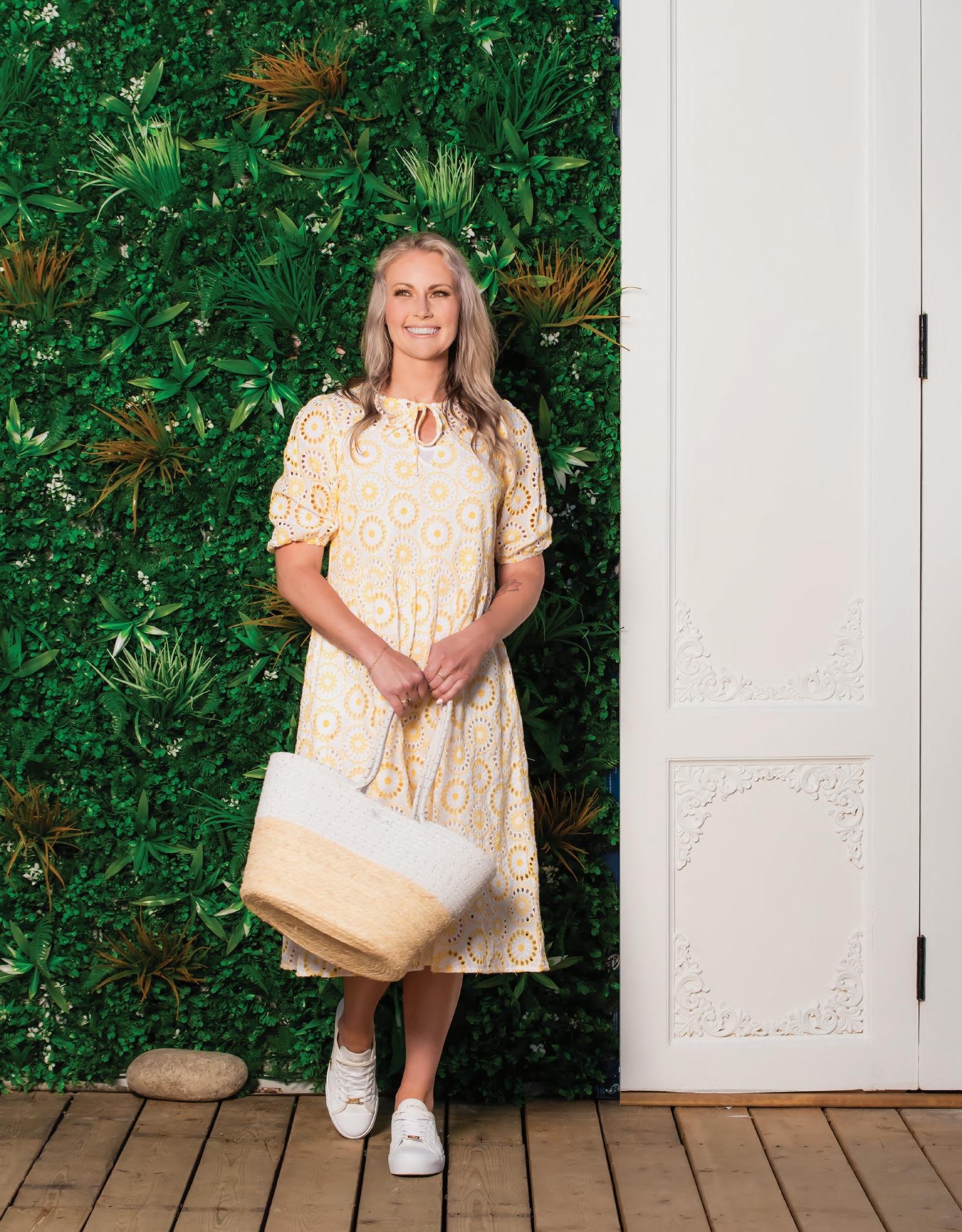

Emma moved to Collingwood a year and a half ago. Her passion for the area’s culture and cuisine, prompted her to establish the Instagram account @ whatsupcollingwood – her captivating posts and insider recommendations have transformed her page into an indispensable guide for uncovering Collingwood’s finest offerings.

Clothing, accessories and footwear from Cora Couture, Downtown Collingwood.
 EMMA DAHLGREN
EMMA DAHLGREN
18kt yellow gold Lunaria hoop earrings and bangle,18kt yellow gold Jaipur link mixed link bracelet and necklace by Italian designer Marco Bicego.

D.C. Taylor Jewellers, Downtown Collingwood.
LEISACHRISTIE

















waters of a new lifestyle, has given way to a resolute commitment. Many people have chosen to settle in our region, abandoning their trial residences and seeking homes that truly fit their needs—a term known to many as “right sizing”. This trend is particularly noticeable among the younger luxury clientele who are driven by a desire for more spacious dwellings or soughtafter locations.
What a beautiful time of year to be enjoying the true four-season experience the Southern Georgian Bay region offers. As I write this, the sun is shining, and locals and visitors are flocking to local golf courses, hiking trails, beaches, patios and so much more. To me, it is quite obvious why people have opted for clean air and an active lifestyle over the shadowed and often
crowded streets of city living.
While many believed the exodus from bustling city life was simply the result of the Covid-19 pandemic, it is clear that this fundamental paradigm shift is here to stay. Let us take a moment to explore how this trend, among others, continues to shape our local market activity.
A Local Movement: The experimental phase, marked by individuals testing the
Seasonality: The market unmistakably reflects the ebb and flow of seasonal preferences. Currently, prospective buyers are fervently searching for their ideal summer retreats, resulting in somewhat subdued demand for winter “chalet” type properties typically seen in the Blue Mountains community. However, as summer transitions into fall, we anticipate a renewed surge of interest refocused on desirable winter retreats.
Buyer Sentiment: Buyers who have contemplated investing in our region have finally made their decision. They are off



C olli ng wood Fas h i on Wee k is a w ee k - l ong , p r o f e ssi ona ll y

e x ecute d e v en t h ig h ligh t i n g t he w or ld -c l a ss f a s h i o n e x pe ri e n ce s t h a t C olli n gwo o d ’ s Do w nto w n ha s to o f f e r.
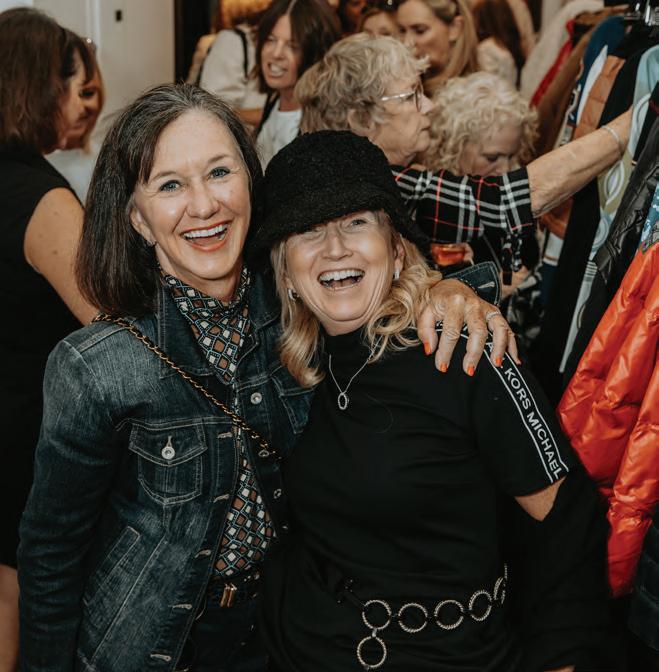


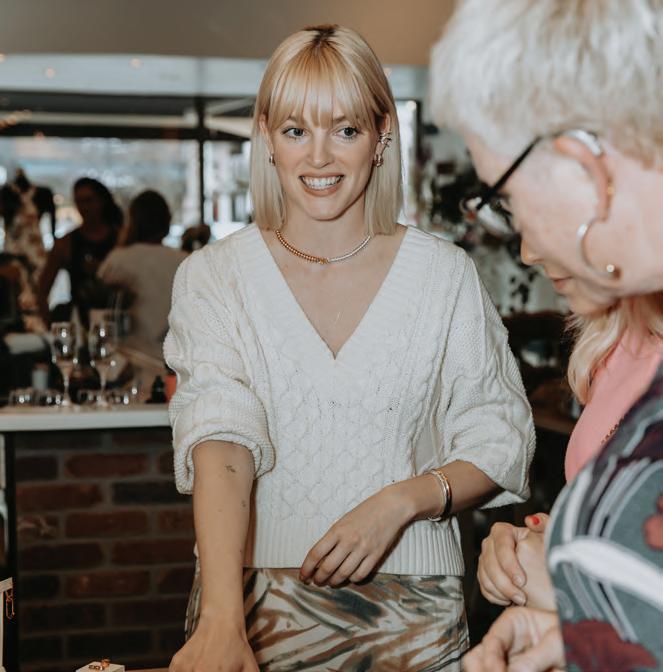

c o l li ngw oodfa s hion w e ek .co m



the fence! Despite concerns about inflation and potential interest rate hikes, buyer sentiment remains positive, with many believing that our market has reached its bottom. This optimistic outlook is manifested in the escalating month-overmonth sales figures and the growing sales volume observed in numerous local preconstruction projects.
Let us dive into the statistics for a moment. Traditionally, the months of April and May tend to mark the peak of the Spring market as it relates to new listings. As expected, the month of April brought forth an increase of 2.5% in new listings and an 8% rise in active listings, compared to the previous month of March. At time of writing, we anticipate similarly positive figures for May’s new listing count as well. Turning to sales, the substantial month-over-month increase of 20%, Aprilover-March, backs up our assertion that buyers have regained confidence and are actively back in the market. Despite this
resurgence, the overall market remains remarkably stable, with prices maintaining their monthly consistency and the average price holding at approximately $830,000. Moreover, it seems people still enjoy negotiation, with the sale-to-list price ratio hovering around 98%. As we progress into the summer months, we anticipate a more subdued market, yet we hold an optimistic outlook for a busy fall market with continued healthy conditions. Now, let’s discuss where to invest in real estate. As industry insiders, it is no surprise that we advocate for real estate investments. However, it is crucial to make intelligent choices that will appeal to future buyers. Did you know that millennials are the dominant generation entering both the primary and secondary markets today? Like any other generation, they gravitate toward specific features in a home. Whether you are a prospective seller or a homeowner considering property enhancements, it is essential


to consider the following: younger homeowners place increasing importance on sustainable housing initiatives, socially responsible building practices, and cutting-edge technology such as home automation. Furthermore, these buyers highly value family and communal living, leading to a growing preference for properties that accommodate extended families. Keep this top of mind as we know these features make properties more saleable and often contribute to a great return on your investment.
There is no doubt the future remains bright. While market fluctuations may persist, one fact remains evident: Southern Georgian Bay is an exceptionally desirable place to call home, catering to all generations. The region possesses vast potential for growth in terms of both price appreciation and development. As the transfer of generational wealth from baby boomers to millennials and beyond continues, our markets will be fueled for years to come. Coupled with increased immigration targets and an expected influx of over 400,000 retirees by 2025, I can confidently say that our journey, though occasionally bumpy, will ultimately be marked by positivity, equilibrium, and continuous expansion. Now is a great time to seize the opportunities at your fingertips and enjoy the ride!
“Ja net h a s h e l pe d us buy and sell s e v e r a l p r operties i n T h e Blu e Mou n tai n s S h e is brig h t , r espon s i v e , h one s t , w e l l c onn e c t ed an d r e all y goo d a t what she does She r e c ent l y li s t ed a n d s o l d our c h ale a n d w e w e r e s o gr a t eful t o ha v e he r as ou r Rea l t or S h e ha n d l ed al l of t h e detail s - f r om c ontrac t o r s t o cle a ne rs t o beautiful staging , pho t o s / dr o n e vid e o and e x c eptio n a l ma r k eti n g of ou r p r oper t y She t ook t h e stress out of the se l li n g p r o c ess I n e v e r y de a li n g wit h J a ne t , w e f e el suppor t e d and c o n fi d e n t that w e a re r e c eivin g the be s t guid a n c e po s sible She is p r o f es s io n al an d per s o n ab l e , a n d s he genui n ely cares about he r c l ient s ”

















Buying or Selling? Connect with our team for all your real estate needs. To view all our listings visit our website: AdvantageRealtyGreyBruce.com



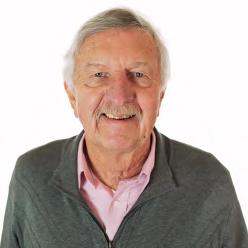


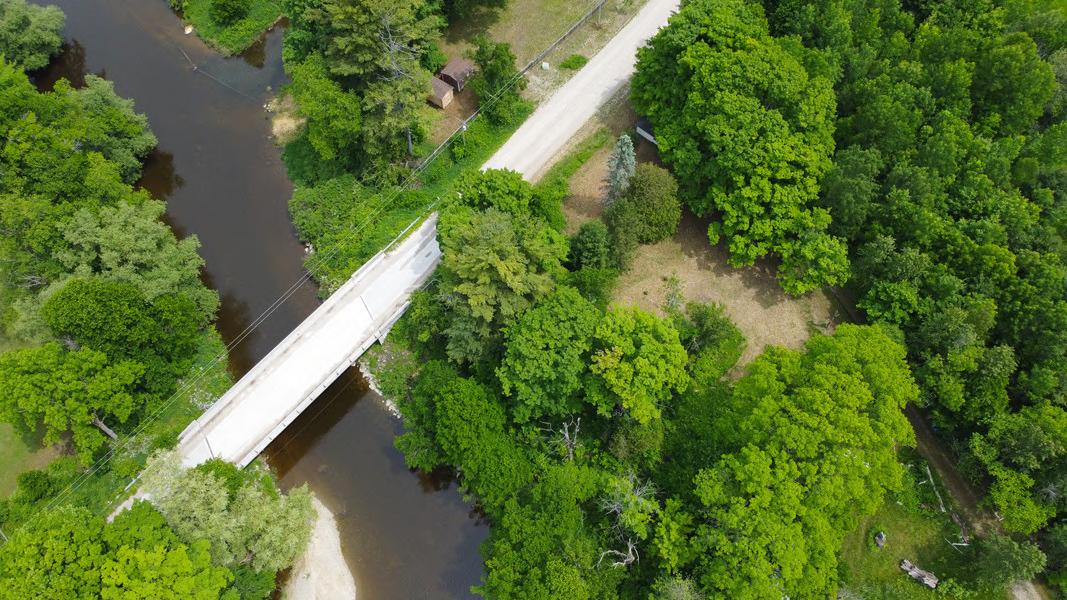
Office: 519-963-7746
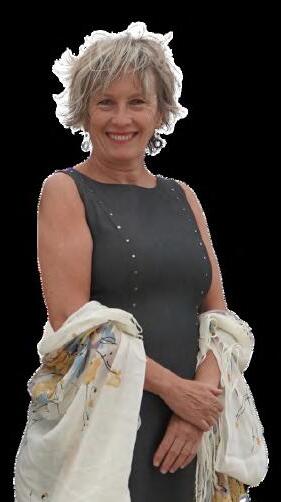
250 10th Street West, Owen Sound N4K 3R3


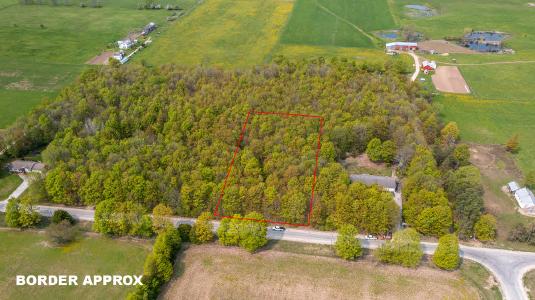














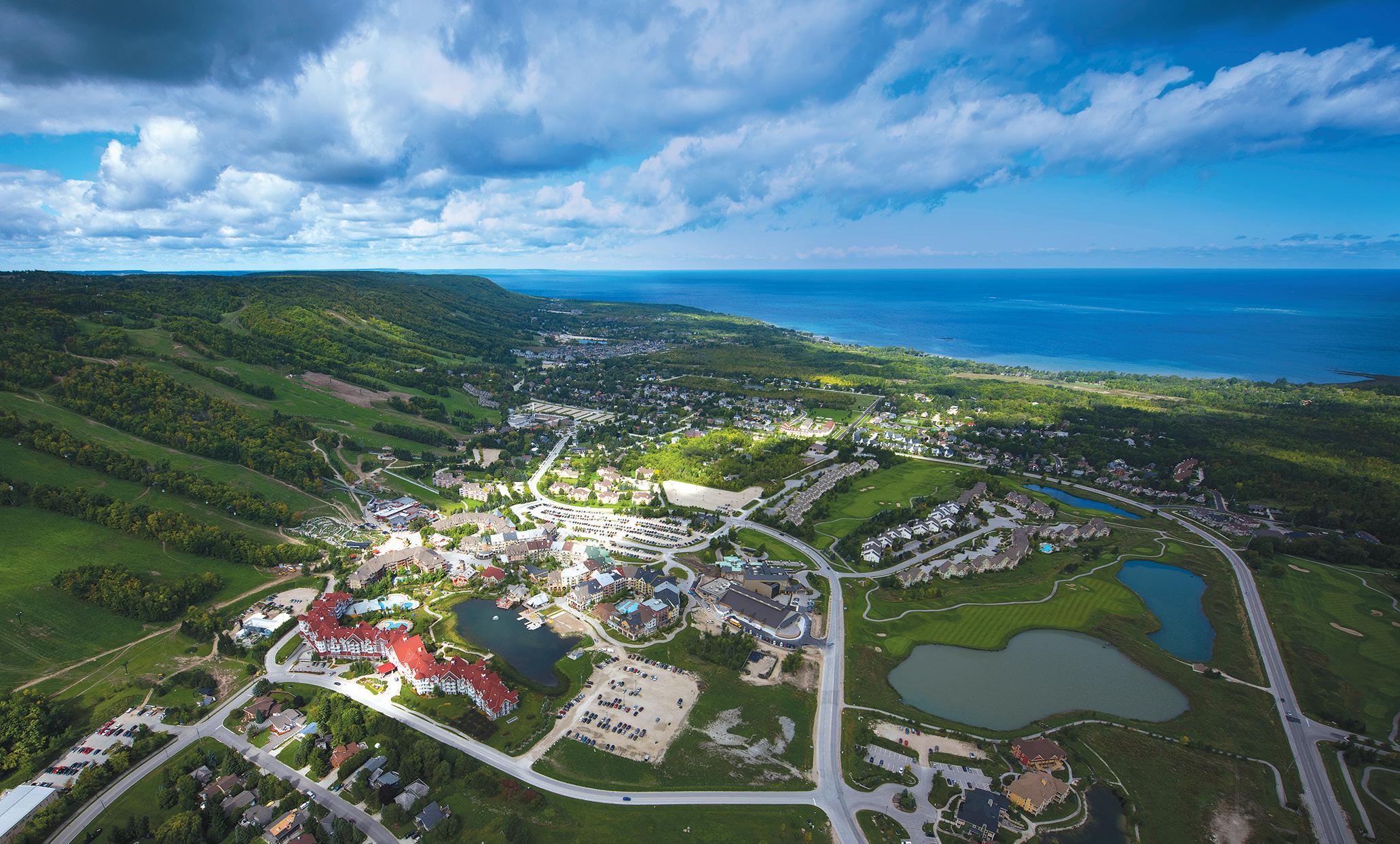










LISTED AT $859,000 | MLS® #40411868


STA approved location! This 2 bedroom, 2 bath, ground floor town home in the Historic Snowbridge community has spectacular views of the golf course from the open concept living, dining & kitchen area. This fully furnished cozy resort home is a welcoming getaway. It offers a quiet and private sanctuary from the back yard patio where you can enjoy the serenity overlooking green space. Amenities include a beautiful outdoor seasonal pool, paved trails into the Blue Mountain Village. Enjoy dining, shopping, entertainment and lifestyle choices. Use your vacation home for personal stays and generate revenue when you are not personally using it!
$1,150,000
Found in the much sought after area of Windfall. This home has a unique open floor concept, not found in other models. 3 bdrms, 4 baths, and second living space on the lower level complete with 3pc bath and laundry. Owner upgrades include granite counter tops, glass showers, stainless steel appliances, custom built-ins, and power window covers. Fully finished basement. Single car garage with loft, fully fenced backyard. Enjoy the trail system, walking distance to the Village, the SHED, with exercise room, sauna, gym and heated year round outdoor pools.
EAST SIDE SUNSET WATERFRONT AWAITS YOU!
Panoramic views of Georgian Bay from almost every window. Tucked into a protective cove right at Paynters Bay. Landscaped with natural stone, completed in 2022. Main living open concept with entrance from the 2 car garage. 3 bdrms on second level. Primary overlooking Georgian bay, with own balcony. Completely new lower walk out level. Buyers getting flooring options to be installed by seller at the sellers cost before or at closing. Lower level has heated floors, large rec room and bedroom. Enjoy a hot tub, bonfire, and a swim in your backyard. Need more space? No worries – a 12.5 x 15 4 Seasonal Bunkie will allow you to host even more. New garage doors, new shed. Docking for a 20ft boat, sea-doo’s, canoes, and more. Sonos built in surround throughout the house inside and out. Aqua aerobic septic serviced 2x yearly $265.00/yr. Hydro: $200 monthly. Propane $1600/yr.
















40421462

Rare private,acreage, well treed, spring fed pond, river, & off-grid cabin included.

$850,000 • MLS® 40404652
3
End Unit Townhome offers a spacious living space including a Main Floor Primary bedroom, Large Loft Area w/ a beautifully landscaped backyard.

$699,000 •
Just over 101 acres a short distance to the community of Meaford, and all of the four season adventures in the heart of beautiful Southern Georgian Bay.



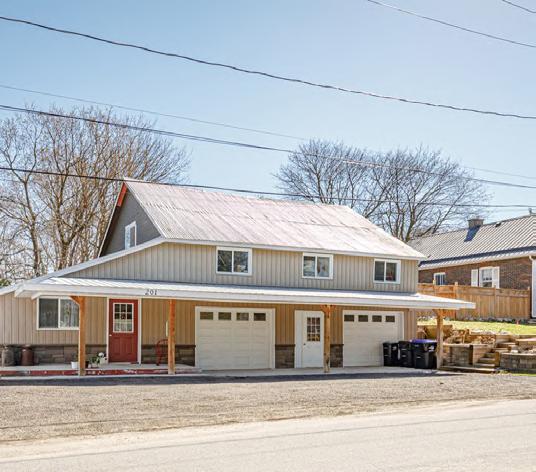
$1,300,000 • MLS® 40246200























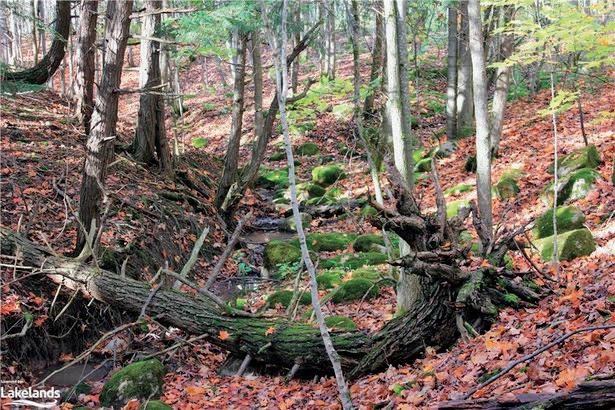







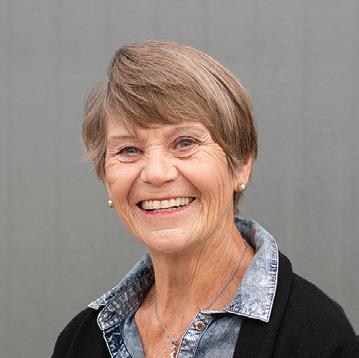
129TIMBERLANE.CA
This spectacular home features luxurious finishes throughout that are sure to impress even the most discerning buyer. The private, oversized lot has been meticulously landscaped for your enjoyment. Centrally located in the charming town of Thornbury. Offered at $2,250,000 MLS: 40414693
137TIMBERLANE.CA
On a coveted lot at the end of a Cul de Sac is a magnificent home. Walking distance to Georgian Bay, a short walk or bike ride along the Georgian Trail to the shops and restaurants of Thornbury. This fully upgraded Varley model show home with superior finishes is the ultimate home for family life & entertaining.
Offered at $2,890,000 MLS: 40417348
259CAMERON.CA




This spectacular waterfront property features 100 ft of Georgian Bay shoreline, a matured treed lot and a rare sandy beach of unparalleled size. The home takes full advantage of its gradual elevation change allowing for expansive water views from almost every room in the home.

Offered at $3,250,000 MLS: 40385162
173 HIGH BLUFF LANE
Experience luxury living at its finest with this stunning newly built home. Ideally located within close walking distance to downtown Thornbury and Georgian Bay, this elegant residence boasts over 4500 square feet of thoughtfully designed living space with an array of impressive features.


Offered at $2,295,000 MLS: 40416584



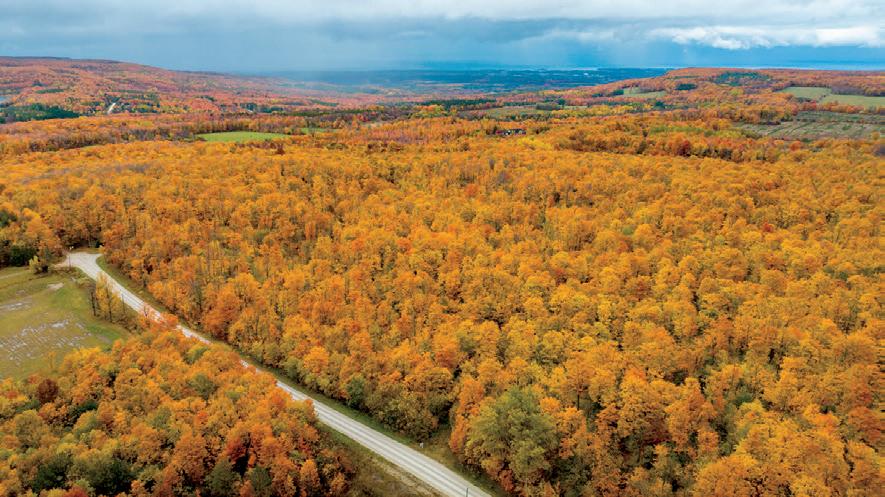



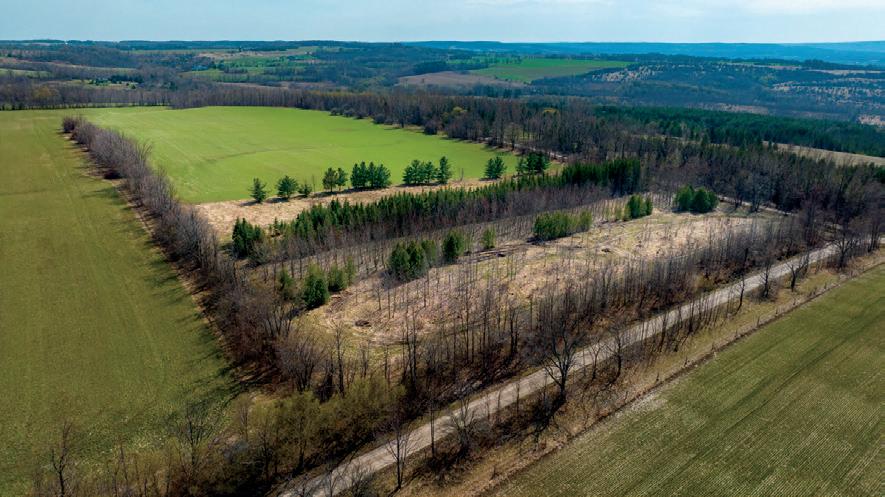



“I was drawn to the contrast between the fiery sunset and the dark sky, which created a dramatic and mysterious mood—I wanted to capture the feeling of wonder. I also wanted to show the beauty and diversity of nature, and how it can surprise us with unexpected colors and shapes. I used a polarizing filter and a low exposure to make the sky look darker and more intense, and added a vignette above the horizon which enhanced the effect of the sunset. I think this image tells a story of nature’s power and invites the viewer to imagine what lies beyond the horizon.”

Bill Elder is an accomplished nature photographer from Owen Sound. Since his early years, he has possessed a fascination with the natural world and is dedicated to preserving its beauty through the lens. Beginning as a hobbyist in his twenties, he recognized photography’s potential as a means to intimately engage with nature. Bill captures the essence of landscapes, wildlife, and flora across various seasons and environments—through his evocative imagery, he aspires to help other understand and value our local ecosystems.
“Sound Haven” is a gorgeous, four-season waterfront estate on Georgian Bay near Meaford. In sync with nature, you’ll find a 4-bedroom, 5885 square foot Craftsman-style home designed for gathering, lounging, movement, and retreating with a book. Explore the outdoors to see the tennis court, swim spa, private boat launch, sheltered harbour, watercraft lift, and impressive natural stone patios and walkways for meandering around this incredible property. Dive in to a Georgian Bay life by calling James, a born-and-raised Bay boy. For more information scan the QR code, or go to: mcgregorhahnegroup.evrealestate.com.




And, if you're thinking of selling, we have a global network of buyers looking for what you have.
 Letitia Baldauf Sales Representative, MSL, MBA Max Hahne Broker, IRES**, RSPS†
Letitia Baldauf Sales Representative, MSL, MBA Max Hahne Broker, IRES**, RSPS†
 James McGregor Sales Representative, CIPS*
James McGregor Sales Representative, CIPS*
Scan CHECK IT OUT!




Wine Country Ontario




Guide

